Blog
Privacy Notice and Legitimate Interests Assessment
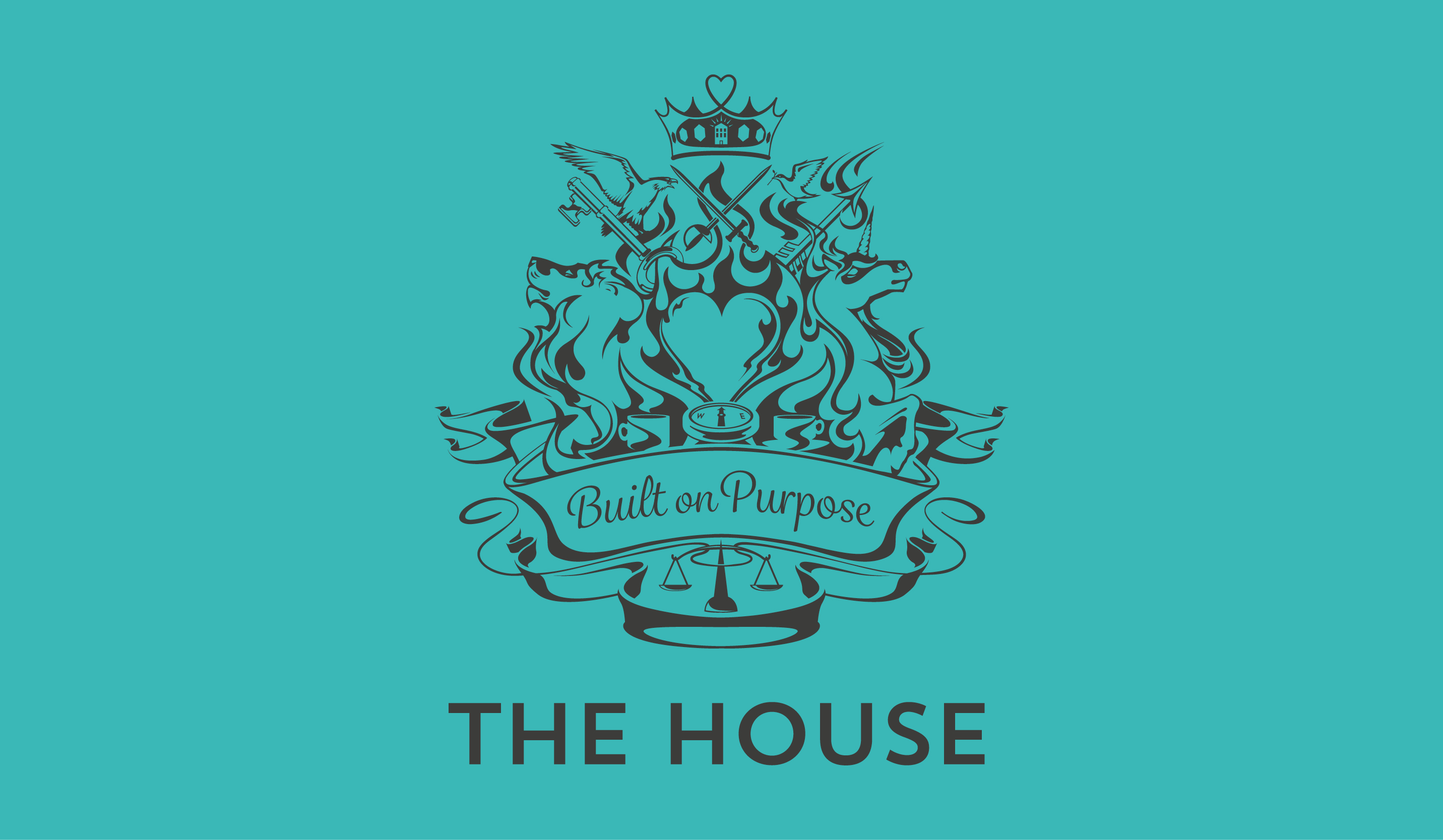
Privacy Notice
The House collects and processes the contact details of businesses and business leaders that we believe could benefit from our products and services, or from the intellectual property that we develop and provide freely (such as Purpose magazine).
We collect and process contact details based on two separate grounds:
- Opt-in basis: we use contact details that people have actively shared via our opt-in sign-up form
- Legitimate interest basis: We use contact details from our legacy pre-GDPR database, and from publicly available sources such as company websites, where we believe there is a legitimate interest for our business, and that the use of that data is proportionate and has a minimal privacy impact.
We engage in unsolicited B2B communications where we have a strong reason to believe that business we are contacting could benefit from the offer contained within the communication; i.e. there is a clear logical connection to their business profile. We assert this as a legitimate interest of our business, as per Article 6.1 of the General Data Protection and Regulation (GDPR). We collect contact details for unsolicited B2B communications through publicly available sources such as company websites. We do not purchase marketing lists from third parties.
In accordance with the provisions of GDPR, we do not collect or process the contact details of sole traders or partnerships unless they have explicitly opted in to receive updates from us. We have made our best efforts to delete all sole trader and partnership contact details held before 25 May 2018, screening them according to business description and email address type. If you are a sole trader or partnership business and are still receiving email communications from us, please contact us at house.manager@thehouse.co.uk and we will remove you from our database.
We use third-party software Mailchimp and Zoho to store contact details. We use contact details only to communicate directly about our own products, services, events and platforms, and do not share data with any third parties.
Please report any violations to GDPR principles that have affected you to house.manager@thehouse.co.uk.
Legitimate Interest Assessment
Overview
Under certain circumstances, we assert a legitimate interest, in line with Article 6.1 of the General Data Protection Regulation, to collect and process basic data in order to make unsolicited communications to other businesses.
Purpose Test
Why do you want to process the data – what are you trying to achieve?
We aim to engage in unsolicited direct marketing that raises awareness of issues related to the “business as a force for good” movement and lets mission-led organisations know that we are able to help them. For example, we might send a copy of Purpose, a magazine we produce, to the head of a mission-led organisation in order to introduce ourselves and our services.
Who benefits from the processing? In what way?
We benefit by raising awareness of our business and winning new consultancy contracts. The recipients benefit by receiving potentially useful information about developments in the “business as a force for good” movement, and by using our services if the direct marketing leads to a commercial relationship.
Are there any wider public benefits to the processing?
The core of our business offer, as well as the intellectual property that we share freely, relates to increasing the positive social and environmental impact of business. As such, our unsolicited direct marketing.
How important are those benefits?
The benefits are indirect and a small part of a much wider effort. We do not claim that they are an important component of our legitimate interest.
What would the impact be if you couldn’t go ahead?
We would be limited to communicating only with businesses who are already aware of our consultancy and had explicitly opted in. This would have a material impact on our ability to grow our business.
Would your use of the data be unethical or unlawful in any way?
No.
Necessity Test
Does this processing actually help to further that interest?
Yes. It allows us to expand our direct marketing activities.
Is it a reasonable way to go about it?
Yes. It is in line with normal B2B marketing industry practice.
Is there another less intrusive way to achieve the same result?
No.
Balancing test
What is the nature of your relationship with the individual?
We make unsolicited communications where there is an existing or potential commercial relationship, including partnerships to jointly provide services to others.
Is any of the data particularly sensitive or private?
No. It is either publicly available or has already been collected through direct contact with the individual, e.g. exchange of business cards or emails. For unsolicited B2B communications, we collect and process only name, work email address and work postal address data.
Would people expect you to use their data in this way?
Yes.
Are you happy to explain it to them?
Yes.
Are some people likely to object or find it intrusive?
People may of course choose to opt-out, but we believe that it is highly unlikely that the collection and processing itself would be considered objectionable or intrusive. We have received no complaints or objections on such grounds to date.
What is the possible impact on the individual?
There is minimal negative impact.
How big an impact might it have on them?
The worst impact would be the inconvenience of opting out of our database.
Are you processing children’s data?
No.
Are any of the individuals vulnerable in any other way?
No.
Can you adopt any safeguards to minimise the impact?
The impact is already minimal.
Can you offer an opt-out?
Yes, all communications will allow for a clear opt-out.
Purpose Issue 3: How to Launch Your Purpose
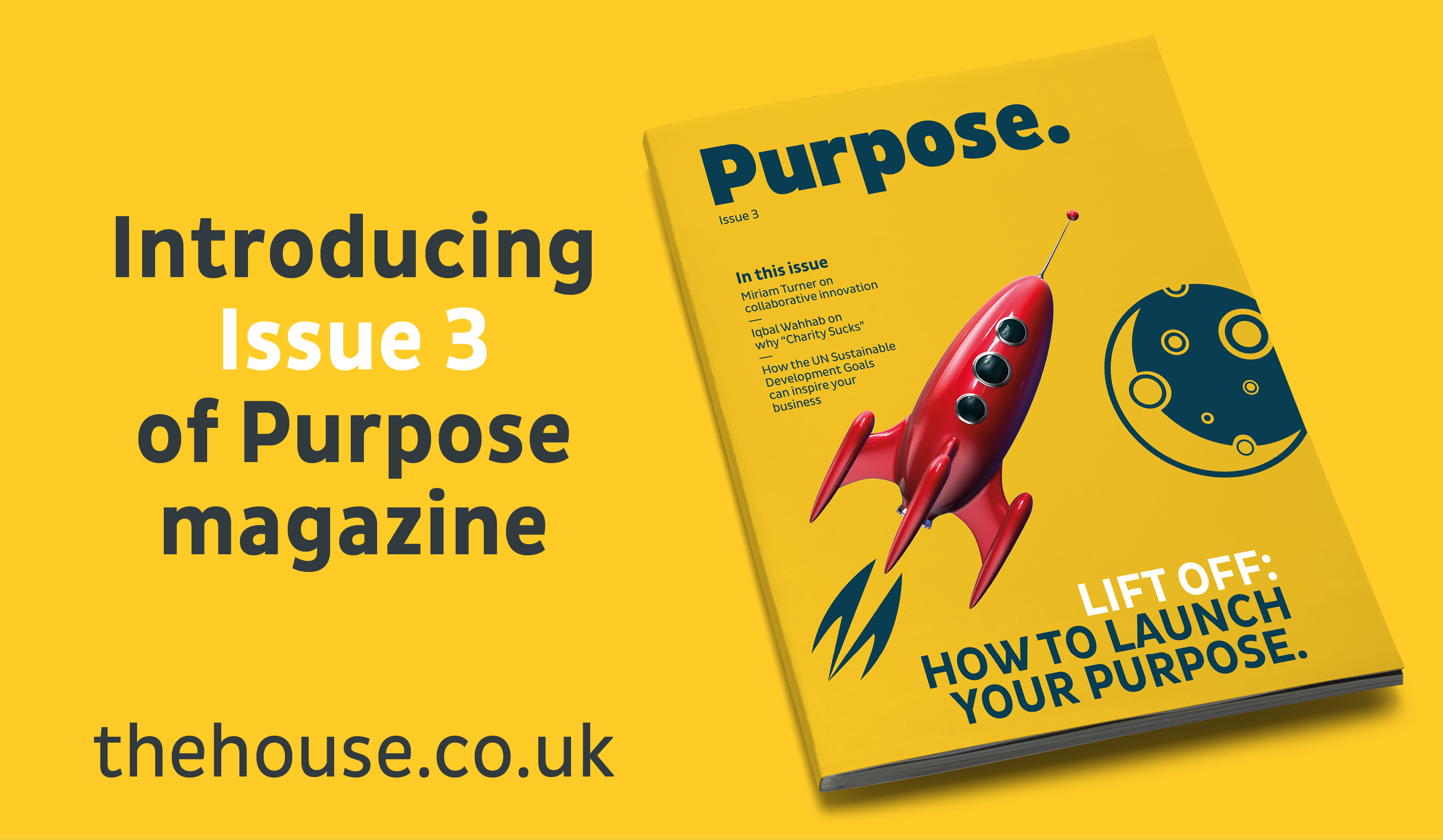
We're pleased to bring you Issue 3 of Purpose magazine, a free magazine for creative and inspired leaders who are using business as a force for good.
This issue is all about putting purpose into action. Inside you'll find:
- A Q&A with Iqbal Wahhab, restauranteur and "reluctant social entrepreneur", on how to convince colleagues that a social mission can drive profits;
- An interview with Miriam Turner, head of disruptive innovation at Friends of the Earth, on how to innovate collaboratively;
- Tips from Sophie Lawrence of KKS Advisors on how to take advantage of the unprecendented economic opportunity presented by the UN Sustainable Development Goals;
- Plus plenty of insights from The House team on how to bring your purpose to life.
Click here to view or download a PDF of Issue 3.
We hope you enjoy it. Call Steve or Graham on 01225 780000 if you'd like to talk to us about partnering to make business a force for good, contributing to future issues or working with us to turn your company's purpose into a winning strategy and an irresistable culture.
Why we joined the B Corp movement
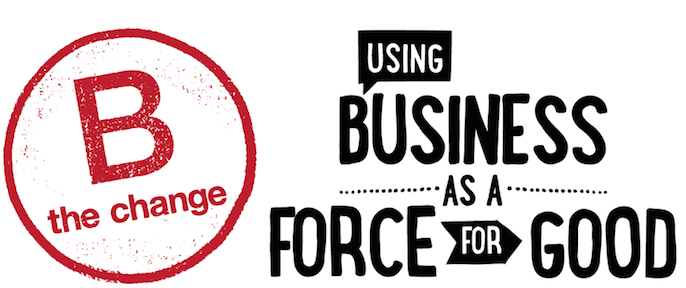
We’re very proud to have joined over 2000 B Corps around the world in a global movement to make business a force for good.
We joined B Corp because we believe that there is now an unprecedented opportunity for a generation of authentic, motivated leaders to “do well by doing good”.
We call this “purposeful advantage”: finding the sweet spot between what you’re good at, what your customers need and how you can make a difference.
Our job at The House is to help leaders and businesses make that purposeful advantage a reality – and there are three main reasons why we felt that becoming a B Corp would help us do that.
#1 B Corp is all about positive impact
We believe that the successful businesses of the future will be those that go beyond CSR and put “purpose beyond profit” at the heart of their core strategy, products and services.
That’s why B Corp’s notion of “impact business models” struck a chord. We could see right away that the movement was about much more than simply reducing harmful impact. B Corp is about creating positive impact using the power of business, something we were already 100% behind.
#2 B Corp is a movement
To make business a force for good, we have to work together.
All of our experiences with B Corp to date have shown clearly that it is far more than a kitemark. It is a living, breathing movement of inspirational leaders with a real desire to collaborate for change.
The B Corp community is becoming a place for businesses of different sizes and sectors to come together, overcome the limits of ‘competitive advantage’ and instead partner to create ‘purposeful advantage’, where social and commercial success grows hand-in-hand. As B Corp says, to compete not just to be the best in the world, but to be the best for the world.
#3 B Corp is rigorous
We spend a lot of our time helping other companies to embed their purpose and culture in order to make sure that it’s something they can live day in, day out, at every level and in every decision. Going through the B Corp assessment process helped us look at our own backyard with fresh eyes, nudging us to become more conscious about how and why we do what we do.
Most importantly, it’s a tool that propels you further along the road from intention and aspiration to concrete action and living your purpose.
Visit BCorporation.uk to learn more - or get in touch at hello@thehouse.co.uk.
We’ve become a B Corp
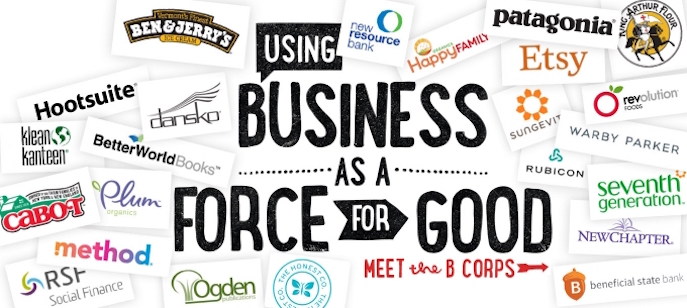
We're delighted to announce that The House has officially joined the B Corp community, a global movement of people using business as a force for good.
Becoming a B Corp will boost our efforts to help business leaders redefine what success looks like and reap the benefits of embracing purpose beyond profit.
It will also place us at the heart of a worldwide community of over 2000 like-minded, impactful businesses who are collaborating to create real change. Businesses such as Ella’s Kitchen, JoJo Maman Bebe, Pukka Herbs, Divine Chocolate, Neighbourly, Ben & Jerry’s, Patagonia and Etsy.
Like us, the B Corp movement believes in “doing well by doing good”. It’s made up of for-profit companies that voluntarily meet rigorous standards of social and environmental performance – a bit like Fairtrade for coffee – as well as committing to business models that deliver positive impact.
In over 50 countries, B Corps are creating higher quality jobs, improving the quality of life in communities and encouraging all businesses to put positive impact at the core of their products and services.
As a consultancy that specialises in purpose and culture, we look forward to working alongside other companies in the B Corp movement to find the most effective ways to translate vision into action. We also look forward to connecting all of our clients, partners and friends to this new wellspring of insight, shared learning and business opportunity.
The Purpose Map
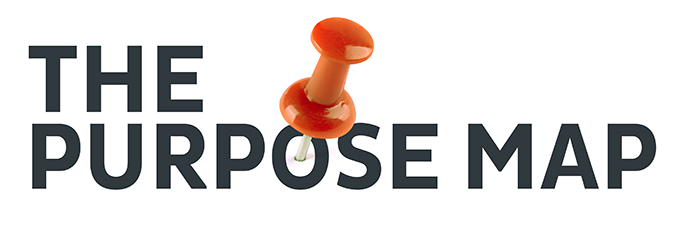
Our Purpose Map charts forward-thinking businesses that have secured "purposeful advantage" by putting a purpose beyond profit at the heart of what they do. Click the pins to learn more about each business. The Purpose Map is constantly updated: to nominate a business, email us at hello@thehouse.co.uk.
How Authentic Leaders Transform Themselves and Their Company Cultures
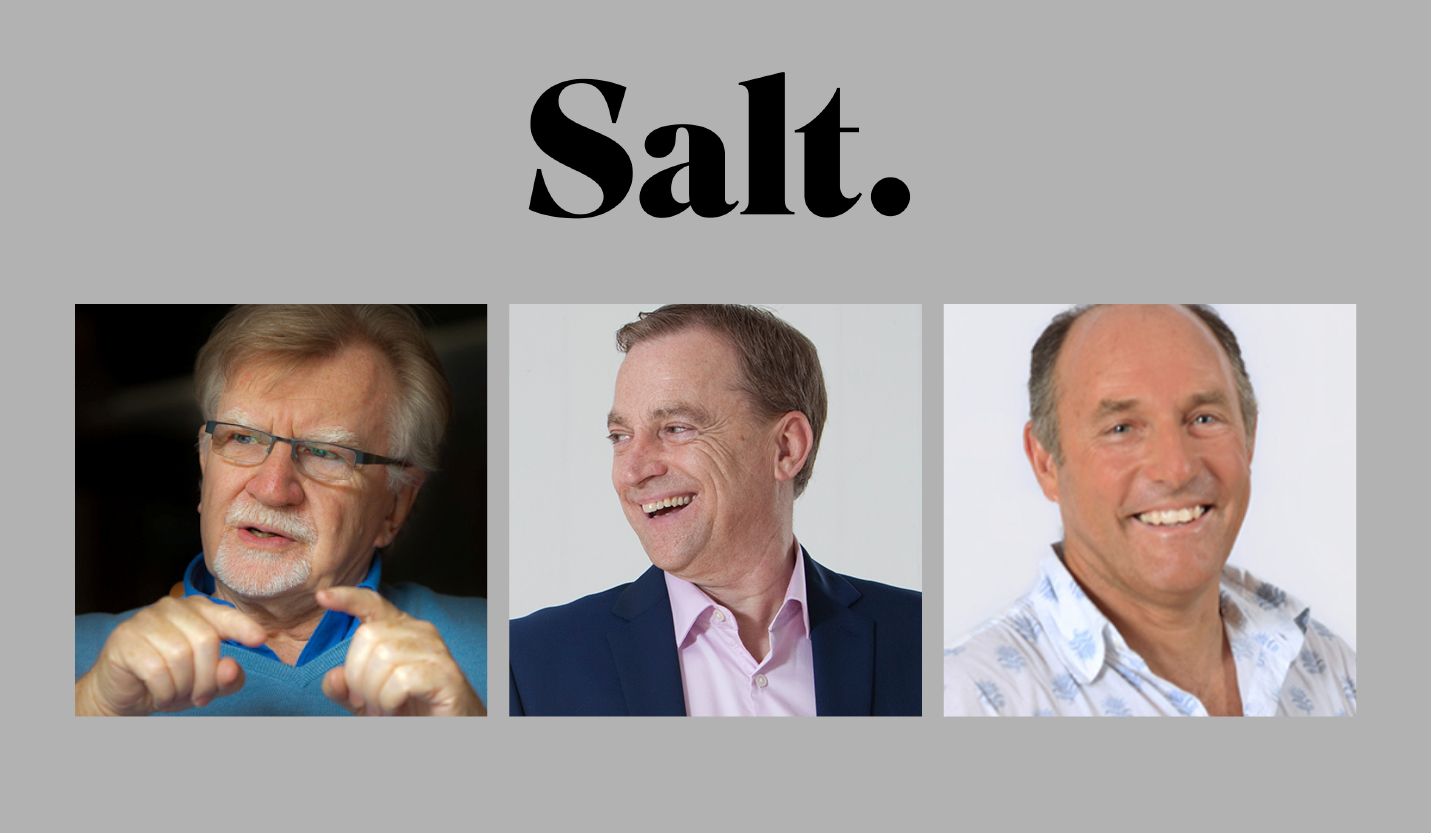
This is an abridged version of an article that originally appeared in SALT magazine - read the full roundtable article here.
Authentic leadership. Is it a special trait or natural quality of a select few, or something to which we can all aspire? After working with CEOs to transform organisational cultures for over ten years, we are more and more convinced that all of us have the ability – and the responsibility – to become truly authentic leaders.
We arranged a roundtable for our friends at SALT magazine to get to the bottom of this important question. Our co-founder Graham Massey spoke to Richard Barrett of the Barrett Values Centre, author of several books on trust, values and leadership including The New Leadership Paradigm, and Geoff McDonald, director of leadership consultancy Bridge Partnership and former Global VP HR of Marketing, Communications, Sustainability & Water at Unilever. The results were enlightening.
The Authenticity Gap
“I’m really, really questioning how authentic people are as leaders in our corporations today,” says Geoff. “They are very authentic when they’re with their families, but something happens to people when they walk through the door at work.”
It’s something we’ve probably all felt at some stage of our career: donning a mental suit of armour before starting the working day. But what causes this “authenticity gap?”
Part of the problem lies with the downward pressures flowing from organisations and shareholders. Many leaders are trapped between following what they truly believe in and want to achieve, and what organisational pressures force on them.
As Geoff puts it: “One of the real evils in the corporate world today is this absolute focus on driving efficiency. With that comes short-termism and an inability to have any slack in the system – leaders find it near impossible to go to the market and say, ‘give us some time to make this work.’”
Overcoming Fear
Fear is another factor, says Richard.
“How can a leader be a leader when they haven’t really forged their own self-mastery?” he asks. “You need to develop the emotional intelligence to understand your fears and how your fears affect your decisions, your fellow employees and the company.”
Mastering fear allows leaders to evolve from a Darwinian mindset of basic career survival to a place where they can find authentic meaning in their work: a personal purpose beyond satisfying their own survival or status needs. Once they grasp this, authentic leaders can bring their purpose to life through collaboration and interdependence with others.
“Today’s senior leaders need empower young people to create a new leadership paradigm that’s more about what’s best for the common good than about what’s in it for me,” Richard says.
Everyone Benefits from Authentic Leadership
Of course, the “common good” also includes the wellbeing of your team. Authentic leadership allows you to create values-led cultures that build trust, make work meaningful and drive commercial outperformance. Such cultures unleash the creativity and enthusiasm of employees so that they bring what Richard calls their “discretionary energy” into play.
“Workplaces can be amazing places. They can truly be places where people express themselves and reconnect with who they really are,” says Richard. “Leadership should be about creating a framework for people to connect and contribute, grow and expand, flower and flourish.”
This drives performance. Consider the recent research from merchant bank Ocean Tomo that suggests that over 80% of the value of the S&P 500 now consists of intangibles such as culture, goodwill and intellectual capital. In this context, investment in authentic leadership and strong culture (which, as Richard points out, is a measurable factor) is vital.
Let’s take up the challenge
It's clear to us from our work that leaders need to take steps to overcome fear, uncover personal purpose and thus allow themselves to become truly authentic. Without this, it's very difficult to build a healthy, values-led envrionment within an organisaiton. It’s hard work, but the rewards for success are enormous. Let’s take up the challenge and make ourselves into the best, most authentic leaders we can be.
How to Ground Your Purpose in Reality

When you set out on your purpose journey, what steps can you take to ensure that your purpose will be genuinely transformational for your business?
Every purpose journey must start with an intensive "dig" phase - an effort to research and analyse the past, present and future trends that affect your business. Only through a thorough "dig" phase can you ensure that your purpose is properly rooted in the political, economic, social and technological context in which you operate. This will give your purpose real purchase on your day-to-day operations, rather than being an abstract aspiration.
How to dig:
Dig into the political: Consider the direction of regulation and policy when it comes to things like emissions. LEGO, for instance, is investing c. $150 million to find alternatives to the oil-based plastics it uses to make its bricks. In LEGO’s own words, its purpose is “not just about products, it is about realising the human possibility”. Engaging with the political can also mean aligning your purpose with positive and constructive political movements, as Ben & Jerry's has repeatedly done, or signing up to shared political commitments such as the UN Sustainable Development Goals, as global brands like Pearson, BT and Microsoft have done.
Dig into the economic: By this we don’t mean the ups and downs of the S&P500 or the FTSE, but the broader trends affecting your sector, the nature of work in your industry and, of course, your customers. Is your sector facing consolidation? How will you attract the talent you need – not just next year, but over the next 20 years? What does the emergence of a middle class in the Global South mean for your company - and your purpose?
Dig into the social: What do major demographic trends such as urbanisation or the rapidly ageing population mean for your customers? How can you respond purposefully? For example, brands like IBM are embracing the potential of greener “smart cities” as part of their core mission. In the same way, UK bank Barclays is responding to the social challenges experienced by an aging population through initiatives such as its “Digital Eagles” campaign, which aims to help older generations build online skills.
Dig into the technological: Technology is the wild card that disrupts the political, economic and social dimensions. But it can also enable you to deliver your purpose on a larger scale. Financial services firms, for example, are taking advantage of greater mobile penetration in Africa to make money services available to legions of previously “unbanked” people. We’ve also been inspired by Vodafone’s initiative to create a ‘hidden’ app that allows women in Turkey to secretly report domestic violence. The app has been downloaded by 24% of smartphone-owning women in Turkey, and represents an impressive manifestation of Vodafone’s purpose to “transform societies and contribute to more sustainable living”.
Beginning your purpose journey with a thorough “dig phase” is crucial. Putting in the hard yards from the start will bring a lot of “reality” into the equation early on and prevent your purpose-led vision from becoming too abstract and ephemeral.
This is an abridged version of an article that originally appeared in Sustainable Brands - click here to read the full article.
Wishing you a mischievous Christmas from everyone at The House

"I just wish Evie could be naughty like other children"
- Evie's Mum
Be careful what you wish for this Christmas.
Thanks to Designability's groundbreaking Wizzybug powered wheelchair for the under-fives, 4-year-old Evie's severe cerebral palsy no longer stops her from joining in with the other kids and getting up to all sorts of mischief.

This Christmas we are proud to be supporting Designability, a national charity that uses the power of design and innovation to create life-changing products.
As well as the Wizzybug (pictured above), Designability has developed a Day Clock that helps people with dementia maintain their daily routine, and custom bikes to help people with restricted growth enjoy the great outdoors.
Designability relies heavily on donations to research and develop its products, so if you would like to support life-changing innovation this Christmas, please visit:
http://www.designability.org.uk/support-us/donate/
To see our full 2016 Christmas card, please click here.
Purpose Issue 2: How Culture Creates Purposeful Advantage
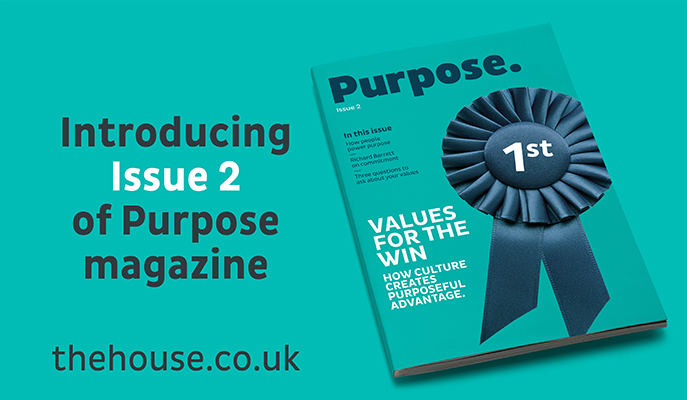
We're very pleased to bring you the second issue of Purpose magazine, our free resource for leaders who share our view that business can and should be a force for good - and see the potential of the £130bn purpose economy.
Issue 2 is all about values and culture. In it, we pose the question that every purposeful leader must ask themselves: are your values fit for purpose?
Purpose works, but it needs people to drive it. To create purposeful advantage, it's vital to get your values and culture right. Successful business leaders know that culture drives people's behaviour, product and service innovation and customer experience.
In this issue, we take an in-depth look at what values are, what they do, how they can be measured and how they can serve as useful tools for activating your purpose and driving business growth. This includes articles on:
- Three questions to ask about your values
- Guest column from renowned values expert Richard Barrett on culture and employee commitment
- Tips on how to measure your culture and values
Values are the missing half of the equation for many purposeful businesses. We hope you find Issue #2 thought-provoking and look forward to your feedback. Please get in touch with Steve or Graham on 01225 780000 if there is anything that you’d like to discuss further.
To download a PDF of Issue 2, click here - or to request a physical copy, please email us at hello@thehouse.co.uk.
To download a copy of Issue 1, please click here.
Introducing Purpose Magazine
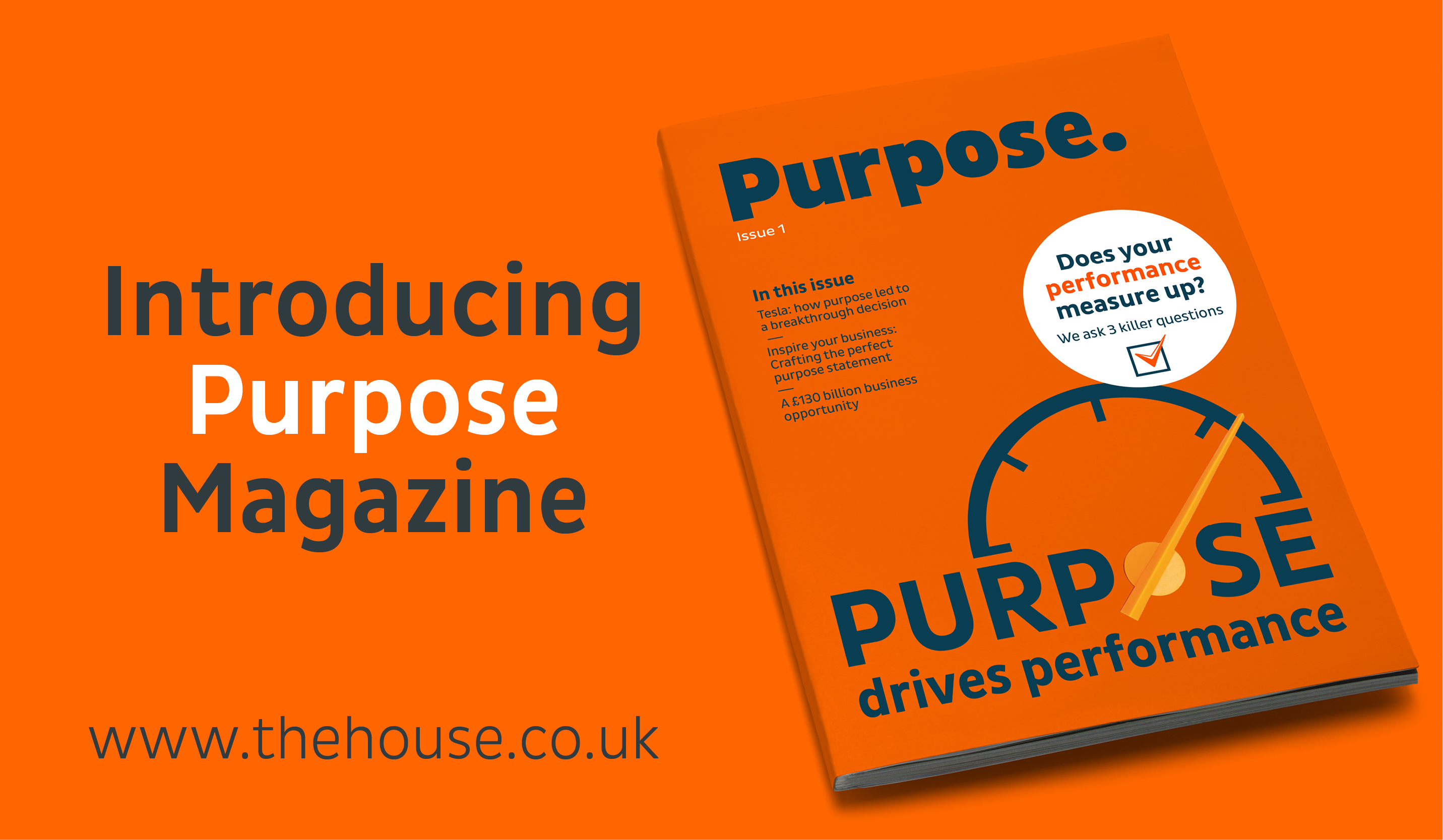
Welcome to Purpose - a new magazine that aims to help leaders secure “purposeful advantage” by making business a force for good.
Our first issue includes insights on:
- The commercial case for audacious purpose
- What purpose is - and what it isn’t
- How to craft a purpose statement that will inspire your company
More and more businesses are waking up to the transformational power of purpose. The conversation has shifted from “why does my business need a purpose?” to “how can I define, implement and communicate purpose?”
Purpose is now fully mainstream. This is great news, but more mainstream purpose becomes, the greater the danger that its meaning becomes diluted. Now more than ever, the “business as a force for good” movement has to be crystal clear about what we mean by “purpose”.
This is why we’ve created Purpose magazine. In the coming issues, we will articulate how businesses and brands can outperform the market and make a positive difference by harnessing the power of purpose-driven vision, values-led culture and creative storytelling.
Purpose is a free resource for business leaders who share our belief that business can and should be a force for good - and who see potential in the £130 billion purpose economy.
To download your PDF copy (1.6MB), click here - or to request a physical copy, please email us at hello@thehouse.co.uk
How to craft an inspiring Purpose Statement
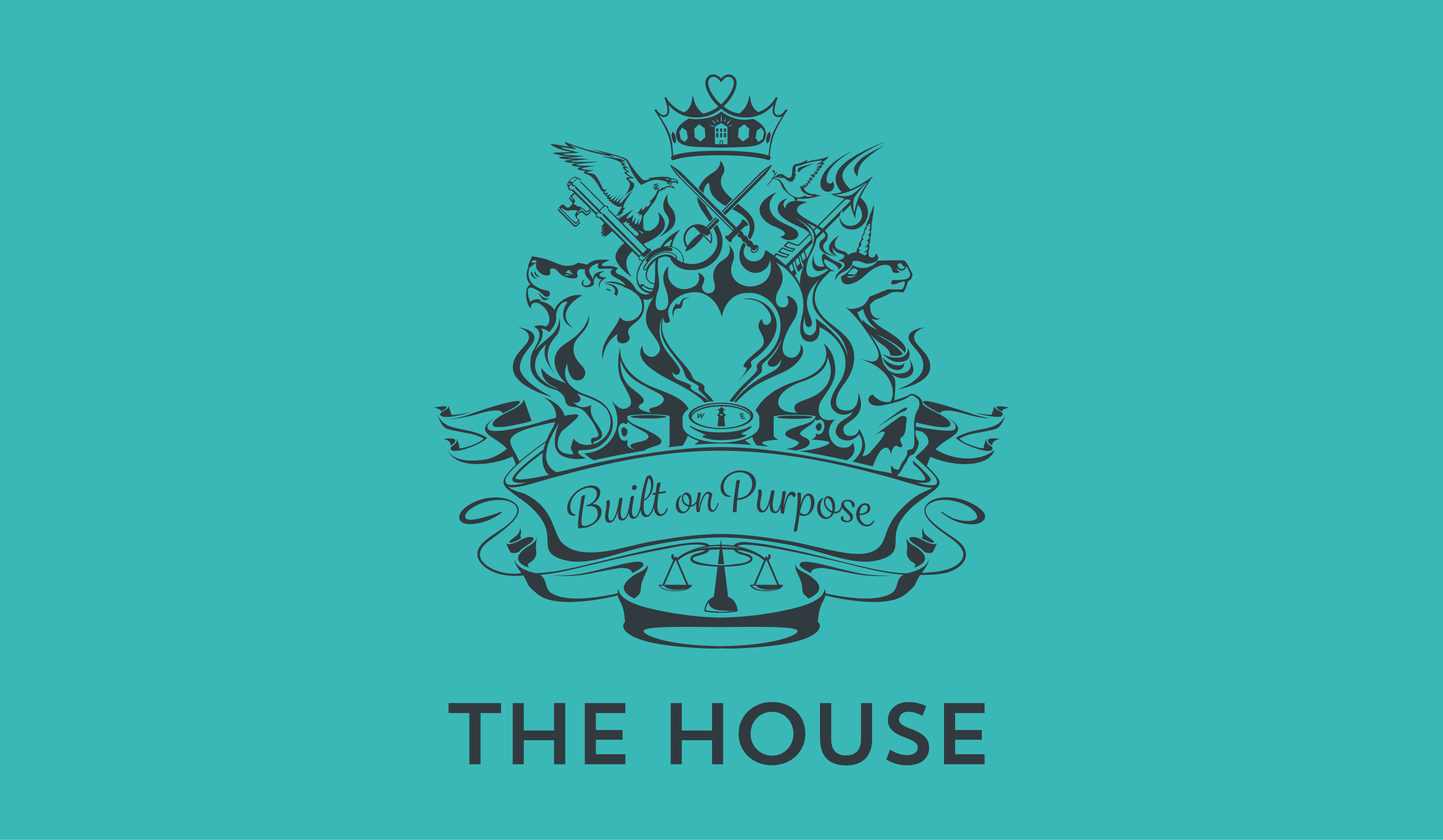
More and more companies and organisations are waking up to the power of purposeful advantage – the commercial and competitive edge that you gain from having a clear “purpose beyond profit” at the heart of your business.
A crucial early step in this process is crafting your “purpose statement” – a single sentence that crystallises your company’s reason to exist, beyond simply making a profit.
For Unilever, it’s “to make sustainable living commonplace”. For HP, it’s “to foster the human capacity to innovate and progress”. For Ella’s Kitchen, it’s “to create healthy eating habits that will last a lifetime”.
You’ll notice that these statements aren’t about being “the best” or “the fastest-growing”, or even the “most trusted” or “most innovative”. That is, they are not like traditional mission statements.
Instead, purpose statements are about the connection between the company’s core products and services and the benefits they deliver to people’s lives. If you get that right, “the best” and the “most loved”, etc., will naturally follow.
Crafting your purpose statement is a key early step in any company’s purpose journey. Here are our top five tips for creating an inspiring and authentic purpose statement.
#1 Draw the map before you plot the course
Writing your purpose statement is not the starting pistol of your purpose journey. First, you need to figure out what your purpose actually is.
Seems obvious? Perhaps, but too many firms skip the hard work of actually grounding their purpose in reality.
This means digging into your heritage, seeking customer and employee insight, undertaking SWOT analysis and researching the trends affecting the political, economic, social and technological context in which you operate.
By looking back into the past, getting a crystal clear view of the present and studying future trends, you can ensure that your purpose statement has purchase in the real world.
#2 Look for “perpetual stretch”
Unlike a “mission”, a purpose is not something that can be achieved once and for all.
Instead, a purpose statement should give rise to an inexhaustible series of new goals, and always push you and your team forward.
NASA is a great example. Its purpose is to “reach for new heights and reveal the unknown for the benefit of humankind”. In turn, this purpose generates and drives mission after mission, each one supporting the core purpose – but never completing it for good.
#3 Combine the emotional and the rational
Purpose statements should have both a rational and an emotional register.
We like to say that purpose statements should give you a “tingle”: an involuntary smile of inspiration and excitement, mixed with a little bit of healthy, top-of-the-ski-slope, can-we-really-do-this fear. Without that pinch of emotion, a purpose statement will struggle to inspire employees to embrace it as their own.
At the same time, there always has to be a rational case for how purpose will supercharge your business, culture and brand strategy, and this should be reflected in your purpose statement.
BT’s purpose statement, for example, is to “use the power of communications to make a better world” – the company’s core product, communications, is front and centre.
#4 Plain language
A good purpose statement should be plain-language and simple for employees, customers and stakeholders to grasp.
Take the purpose statement of digital agriculture company The Climate Corporation:
“The Climate Corporation aims to help all the world’s farmers sustainably increase productivity of their farming operations”
It’s simple and to the point, clearly oriented towards the real needs of customers and the environment, and clearly linked to the firm’s commercial offer.
#5 Tangible enough for employees to make it their own
Plain language is important, but take care not to tip back into just being vague.
Always, always remember that your purpose statement will be implemented and brought to life by your employees. If it truly sticks, it will inform how they make decisions, how they solve problems and how they innovate. That’s the real engine room of purposeful advantage.
But this will only work if the purpose statement is tangible, pragmatic and potent enough for employees to be able to take it and make it their own.
Before you release your purpose statement into the world, think: will employees be able to apply this to the assembly line? To the shop floor? To the R&D lab? To the marketing department?
This means that abstract sentiments like “we exist to make the world a better place” do not work well as purpose statements, because there is nothing concrete or potent enough to get hold of.
The key question is always, “What will we do differently tomorrow?” By following these five tips, you can create a purpose statement that both inspires people to ask this question and equips them to find answers for it.
This article originally appeared in BusinessZone.com.
How to make the case for investing in culture

Great organisations take culture seriously – or are eventually forced to.
Companies such as Apple, P&G, Walt Disney and McDonalds have achieved enduring success by investing properly in workplace cultures defined by clear values and behaviours. Conversely, high-profile organisations such as VW, FIFA and Kids Company have been left counting the financial and reputational costs of cultural failure.
Culture is crucial to business performance and reputation. Despite this, however, many HR directors still find it challenging to convince the rest of the C-Suite to commit significant investment to building a healthy, values-led culture.
Overcoming common objections
In a way, this is unsurprising. To colleagues from other business disciplines, building a values-led culture may feel like a less tangible project than, say, creating a new product line or making a major capital investment. It may also seem much more difficult to forecast and measure the potential risks and returns arising from a company’s culture.
More generally, workplace culture and corporate values may be considered by some to be “soft” or “conceptual” parts of the business – fine for the HR department to grapple with, but of limited concern to other departments and functions.
Help is at hand. Based on our experience of helping organisations define and implement healthy workplace cultures, we believe that there are three key steps HR directors and managers can take to win over colleagues and secure appropriate levels of investment in values-led culture.
#1 Find a tool to measure values and culture
Culture is not a ‘soft science’ – it can and must be measured.
For example, we typically use the Barrett Values Centre’s Cultural Values Assessment (CVA) tool, which measures “cultural entropy” – the amount of time (and therefore money) a company loses through dysfunction. Entropy leads to higher employee turnover, wasted time and poor morale, all of which hit the bottom line.
The CVA tool asks three simple questions of employees. From this data, CVA practitioners are able to create a full and frank picture of the strengths and weaknesses of a company’s culture. Crucially, the CVA will measure the amount of time and energy that is being wasted because of those weaknesses (i.e. the level of cultural entropy).
There are many other cultural assessment tools available, but we have found that this concept of cultural entropy has been extremely effective in focusing business leaders’ minds on the real financial cost of cultural problems.
Whichever tool you choose, a small investment in research and assessment will create a solid platform for sparking a board-level discussion about how well the company’s values are being manifested throughout the business. Where possible, we recommend seeking a mix of quantitative and qualitative evidence. Remember also that different colleagues prefer to absorb information in different ways: we have found that using visual representations, such as the scorecards and diagrams offered by the CVA tool, have been effective in the past.
#2 Make a “carrot and stick” case for investing in culture
Once you have clear data on the costs of not investing, you can start to build a case for devoting more resources to developing your organisation’s values and culture.
However, remember that investing in culture is not just about avoiding the risk of Worldcom-style scandals. By all means highlight the threat to the bottom line, but give your colleagues positive ‘reasons to believe’ as well.
Show them the evidence that values-led cultures lead to higher revenues and productivity by unlocking the full potential of employees. Explain that employees contribute more in terms of discretionary energy, creativity, innovation and problem solving when they feel aligned to the company culture.
A healthy culture built around a strong sense of common purpose can also help to make your company more flexible and adaptable by giving it a firmer basis from which to respond to changing circumstances and market disruption.
Finally, a clear set of values can also act as a purchase trigger for customers, making culture a source of competitive advantage. By this, I’m not necessarily referring to a company’s external ethical, social or environmental values, but to the internal cultural values that allow for more authentic relationships between employees and customers.
#3 Demonstrate that culture is everyone’s problem – and everyone’s opportunity
Once you’ve collected the evidence and outlined both a risk-focused and inspirational case for investing in culture, you will be able to take the final step: convincing your colleagues that culture demands and deserves the attention of the entire C-Suite.
Persuade the CEO or managing director to take culture seriously by showing how a company’s lived values are integral to the big picture. It’s through such values-led cultures that a firm’s underlying purpose and mission get translated into reality.
The CFO or financial director will likely be most easily convinced by the potential threat to the bottom line (as will a chief risk officer or risk management committee), but will also see the potential for increasing productivity and driving top-line revenues.
Persuade the chief marketing officer by showing how investment in values and culture will create a more authentic brand. After all, brands only ring true with consumers when they are lived inside and out by employees. And of course, when a failure in culture leads to a public scandal like the VW emissions controversy, years of hard work and investment in building a trusted brand can be undone overnight.
Conclusion
While values should be the responsibility of the entire senior leadership team, it will often be the HR director who must go to bat for greater investment in building workplace culture. HR directors can equip themselves for this challenge by making a modest upfront investment in measurement and assessment and outlining both a defensive and positive case for the importance of culture to a company’s performance.
From there, you can seek to frame the argument in such a way that every member of the senior leadership team understands how culture can benefit his or her part of the business.
The end result is that your organisation will invest appropriately in defining its values and desired behaviours and bringing them to life across every part of the business.
This article originally appeared in HRZone.com.
Why you need a healthy, values-driven culture to bring your purpose to life

Finding your true purpose in life is a wonderful thing. But as any purposeful leader will tell you, that ‘light bulb moment’ – the moment when you realise what you’re here on the earth to do – is just the beginning of the journey. To make real change happen in your life, you need to cultivate good habits, tend to your relationships and adopt the right mental attitude in different situations. Only then can you truly start to embody your purpose.
The same is true for organisations. A clear sense of ‘purpose beyond profit’ can transform a company’s fortunes. But without a healthy and aligned culture, a company’s purpose will be nothing more than seeds on rocky ground.
To create real transformation where you work, you need to choose the right values, cultivate the right behaviours and build the culture that supports and embodies your organisational purpose. Investing in culture is just as important as investing in purpose: in fact, the two go hand in hand.
A purpose statement is just the start
Nailing your purpose is a huge step for any organisation. A well-considered, well-articulated purpose statement can act as a “North Star” for everyone involved in the company.
While your North Star will point you in the right direction, however, it won’t get you there on its own. Nor can organisational purpose be ‘achieved’ by a handful of senior leaders.
To create a living, breathing purpose in your company, you need to develop a culture in which every employee is committed to the shared goal and is empowered to put the company’s purpose into practice.
Letting people commit to your purpose
What is it that drives some employees to truly commit to the organisations they work for? In our experience, it goes beyond simply believing in the organisation’s purpose. You also need alignment between what the employee values and what the organisation collectively values.
When we talk about investing in culture, we mean spending time considering which values and behaviours will help your organisation fulfil its purpose. To put it in Simon Sinek’s terms, once you’ve “started with the why”, you then have to figure out “how”.
This means going beyond the generic, ‘permission to play’ values such as ‘honesty’ and ‘integrity’ and figuring out what truly makes your company tick.
Are you, like cartographers Ordnance Survey, “adventurous, incisive, restless and true”? Do you and your employees prize disruption, individual initiative and a “move fast and break things” attitude? Or are patience, rigour and consensus building more important?
Clarifying the choice
Working on your culture means creating a shared understanding of what is collectively valued and which behaviours are expected as result. This gives employees a clear choice: do my own personal values allow me to commit to the shared values of the organisation? Can I buy into both the purpose and the culture that supports it?
Many people who have worked for ethical and compassionate businesses (or indeed, for charities or government) will recognise this dilemma: believing passionately in an organisation’s mission but finding it difficult to cope with the culture. This could be because the culture is broken and dysfunctional, or might simply be that it doesn’t match your personal values.
Recognising that purpose and mission is only one part of the equation can help purpose-led organisations attend to fixing dysfunctional cultures – and can also help individuals make better informed decisions about where to work.
A shared culture allows people to co-create a lived purpose
Once employees are committed to the purpose and culture, the organisation’s shared set of values and agreed behaviours will give them a secure platform and a common language for putting purpose into practice.
For purpose to stick, it needs to be something that every employee can grab with both hands and make their own, no matter what their competences and responsibilities are. This is the beauty of purpose: it can unlock the creative and problem-solving potential of every employee.
To prevent everyone from pulling in different directions, however, there has to be a common set of expectations binding the team together. Your culture is the ‘glue’ that creates the trust necessary for people to be able to act autonomously in support of the shared goal.
Culture is a differentiator
Remember, other organisations may well have the same purpose as you. It is your values and culture that will differentiate you in the minds of employees, partners and customers.
At The House, our purpose is to make business a force for good. Happily, this purpose is shared by many of our friends in the purposeful business movement.
This does mean, however, that we have had to take a long look at ourselves – as individuals and as a collective – to determine how we can live our purpose in a way that is true to our values as a consultancy.
This isn’t easy and we don’t always get it right. Maintaining a healthy, values-led culture is hard work. But identifying your values always gives you a safe harbour to come back to when day-to-day things start to go sideways. Our values create a space for ‘safe conflict’: where we can challenge each other and allow ourselves to be vulnerable.
Purpose and culture are two different things, requiring different sets of skills and tools to nurture and build. But they are also intimately linked.
It’s difficult to build a healthy set of values and behaviours that make up culture without an underlying shared purpose, and it is impossible to bring purpose to life within an organisation without a healthy and aligned culture. Only by investing properly in both can you unleash the full potential of your organisation and its people.
This article originally appeared in Salt magazine.
How Tesla’s audacious purpose led to a breakthrough decision

In June 2014, Tesla CEO Elon Musk made a startling announcement. In one fell swoop, Musk tore up Tesla’s patents and embraced open sourcing – making the electric car firm’s intellectual property freely available from the company website. As a symbolic gesture, Tesla literally pulled down the framed patents from the walls of its Palo Alto headquarters.
This audacious decision was rooted in Tesla’s clear sense of purpose beyond profit: its mission to "accelerate the world's transition to sustainable energy".
As Musk explained at the time, “We believe that Tesla, other companies making electric cars, and the world would all benefit from a common, rapidly-evolving technology platform.”
In other words, Musk understands that the future of the automobile industry extends beyond the four walls of Tesla’s headquarters. Tesla’s decision will supercharge the “world’s most talented engineers”, whether or not they’re working for Tesla.
Since the company began in July 2003, Tesla’s purpose has been to present the electric car as a viable option to traditional, environmentally unfriendly automobiles. Eco-friendly innovation has been at the forefront of everything the company does, which in turn has led to commercial success. By having a different, more forward-thinking goal compared to other automotive companies, Tesla rules a market of its own creation.
Aaron Hurst, author of The Purpose Economy, argues that “the great business challenge now is not just how to build a successful organization, but how to build more human-centred markets”. Tesla is clearly relying on people, inside and outside of the organisation, to join them and buy into a common purpose.
This is not just a charitable gesture, though – it makes complete commercial sense. By lowering the barriers of entry, Tesla hopes to grow the electric car segment within the automotive industry: a segment in which it is already a leader. Over time, this will make Tesla’s cars more affordable to the public, as was always the plan.
If you want trust, you have to invest in culture

This is an abridged version of an article that orginally appeared in HRZone.com - read the full article here.
Trust is big business. From Davos down, business leaders are consulting oracles like Edelman’s Trust Barometer or the CIPD’s Employee Outlook Report in order to increase trust in their organisations, inside and out.
It’s a perfectly sensible goal. To make trust work, however, organisations need to think clearly about what trust is, where it is found and how it is achieved.
Trust in action
In organisations with high levels of trust, employees are engaged, committed and bring their discretionary energy to work. They are more productive because they have more freedom and autonomy to apply their skills, knowledge and creativity to problem solving. In short, they are empowered.
Why, then, doesn’t every business simply remove the shackles and let its people loose to solve problems? Unfortunately, it’s not that easy.
Making trust work
Employee freedom requires trust, but they are not one and same thing. A business cannot simply hand over responsibility and hope for the best. Trust-based employee autonomy cannot work without accountability, and accountability cannot function properly without a solid foundation of shared values and culture.
Making peers accountable to each other reduces the risk that autonomous problem-solving ends up with everyone pulling in different directions. It's a precondition for trust - but accountability alone offers no guarantee that people will be truly open with each other or treat each other fairly.
Vulnerability and openness
The problem is that accountability alone doesn’t allow for “vulnerability-based trust”, to borrow a phrase from Patrick Lencioni. This is the kind of trust that gives employees permission to admit to each other that they don’t have all the answers, or that they need help.
In our work, we’ve seen time and time again the breakthrough that occurs when employees trust each other enough to display this kind of vulnerability. You can almost physically feel the whole company relax its shoulders, breathe more deeply and let the energy flow.
It’s at this point that businesses become poised to reap the “low cost, high speed” benefits of trust – but it only happens after employees start to engage in a conversation about values, culture and what’s important to them.
This is because trust itself is not a value - it's an outcome of defining and following your values. Trust is not a commodity to be stored or a quality of individuals - it is an interpersonal, relational quality that arises as the result of the activities that promote shared values and behaviours.
Culture is an investment
Why do we talk about ‘investing’ in values and culture? Because figuring out your values and bringing them alive is hard work. It comes from asking deeper questions about what is important to the company (its purpose) and what is important to employees. When done right, however, investing in culture yields enormous dividends.
Granting more autonomy and employee freedom is just one piece of the puzzle. A healthy values-led culture gives you the basis on which to build accountability, foster openness and empower employees to trust each other to act freely in pursuit of a common goal. Less cost, more speed.
How to make sure that Purpose is more than just corporate jargon

This article originally appeared in Management Today.
Whether it’s PwC appointing a Chief Purpose Officer, Boston Consulting Group buying up purpose agency BrightHouse or EY teaming up with purpose guru Simon Sinek, the big beasts of business consultancy are suddenly piling into the purposeful business movement.
But is "purpose" just the latest buzzword on the block? Will you be laughed out of the boardroom if you start advocating a purpose-led business transformation?
Allow me to make the case in favour of corporate purpose. The evidence shows that purpose works. I believe that any firm can supercharge its competitiveness through the power of purpose, as long as it makes a genuine commitment to transform itself.
But what is it?
Let’s quickly define what we mean by ‘purpose’. It’s not the same as CSR, which is typically bolted onto a company’s main activities. Nor is it the same as ‘sustainability’ (an outcome, not a purpose) or ‘ethical business’, which is more about avoiding unethical practices.
Purpose is the reason your company exists other than to make money - your ‘purpose beyond profit’. Wait, come back! It’s absolutely not about ignoring profit. It’s about powering profit and performance by tapping into the deeper benefits your core business activity offers the world.
There is plenty of hard evidence that, when done right, a strong sense of purpose can deliver outperformance. In fact, a recent London Business School report estimated that a more purposeful approach to business could add £130 billion to the UK economy.
Purpose should be transformational
Senior managers must recognise that purpose is supposed to transform your business from top to bottom. Think of it as something akin to a capital investment.
If standing at the top of the ski jump doesn’t evoke a little tingle of positive, can-we-really-do-this fear, then you probably need to be more ambitious in how you want purpose to change your business.
By extension, the purpose itself has to be audacious. As you define your corporate purpose, ask yourself – is this something that can be done and dusted in five years, or does it provide us with an inexhaustible supply of stretch targets?
Unilever’s purpose of ‘making sustainable living commonplace’ is a great example of a purpose that creates perpetual stretch.
It can never be achieved once and for all, but it is driving Unilever’s business forwards (and its share price skywards) step-by-step through constant innovation and business transformation.
Purpose has to be grounded in reality
For purpose to be effective, it must be fully aligned with your business strategy and deeply rooted in the political, economic, social and technological reality in which you operate.
How are your customers’ lives changing? Who are your customers of the future? Above all, what do you do well, how does it benefit others and how can you continue to make that profitable?
It’s essential to root your purpose in rational data, emotional intelligence and business context, and then find the territories you can feasibly go after.
Be prepared to be held accountable. To be credible, your purpose must be mapped against clear and measurable goals. If your purpose to promote healthy eating, how much sugar will you cut from your products and by when?
Purpose needs the whole senior leadership team behind it
This is the number one reason why some purpose-led business transformations fail. Without the full backing of the entire leadership team, it is very difficult for purpose to take root. This is why purpose can’t ‘belong’ to just the PR or sustainability team.
The CEO, finance director, HR director, operations director and marketing director all have to commit to working together to bring the company’s purpose to life, inside and out. This means acting as a genuine leadership team, as opposed to a ‘team of leaders’.
Ignore these three truths and yes, your ‘purpose’ will just be corporate jargon. But if your purpose is audacious and transformational, securely tethered to the realities of your business and backed by an ‘all-in’ commitment from your senior management team, then you will be able to reap the commercial benefits.
Should purpose-driven organisations ever use zero-hours contracts?

We’ve partnered with our friends at Ramsay Paterson LLP, an employment law firm that specialises in working with values-led organisations, to develop and share insights about what it takes to implement values and culture within purposeful and ethical organisations for HRZone.com. The following is an abridged version of Stephanie Paterson’s recent article in HRZone.
Zero-hours contracts – contracts where the worker is not guaranteed any hours of work - have received a lot of negative attention in the press over the past couple of years. As a result, many value-driven organisations are reluctant to use them. But should ethical and values-driven organisations avoid zero-hour contracts completely?
Many ethical businesses will still need some flexibility in their hiring arrangements, but want to avoid the negative association with zero-hours contracts. In some cases, the alternatives to zero-hours contracts can be even worse.
If you have a genuine need in your organisation for flexible arrangements to meet the ebb and flow of demand, perhaps you need to look again at zero-hours arrangements. Just make sure you ask a few key questions first:
Does my organisation have a genuine business need for flexible working arrangements?
If so, be very clear on what these needs are: discuss and agree this with other managers and keep a record.
How can I best address those needs?
As well as zero-hours contracts, you may consider:
- Offering overtime to permanent staff
- Variable-hours contracts (with some guaranteed hours)
- Recruiting a part-time employee or someone on a fixed term basis.
- Offering an annualised-hours contract if there are fluctuations in demand, but this can be anticipated across the year.
- Using agency staff
Is my organisation being transparent about our flexible working arrangements?
If you do chose a zero-hours or variable-hours arrangement, how you implement it can make all the difference.
- Be very transparent with the individuals concerned so that they’re absolutely clear on what they’re agreeing to and why.
- Make sure individuals understand their rights and explain how any entitlements will be accrued.
- Give as much notice as possible when offering work (and make it clear they can turn it down) and importantly, avoid cancelling work at late notice.
- Consider whether these workers should be given full employment status (not casual workers) despite the variable nature of the hours you can offer.
We’ve come across organisations where zero-hours/variable-hours arrangements are being used in very carefully considered ways. These organisations have thought about the impact of the arrangement for the individual and can genuinely justify its use in a way that accords with their strong values.
The House helps Touchstone Residential make rental properties feel like homes
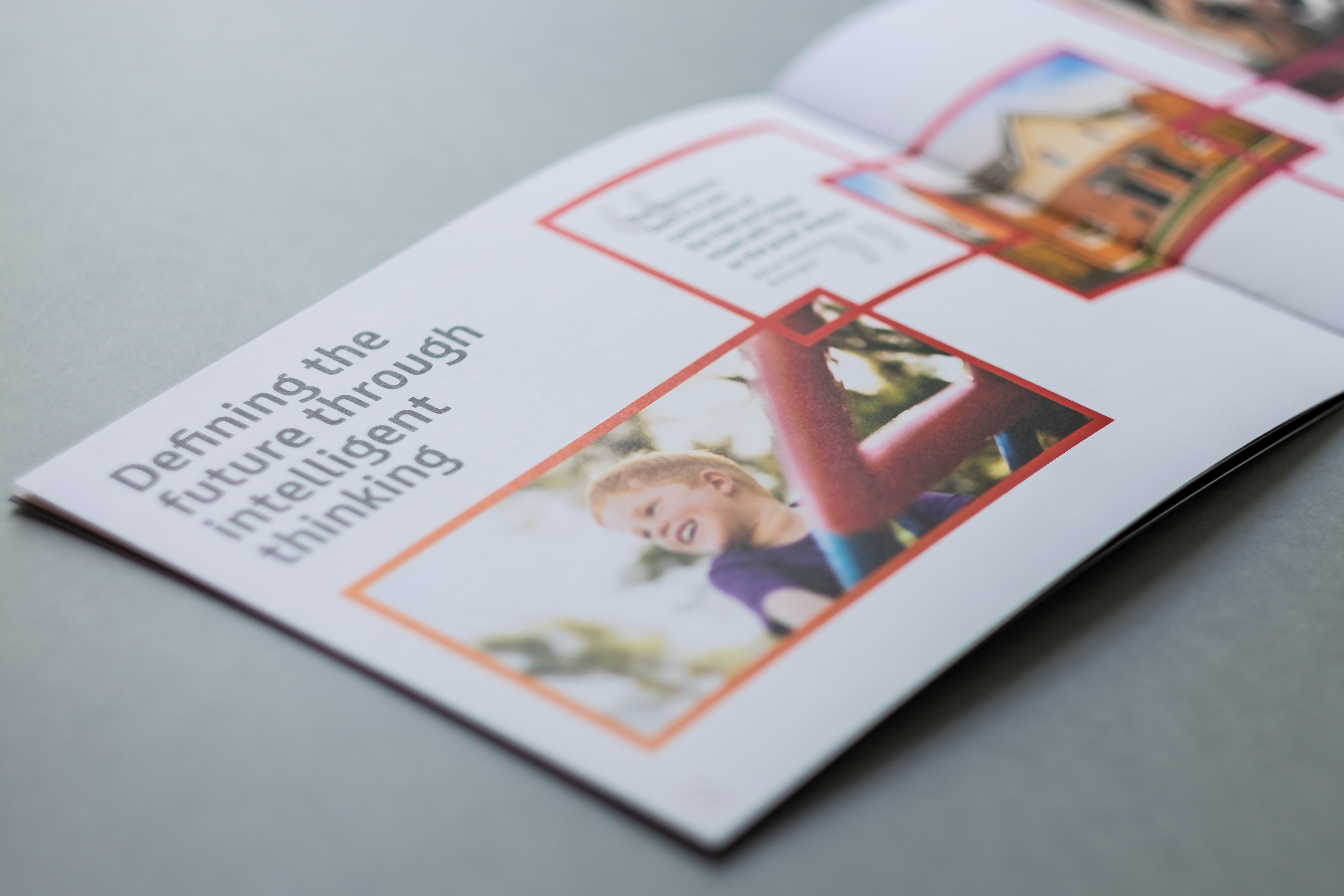
We helped Bath-based property management firm Touchstone to refresh its brand by reimagining its purpose.
Working closely with Touchstone’s senior leadership, we helped to redefine the company’s brand purpose as “turning rental units into homes”. This has energised Touchstone’s business strategy and sparked a full refresh of its visual identity, communications strategy and business approach. Touchstone’s purpose can now be felt across every part of the company’s business strategy, culture and brand.
After 25 years in business, Touchstone’s employees really understand what it takes to make a rented house feel like a home. Our challenge was to capture the full breadth of Touchstone’s practical, market and human intelligence and turn it into a clear purpose that delivers competitive advantage.
Focusing on turning rental units into homes makes good commercial sense for Touchstone. When tenants feel truly at home, they stay longer and value and look after the property. This reduces turnover, maintenance and management costs for landlords, while making renting feel less temporary and transient for a growing population of long-term renters, who are on course to make up 25% of the UK population by 2025.
Tim Saunders, then Chief Executive of Touchstone, said:
“We want to create a world where landlords and tenants recognize and respect each other’s needs. The more we can create a genuine sense of home for tenants, the lower the costs and the greater the profit.”
This approach has an added social benefit, as tenants who stay longer tend to create more long-lasting connections and become part of the social fabric.
Guest Post: Implementing your values and culture in your appraisal system

We’ve partnered with our friends at Ramsay Paterson LLP, an employment law firm that specialises in working with values-led organisations, to develop and share insights about what it takes to implement values and culture within purposeful and ethical organisations for HRZone.com. The following is an abridged version of Stephanie Paterson’s recent article in HRZone.
There has been a real shift over the past couple of years in organisations talking more openly about values and what’s important to them (beyond just making a profit).
Shouldn’t this therefore be reflected in approaches to appraisals too? Does your appraisal process sit comfortably with what’s really important to your organisation? For example, does it focus on individual contributions when your ethos is all about working together?
Appraisals could also be an opportunity to find out what employees understand and feel about the culture of the organisation, how they contribute to it and how they demonstrate the organisation’s values.
Get the purpose of your appraisals clear
Ask yourself what you want your appraisals to achieve. Is it to measure contribution of employees to financial growth? Is it to encourage open and honest dialogue or is it to map future career development? Or something else entirely?
Once you’re clear on your purpose, it should naturally follow that some approaches will support it and some won’t. For example, if your overall purpose is to encourage open and honest dialogue between your employees and their line managers, then having salary increases or a bonus linked to the appraisal might not be conducive to that purpose.
Think about how, when and where to carry out appraisal discussions
If your employees aren’t office workers, should you be holding an office-based discussion? If your employee is a driver, a chef in a restaurant or a farm worker, have you thought of stepping into their normal working environment instead? Ask where they’d feel most comfortable.
Do you need a formal appraisal system at all?
We’re increasingly hearing of large corporates ditching their formal appraisal systems (along with rating systems and forced timelines) and opting for a more fluid and real-time feedback approach.
Once you know what you’re trying to achieve, ask ‘what would really work?’ The answer may not be the same for every part of your organisation.
To read the full article, please click here.
Why investing in culture will unleash your business potential

This is an abridged version of an article that first appeared in SALT magazine: to read the full article please click here.
Building a healthy, values-led culture isn't easy - it takes real effort and investment. But over our last ten years of working with firms to help instil values-led cultures, we’ve seen time and time again how much more a business can achieve when it gets culture right. We believe that there are three main benefits that flow from a healthy and aligned culture:
1 Higher productivity, higher revenues
A healthy and aligned corporate culture allows employees to bring their whole self to work – boosting your bottom line in the process. Remember: this isn’t just about cutting down on sick days and reducing employee turnover. It’s about how much more employees bring to the table when they feel listened to, supported in their roles and aligned to the wider purpose and cultural values of the business.
2 Culture differentiates and helps you compete
Just as customers engage with your core purpose – the “why” of your business, they are also sensitive to your values and culture – the “how” of your business. In fact, it’s strong cultures that bring your purpose to life. This means that culture and values are powerful sources of competitive advantage.
As Zappos CEO Tony Hsieh says, “if you get the culture right, most of the other stuff like delivering great customer service or building a long-term enduring brand will just happen naturally on its own”.
3 Culture makes you stronger and more agile
If your decisions are guided by a strong sense of shared purpose and lived, values-led culture, your business will be in a stronger position to survive and thrive in uncertain and complex market environments – not least because your employees at the coalface will have a solid foundation from which to respond and act with creativity and commitment. Resilient organisations and agile leadership flow from a healthy and aligned workplace culture.
To learn more about the commercial benefits of investing in culture, please read our full article in SALT magazine here.
How we helped Bath charity St. John’s Hospital highlight its past and future impact
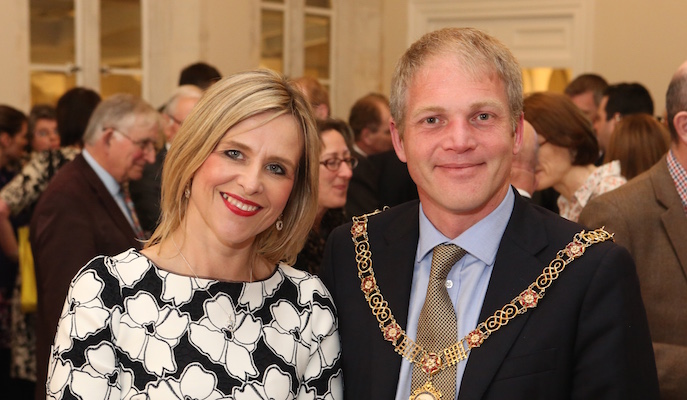
We’ve helped Bath-based charitable foundation St. John’s Hospital articulate its present impact and future ambitions by developing an annual impact report – the first ever in the charity’s 842-year history.
The report aims to give the people of Bath a clear picture of the charity’s past roots, present impact and future priorities. It celebrates the achievements of 2015 and serves as a call to action for local partners and supporters to help St. John’s Hospital deliver an even greater impact in 2016, across its core areas of health and wellbeing, housing, isolation, poverty, relationships and employment and skills.
The report was launched in February to a packed room of business and civic leaders, charities and philanthropists at the Gainsborough Hotel in Bath.
Sue Porto, chief executive of St. John’s Hospital, said:
“We’ve been overwhelmed by the positive response to our first ever annual impact report. We believe that St John’s Hospital is in a strong position to act as a connector, bringing different groups together to tackle social challenges in Bath and North East Somerset. The House has helped us to craft a compelling invitation to the wider community to share in our work.”
Highlights of the report include the launch of The Bubble, a new community facility that provides activities, social gatherings and services for people aged over 55 living in Bath, aimed at reducing social isolation.
In 2015, St John’s Hospital also helped 98 almshouse residents and made grants to 527 individuals and 59 organisations, making a positive impact on over 4500 people. In 2016, it aims to help 1200 people through individual grants, disburse £1 million in overall grants and lend £1 million to charities and social enterprises through social investment.
We believe that every charity can benefit enormously from defining and communicating their purpose and impact in this way: it attracts new partners and supporters, reenergises staff and volunteers and helps charities reach those who need their help.
We’ve previously helped Wiltshire Community Foundation and Bath Rugby Foundation attract more support by redefining their brand, and also created the visual identity for Bath-based initiative Action Against Child Poverty.
Photo: St. John's Hospital CEO Sue Porto and Mayor of Bath Will Sandry. Photo credit: Anna Barclay
The House win European branding awards
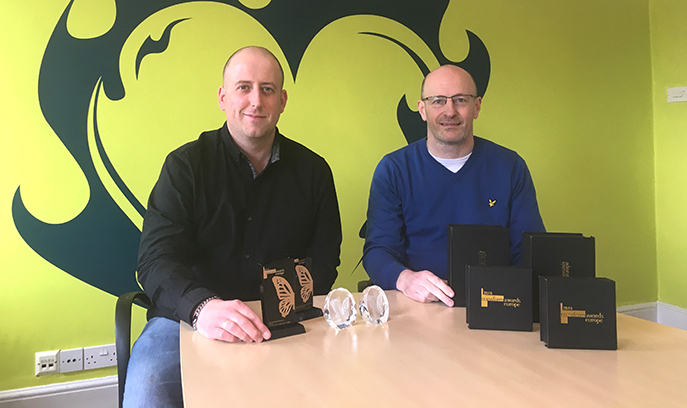
The House has now won Transform Europe awards for four years in a row! At the 2016 Transform Awards, we won Bronze awards for our work with Devizes-based TH WHITE (“Best Brand Consolidation”) and South Devon hospice Rowcroft (“Best Brand Development Project following changed mission, values or positioning”).
We also received Highly Commended awards for our work with leadership consultancy Bridge Partnership (“Best Strategic/Creative Development of a New Brand”) and TH WHITE (“Best Visual Identity in the Industrial/Basic Materials Sector”).
It’s a great feeling to have our work recognised on the European stage for four years in a row, especially when we’re up against global agencies and household names. It just goes to show how putting purpose at the heart of your business and brand helps you punch above your weight and deliver lasting success.
At this year’s awards, The House and our clients competed alongside well-known brands such as UEFA, Odeon, TSB and Premier Inn, as well as global agencies including FleishmanHillard Fishburn and Weber Shandwick.
Andrew Thomas, publishing editor at Transform magazine, said, “Each brand that has been involved in this year’s awards, global or local, has demonstrated outstanding creative ability and strategic thought.”
Last year, we picked up Gold, Silver and Highly Recommended awards at Transform for its work with Prima Dental and Petainer, while in 2014 we won Bronze and Silver awards for our work with Norton Radstock College and Special Olympics GB.
Giles Charnaud, Chief Executive, Rowcroft Hospice, said: “We are very pleased that our brand redevelopment work with The House has won a Transform Europe award.
“The House has helped us to join the dots, connect the head with the heart and move our conversation from the transactional to the emotional.”
The Transform Awards Europe took place at the Brewery in London on 22nd March.
The awards celebrate excellence in rebranding, including strategy, execution, content and evaluation.
Patagonia’s cultural legacy
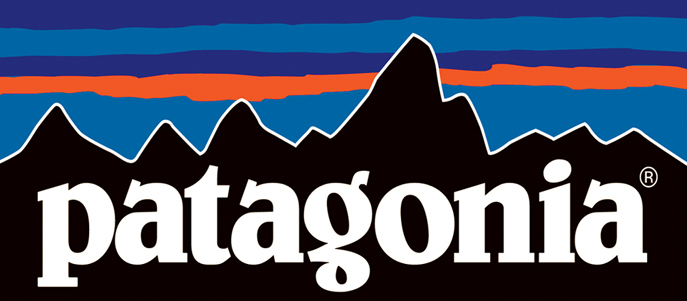
California-based outdoorwear company Patagonia was founded by mountaineering enthusiast Yvon Chouinard in 1973, offering high-quality, colourful garments that are designed for the great outdoors but also look great down the pub. As well as producing great clothes, Patagonia’s commitment to the environment and to company culture has set the standard for what an apparel brand can be, both inside and out.
Patagonia has built a rich internal culture by giving employees space to live its values: that of environmental stewardship and outdoor activity.
This includes:
· Providing staff with flexible hours so they can pursue other hobbies (a policy dubbed “Let My People Surf!” by founder Chouinard).
· Encouraging fitness at work through exercise areas dedicated to yoga and aerobics.
· Giving employees paid leave for “Environmental Internships” helping out a non-profit environmental cause of their choosing. In one case, Patagonia sent seven teams to help combat the Gulf Oil Spill in 2010.
Patagonia’s strong cultural and ethical code has underpinned its longevity as a business and created a unique legacy when it comes to company culture. It demonstrates how creating a purposeful workplace culture can benefit both your organisation and the world around you.
Why it’s good to talk

No matter the size of your organisation, communicating clearly is essential – a skill that can still prove difficult, even with the array of methods and software designed to aid communication. If you want to stay on the same page as those who work alongside you, it’s important that you find time to talk. Taking half an hour to close your laptop and talk with a colleague could wind up making a huge difference for the future of your business.
Talking helps create belief in your purpose
One of the key benefits of clear conversation is unifying your entire team behind your company’s driving force or purpose. At The House, we believe that purpose beyond profit is what drives a business to great things; if you believe this as a business leader, that’s a great start. However, your belief may not be shared or even understood within your business as a whole, so it’s vital to give your team a reason to get behind it. A bold banner on your organisation’s website or a section in your code of conduct describing your values may be a good start, but if you want to keep your purpose alive and evolving, you need to create oppurtunities for your team to talk about the company’s purpose in their own words.
Conversation creates business ambassadors
A well-communicated, well-understood purpose turns employees into ambassadors. Involving your team in the conversation around your purpose - where it’s going, how it’s carried out – allows them to continue this conversation and spread the message, whether that’s at work or at the pub.
Employees will be better equipped to help clients glean an understanding of what your company does and, just as importantly, why you do it. By allowing for genuine two-way conversational purpose, your entire organisation can become a part of the purpose and help it grow.
Talking fosters great relationships
No matter how busy you may be, there is no real substitute for face-to-face conversation: the flurry of information we receive every day only makes this more important. By creating time away from our devices and dedicating time to discuss ideas, get feedback and talk about what’s on your mind, you and everyone else in your organisation will not only develop a better, clearer business relationship but a happier and more trusting relationship overall.
Making time to talk can give everyone in your company a big lift. It needn’t be a conventional scheduled meeting either; there are plenty of opportunities, such as meals out, off-site talks or whatever else suits your timetable. Canadian firm Freshbooks send their employees on 'blind dates' in which two random members of staff are sent out together with the aim of getting to know each other better by the end of their ‘date’. At The House, we host a weekly ‘Food For Thought’ where the whole agency gets together to eat and talk about what inspires us, leaving the session energised and with a greater understanding of the whole team’s thought process.
Whatever your organisation’s goals, having a clearly communicated purpose backed by employees and clients is vital – both on a human and on a business level. If you want to bring your purpose to life, it’s good to talk.
Three things purpose is… and three things it’s not

Purpose is more than ambition or mission
Doubling the size of your business is an ambition. “Making sustainable living commonplace” is a purpose: one which has led consumer goods giant Unilever to adopt the vision of doubling its business while reducing its environmental impact and promoting positive social outcomes.
Purpose is more than CSR
CSR is great for establishing “basic hygiene” – clean supply chains, good working conditions – and for “giving back” to the community through acts of philanthropy. But purpose goes further. With CSR, companies do good as an add-on (or, dare we say it, an offset) to their usual activities. Purpose means putting positive change at the heart of your products, services and strategy.
Purpose is more than environmental sustainability
By all means keep recycling, choosing green suppliers and thinking before you print. But purpose gives us permission to think about all of the major global challenges we face.
Purpose IS a growth strategy
Purpose speaks to the very core of your business. This is what makes embracing purpose such a powerful strategy for growth. A clear sense of purpose will guide you into new markets, new products and towards new customers and partners.
Purpose IS a purchase trigger
Purpose inspires customers. A 2012 Edelman survey revealed that over half of consumers will pick the purposeful brand when price and quality are the same.
Purpose IS an investment driver
The evidence shows that having a clearly communicated sense of purpose driving your business at its core will build confidence, drive business investment and attract new investors.
Get your purpose clear, and it will act as both your engine and your compass. Can you afford not to build your business on purpose?
(You can read this article in full over on SALT Magazine's website).
The House nominated for four European branding awards
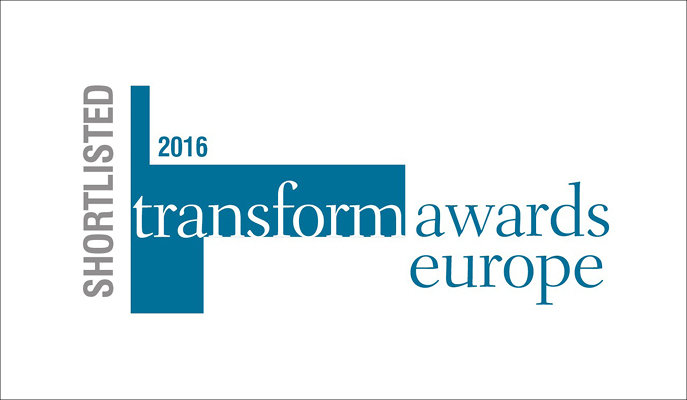
We’ve been nominated for four European Transform awards in recognition of its rebranding work with three UK and international clients.
Our work with Devizes-based T H WHITE has been nominated for both “Best Brand Consolidation” and “Best Visual Identity in the Industrial / Basic Materials Sector”, our work with leadership consultancy Bridge Partnership has been nominated for “Best Strategic / Creative Development of a New Brand”, while our work with South Devon hospice Rowcroft has been nominated in the category of “Best Brand Development Project following changed mission, values or positioning”.
This caps off an exciting six months that has taken us as far as the US and Australia helping businesses unlock their potential through the power of purpose. The secret is out: the best brands are built on a clear sense of purpose.
Last year, The House picked up Gold, Silver and Highly Recommended awards at Transform for its work with Prima Dental and Petainer.
At this year’s awards, The House and its clients will compete alongside well-known brands such as ODEON, DPD and Premier Inn, as well as global agencies including FleishmanHillard Fishburn and Weber Shandwick.
Lee Sears, Founder and Director of the Bridge Partnership, said:
“The House’s strategic insights have boosted pride and re-energised our organisation. Creating clarity about our overall purpose has unified us, spurred on decision-making and really put the wind behind our sails.”
Giles Charnaud, Chief Executive, Rowcroft Hospice, also welcomed the nominations:
“The work we have undertaken with The House has helped us to join the dots, connect the head with the heart and move our conversation from the transactional to the emotional. We would love to see their work recognised by the Transform Awards.”
The Transform Awards Europe will take place in London on March 22. The awards celebrate excellence in rebranding, including strategy, execution, content and evaluation.
The House helps Dorothy House Hospice Care when it matters most

We’ve been appointed by Dorothy House Hospice Care to help the hospice tell its story and attract renewed support from businesses and individuals in Bath and Wiltshire.
Dorothy House, which marks its 40th birthday this year, offers support and care for patients and families across 700 square miles of Bath and Wiltshire. The profile-raising campaign aims to ensure that the work of Dorothy House is recognised as one of the region’s preeminent causes.
The House will collect 40 years of stories that celebrate and communicate the work Dorothy House does when it matters most. The profile-raising campaign, which will culminate in a film, will engage past and present employees, patients and families, businesses and individual donors.
It’s an honour to work with such a brilliant charity, and we want Dorothy House to carry on its great work for another 40 years. We now have extensive experience in the charity and non-profit sector, so we know how important it is for organisations to be clear on their purpose, clear on their story and clear about exactly what support they need from individuals and businesses. We’re excited to be helping Dorothy House with all of the above.
We recently created a campaign for Rowcroft Hospice in South Devon that aimed to change the conversation around end-of-life care to focus on the positive and life-affirming aspects of what hospices do. The campaign has since been nominated for Europe-wide award. We’ve also worked with charities and non-profits including Julian House, Special Olympics GB, Curo, The Woodworks Project and Bath Rugby Foundation. These stories are powerful because they help the general public understand what a hospice can make happen for patients and families when it matters most.
John Davies, CEO of Dorothy House, said:
“We were impressed by The House’s past work helping hospices and charities to attract support and grow income by telling clear and creative stories. We’re confident this campaign will help us to reach new audiences as well as reconnect with old friends, thus creating a firm foundation for the next 40 years.”
Growing Your SME Business On Purpose

This article originally appeared in BusinessZONE.
How do you plan to grow your business? There are many tried and tested strategies: new markets, new products, M&A, new partnerships. But there is one powerful strategy that sits above them all: a strategy that can truly unleash your full growth potential.
The evidence shows that the best growth strategy is to develop your vision, culture, products and services around a clearly defined purpose.
What do we mean by purpose?
Purpose is the deeper connection between your business and your customers’ lives and needs. It’s about how your business makes a positive difference – not through CSR, cause marketing or managing your environmental footprint, but through your core strategy and business model.
Purpose comes from asking yourself the big, scary question: why are you in business other than to make money? What is your purpose beyond profit?
Purpose vs ambition
As such, purpose is about more than ‘mission’ or ‘ambition’.
Doubling the size of your business is an ambition. “Making sustainable living commonplace” is a purpose: one which has led consumer goods giant Unilever to adopt the vision of doubling its business while reducing its environmental impact and promoting positive social outcomes.
Increasing market share in the baby food sector is an ambition – “developing healthy eating habits that last a lifetime” is the purpose that drove Ella’s Kitchen to become the UK’s best-selling baby food in less than a decade. Firms like Patagonia and Tesla have all shown that having a purpose that connects to a greater good goes hand-in-hand with growth and commercial success.
Purpose is a growth strategy
For most SMEs, profit is a daily battle: how can you possibly justify investing time in finding and articulating your purpose beyond profit?
Simple: because purpose works. The evidence shows that purpose-led brands outperform – that purpose actually powers growth.
Jim Stengel’s seminal book Grow studied 50,000 brands over a ten-year period and showed conclusively that brands that centre their business on improving people’s lives outperform their competitors. A 2015 study from Havas Media Group, meanwhile, found that the 25 most ‘meaningful’ brands outperformed the global stock market by 133% from 2007 to 2015.
To pick some concrete examples, Unilever announced earlier this year that its purpose-led brands, such as Ben & Jerry’s and Dove, were growing at twice the speed of the rest of its portfolio. Ethical bank Triodos saw customer accounts grow 144% in 2014, far outpacing the rest of the struggling retail banking sector. And of course, a clear sense of purpose and social values has powered brands like Innocent Smoothies to grow from SMEs to global concerns.
Why is purpose such a powerful growth driver? We think there are three main reasons.
#1 Purpose is a powerful lens for innovation
When it comes to innovating new products and services, purpose lets you widen your horizons while still keeping your focus.
Purpose widens your field of vision by allowing you to look beyond the immediate product – the ‘what’ - and focus instead on the underlying ‘why’. Let’s say you make affordable school shoes for children. If you see yourself as a shoe manufacturer (the ‘what’), your R&D will be about more shoes. If you see your purpose (the ‘why’) as making sure children are ready and equipped for the school day, a whole new world of possibility opens up for your product innovation strategy.
The lens metaphor is apt. Purpose doesn’t just open up more possibilities, it also narrows your innovation strategy into a laser-like focus. Like all companies, SMEs can be easily pulled into opportunistic expansions that have no underlying logic, making short-term gains but ultimately stretching themselves too thin. Purpose gives you permission to ask: is this new opportunity really in line with what our business is ultimately about?
#2 Purpose drives investment (and makes you more investible)
The evidence shows that having a clearly communicated sense of purpose builds business confidence, drives business investment and can attract new investors.
It starts from the inside. Deloitte’s 2014 Culture of Purpose Report compared the attitudes of executives who felt their firm was purposeful with those who didn’t.
Executives at purposeful firms were much more confident in their companies’ long-term prospects: more believed that their firm would deliver strong growth and returns over the long-term (83% vs 49%), and they were much more optimistic about their ability to stay ahead of industry disruptions (83% vs 42%) and remain or become market leaders (80% vs 48%) than those at non-purposeful firms.
The report found that this internal, purpose-led confidence tended to drive greater investment across the board in new technologies, expanding into new markets, developing new products and services and employee development and training.
Purpose can also help you find new sources of investment. SMEs with a clear social purpose can access diverse funding sources from the booming social impact investment sector, a market estimated at £3.5 billion by crowdfunding platform Ethex. A growing movement of both retail and institutional investors are increasingly using platforms like Ethex and the Social Stock Exchange to make purpose-driven investments in firms that make a difference.
#3 Purpose puts the wind behind your sails (and sales)
It’s not only investors who are drawn to purposeful brands. Customers and employees are also inspired by purpose.
Purpose is a purchase trigger. A 2012 Edelman survey revealed that over half of consumers will pick the purposeful brand when price and quality are the same. And customers don’t just buy from purposeful companies: they become advocates. The same survey showed that 72% of global consumers would recommend a company with purpose to others, a 39% increase from 2008.
As the business thinker Simon Sinek says, “people don’t buy what you do, they buy why you do it”.
The same is true when it comes to attracting and retaining the talent you need to grow. Research consultancy Global Tolerance found that 62% of UK under-35s want to work at an organisation that makes a positive difference, and that 53% would work harder if they felt their organisation delivered a social benefit.
The future belongs to businesses with purpose
Since embracing the purpose imperative in our own agency almost ten years ago, we have repeatedly seen how businesses of any size and sector can flourish by putting purpose at the heart of their strategy, culture and operations.
Purpose is not just for the Unilevers and Teslas of the world – if anything, SMEs will find fewer barriers and more immediate benefits to putting purpose at the heart of their business.
As you grow, your purpose is both your engine and your compass. Can you afford not to build your business on purpose?
Our favourite purposeful leaders

At The House, we believe that great purpose is the strongest driving force for business, and we’re gradually seeing more and more companies embrace ideas beyond profit as a motivator. Leaders who see the big picture, and are then able to encourage the whole organisation to embrace purpose beyond profit, engineer a change in an organisation’s direction. Here’s a list of five of our favourite leaders in purposeful business.
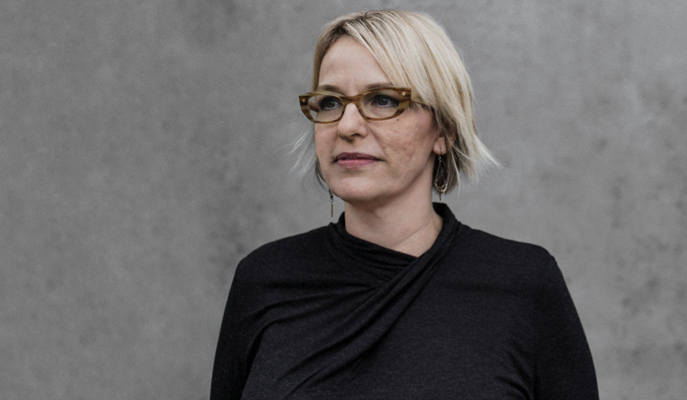
Name: Carolyn Duran
Business: Intel
Purpose: Conflict-free supply chain
Impact: Influenced Intel’s entire supply chain for the better
Electronics giant Intel is leading the way in sustainable, transparent electronics under the guidance of Carolyn Duran. Microprocessors found in electronics contain gold and so-called 3T minerals (tin, tantalum and tungsten) – key components in consumer electronics such as cell phones and tablets – and these minerals are often illicitly traded by government commanders and rebel militias in the Democratic Republic of Congo, earning them an estimated $185 million annually. This money has funded a brutal ongoing conflict, resulting in the deaths of a huge number of innocent civilians. Duran and her team have been working tirelessly over the last five years, visiting smelting plants and convincing them to comply to a transparent auditing process so that gold and 3T minerals can be tracked to their place of origin.
Now, thanks to the work of Duran and her team, nearly half the world’s 3T and gold smelters have passed these conflict-free audits, meaning that the market for illicitly traded minerals – alongside warmongering profits – has dramatically shrunk. Intel now only uses conflict-free microprocessors and is encouraging other electronics companies to do the same.
Photo credit: Talia Herman

Name: Elon Musk
Business: Musk Foundation
Purpose: Renewable Energy/Space Exploration
Impact: Influential force in renewable energy
After working for Tesla and starting PayPal, Musk turned his wealth and his attention to SpaceX and the Musk Foundation, which are dedicated to the discovery of renewable energy and space exploration respectively. Through his commitment to renewable energy methods and a greener world, alongside the influence he possess through his previous work, Musk has become a leader in renewable energy.
Photo credit: flickr
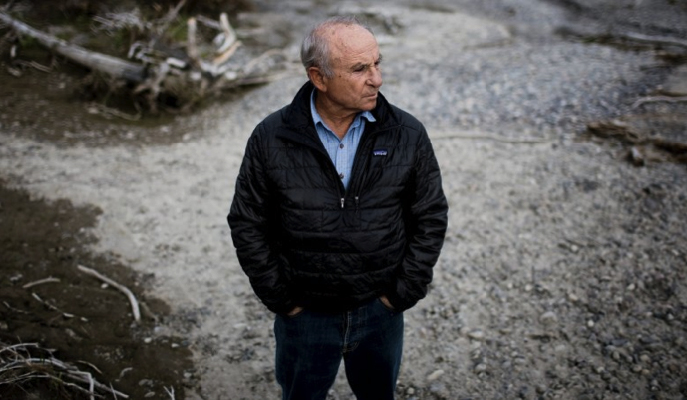
Name: Yvon Chouinard
Business: Patagonia
Purpose: Environmental Issues
Impact: Pioneering workplace/pesticide-free cotton
Outdoorwear retailer Patagonia is known for its environmental focus and ethical working conditions, and now offers healthy subsidised food, on-site childcare and flexible hours as well as encouraging environmental stewardship amongst its employees. Alongside encouraging its staff to do good, 1% of all of Patagonia’s sales go to 650 environmental organisations. On top of this strong culture and philanthropy, under Couinard Patagonia also pioneered pesticide-free cotton. Couinard claims to have made money every time he has made a planet-conscious decision, demonstrating that passion and profit need not be separate.
Photo credit: Inc.com

Name: Peter Blom
Business: Triodos
Purpose: Ethical Investment
Impact: World’s first specialist ethical bank
Peter Blom is CEO of one of the world’s most ethical banks, Triodos. Triodos connects savers and investors who want to change the world for the better with like-minded entrepreneurs and sustainable companies Triodos is also the only specialist bank that offers integrated lending and investment opportunities a range of sustainable European companies. Under Blom, Triodos continues to thrive and offer great ethical options for savers, investors and businesses.
Photo credit: Triodos.nl

Name: Perry Chen
Business: Kickstarter
Purpose: Encouraging Creativity/Setting New Precedent For Purpose
Impact: Increased donations/setting example as B Corporation
Perry Chen took the bold step of registering crowdfunding platform Kickstarter as a B Corp: meaning that the organisation has to “meet the highest standards of verified social and environmental performance, public transparency, and legal accountability, and aspire to use the power of markets to solve social and environmental problems”. As part of this commitment, Kickstarter invests in creativity in the arts and schools, planting the seeds for the next generation of Kickstarter projects.
Photo credit: Gigaom.com
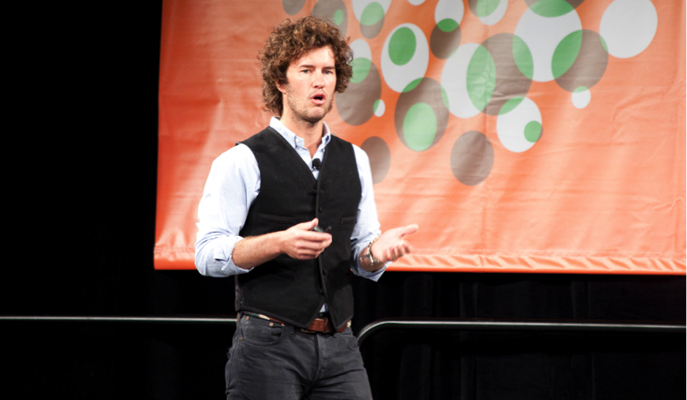
Name: Blake Mycoskie
Business: TOMS
Purpose: Ethical Consumption/Clothing Those In Need
Impact: Pioneer of unique donating
TOMS is one of the most famous proponents of the ‘buy one, give one’ system of donation: for each footwear, eyewear or lifestyle accessory it sells, TOMS donate a related product to those in need – so for pair of shoes you buy helps someone else who needs them. Mycoskie has grown the organisation to become one of the most recognised names in ethical shopping and is a huge influence on all companies who have followed TOMS’ donation strategy.
Photo credit: flickr
Merry Christmas from everyone at The House

The table sits at the centre of any important occasion. It’s a place to laugh and congregate as a household. When that table is crafted with love and supports a great cause, it’s even more special.
This year, The House has teamed up with The Woodworks Project to bring you a beautifully illustrated Christmas tale. We hope that it lights up your winter and shines a light on the great work The Woodworks Project do.
The Woodworks Project run furniture and upholstery workshop projects designed to help those who have faced difficulties through mental or physical illness or a history of addiction. Learning to make and restore furniture helps people move forward in their lives in a friendly, relaxed and supportive environment.
The House will be helping The Woodworks Project raise its profile in 2016. If you would like to show your support, please donate any solid wood furniture so that it - and its restorer - can be given a new lease of life. Cash donations are also welcome, and the charity’s public upholstery courses make an excellent Christmas gift.
Download our christmas card here
Make Friends and Ask Permission: How to Become a Force for Good
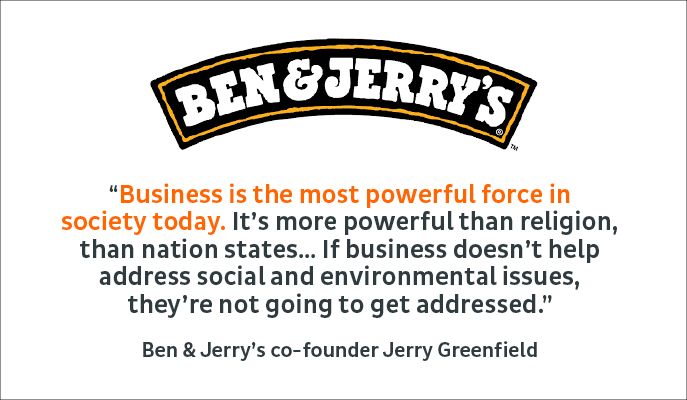
We believe passionately that business and brand can and will be instrumental in building a better world: smarter, fairer, healthier and more inclusive. In fact, we've recently helped a global lifestyle brand with a radical cause-related project in New York. The experience taught us a lot about how brands can help causes effectively and become a force for good.
We love to see brands get involved with important causes, but it's important to recognise that good intentions can sometimes backfire. Here are our top five tips for becoming a successful movement-maker:
1. Make Friends
Remember that when you get behind a cause, you also become part of a movement. Be generous and make friends with fellow movement-makers, and make sure those friendships stay active and healthy.
2. Immerse Yourself
Always meet people where they are. In a recent project, we worked with our friends at Bridge Partnership to bring executives of a leading lifestyle brand to New York to experience a series of immersive interactions, all designed to help them better understand their brand's mission to celebrate inclusion. They met with community activists and went to the events, clubs, art galleries and spaces where their customers are. By leaving their comfort zone, they were able to engage with communities on the communities' own terms.
3. Seek Permission
Ensure that you have permission from people affected by a cause before you join the conversation. Test the water with advocates and activists, and speak to your customers. This will give you a good sense of how your brand's voice can (and can't) add value to the conversation. If you just wade in, you can come across as self-centred and tin-eared - even if your intentions are good.
4. Listen
The best opportunities come when brands and businesses listen properly. Start genuinely two-way conversations with fellow movement-makers. Above all, act on what you hear: ask how you can help, and be prepared to make changes to your plans accordingly.
5. Know Your Place
Movements are all about co-creation, collaboration and openness. Don't try to "own" a cause or movement: think about how your a brand can empower others, promote alternative ideas and inspire new audiences.
This is an abridged version of an article that originally appeared in Salt magazine. The full article can be read here.
The House supports Action Against Child Poverty
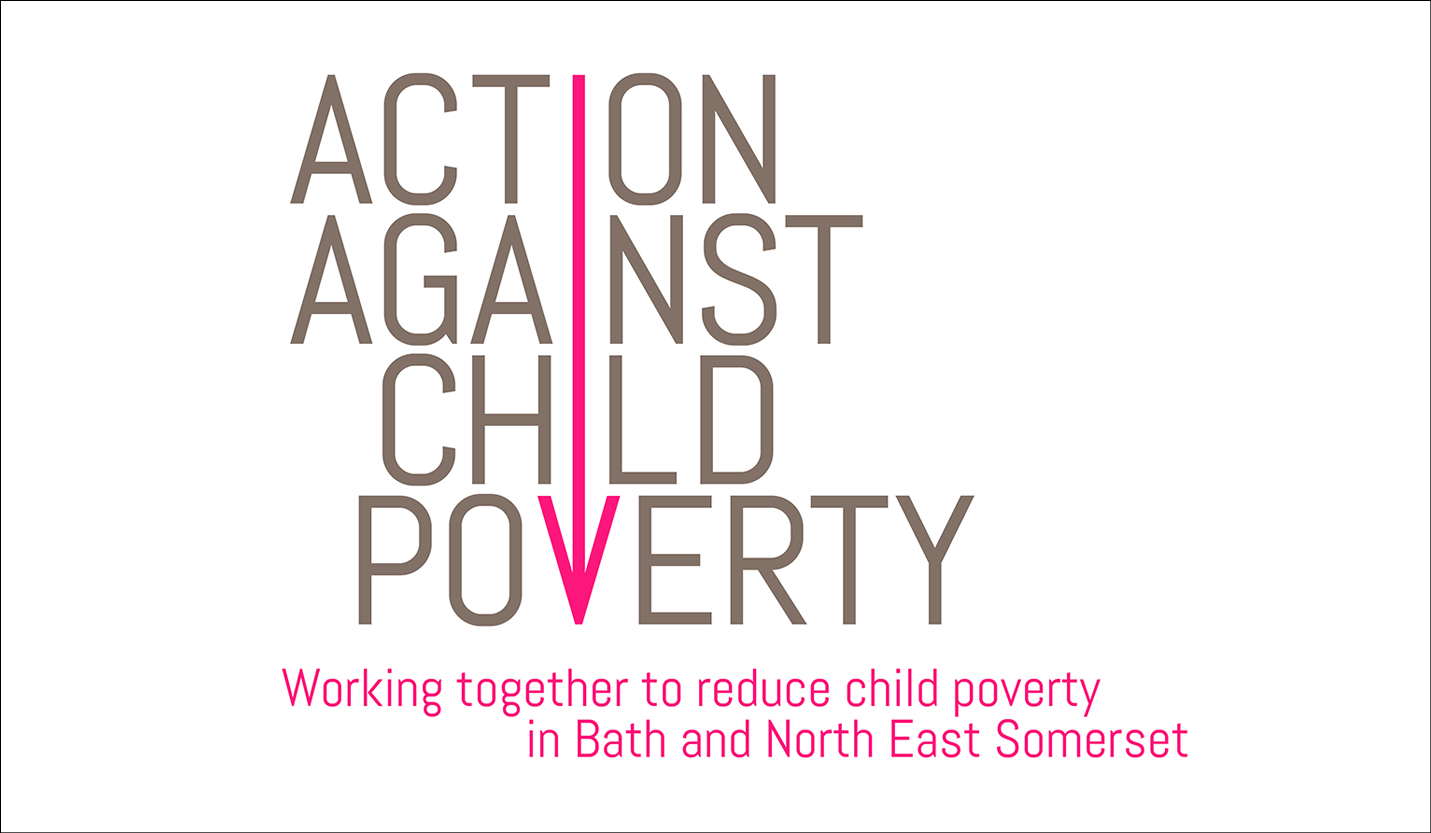
We've designed a visual identity for new Bath-based initiative Action Against Child Poverty.
We live and work in a beautiful city, but it's easy to forget that child poverty in Bath and North East Somerset is surprisingly high. One in five children in the county are defined as living in child poverty, rising to one in three in some areas.
Supported by local MP Ben Howlett, charitable foundation St. John's Hospital and Bath Chronicle editor Lynne Fernquest, Action Against Child Poverty aims to reduce child poverty 50% by 2020.
Taking a collaborative approach, Action Against Child Poverty will work with multiple charities, agencies and individuals to share knowledge and ideas. This will result in practical help and solutions for those most at risk as well as raised awareness of the issue locally.
The House was invited to create a logo for the Action Against Child Poverty brand on back of our on-going work within the city for Bath and North East Somerset Council and charitable initiative Percent Club. The logo focuses heavily on the action-based nature of the organisation and features a visually striking downward arrow to clearly communicate the intention of sharply reducing poverty.
We hope to evolve the brand further over the coming months and do what we can as an agency to help deliver this great ambition.
What We Learned at Offset London 2015
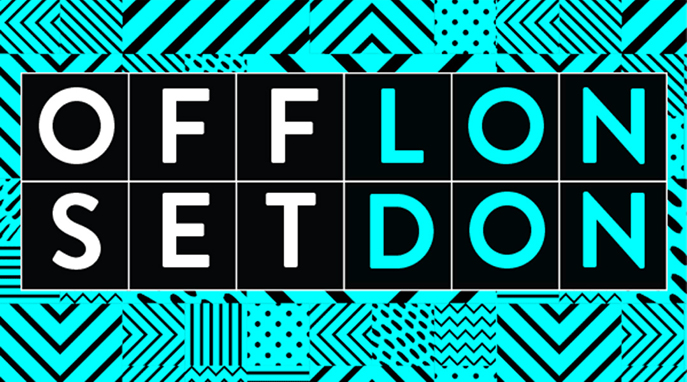
Last week our junior designer, Georgia, was lucky enough to go to Offset London, an inspiring creative conference which brings together practitioners from across a range of creative fields including Graphic Design, Photography, Animation, Illustration, Film and Art.
Georgia:
“As a creative organisation it's important that we are aware of what's going on throughout the creative sector, and attending events like Offset London allows us to keep informed. However more importantly it's inspiring to hear the ideas and stories behind the final designs.”
Georgia's main takeaways:
#1 A good idea has no boundaries
One of the creatives I was particularly inspired by was Eric Kessels, one of the co-founders of international communications agency KesselsKramer. Their ethos ‘Make it meaningful’ is very like-minded to what we believe at The House, as we put meaning and purpose at the centre of everything we do.
A well-known piece of KesselsKramer’s work was for the Hans Brinker hostel in Amsterdam:
“The brief was basically that we had to make sure he wouldn’t receive any more complaints, because that was driving him crazy. The place was a complete shithole so we figured that honesty might be the only luxury that they had. It was anti-advertising and it worked.”
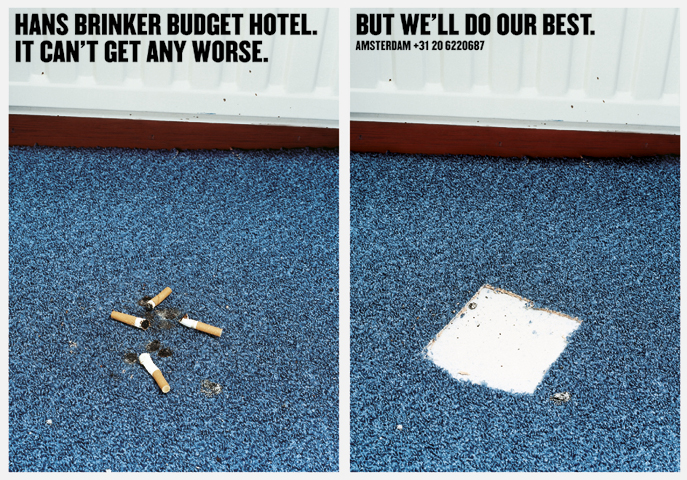
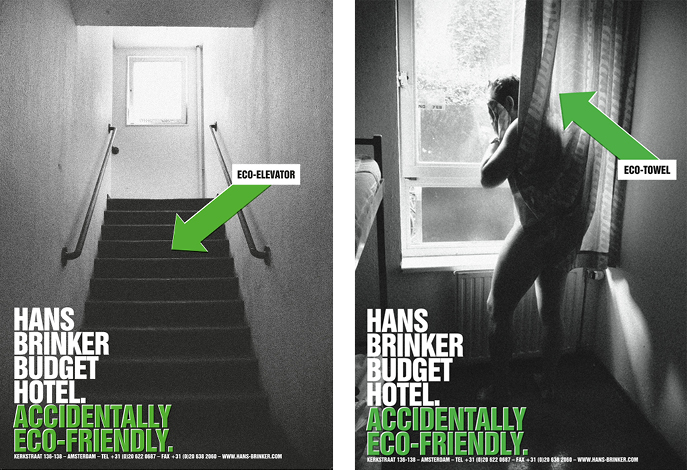
KesselsKramer believe that a good idea has no boundaries – and they’ve recently demonstrated this by evolving the creative idea for Hans Brinker and applying it to their new hostel in Lisbon.
“The Hans Brinker Hostel Lisbon preserves the Hans Brinker Amsterdam’s strongest selling points: dormitories, beer, unhelpful receptionists and surly porters made by KesselsKramer. In fact, key points of differentiation are limited to the staff’s sexier accents and nicer tans, and an increased chance of sunburn.”
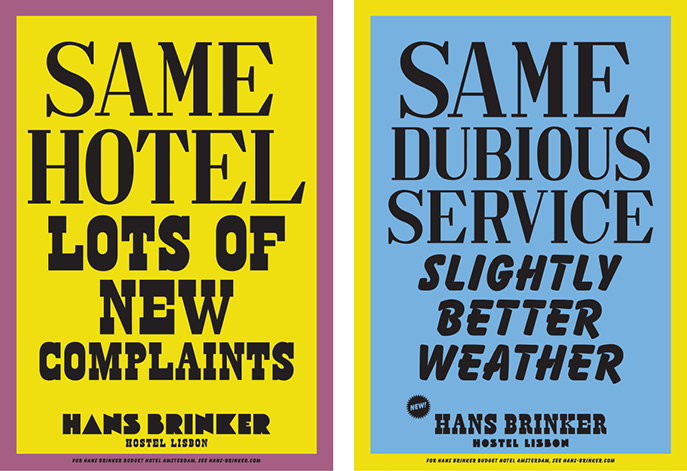
#2 The importance of design
Another creative who really stood out at Offset was Johnny Kelly, an Irish animator based in London. I particularly liked his project ‘Shape’. The purpose was “to get young people thinking about how the world is made around them, and where design fits in” and it was created in collaboration with Pivot Dublin and Dublin City Council in order “to promote wider acceptance and use of design as a tool for positive change.”
Being a designer it’s easy to recognise the importance of design in life. From the pen you hold to the chair you sit in, everything has been carefully designed and crafted to work the way it works, or to look the way it looks. At The House, we strongly believe that business and brands can become a force for good, and design plays an important role in telling this story.
#3 Craft really matters
Another inspiring speaker at Offset London was Seb Lester, a designer and artist who was previously a senior type designer at Monotype, the world’s oldest type foundry. Seb has created custom typefaces for H&M, Intel and British Airways, but his true passion lies with calligraphy. Using Facebook and Instagram as an outlet to show the world his work, Seb has become something of a social media sensation.
“…it has been crazy. I currently have approaching 1.2 million accounts following me on social media. That’s pretty respectable for a pop star, let alone a nerd with a lot of pens. It has created a lot of new opportunities in terms of work and made the world seem like a much smaller place. I really feel like I am getting a lot of people interested in calligraphy and lettering. My followers seem to come from every continent and every walk of life. The last time I looked there was a pet shop in Iran following me, a pole dancer in Las Vegas, and a kid in Mongolia was trying to emulate my calligraphy videos. That is a humbling, surreal and beautiful thing.”
At The House we believe that a brand’s visual identity must be well crafted and defined in order to set it apart from its competitors, and it’s clear that Seb really crafts each piece of calligraphy and pays close attention to detail.

Hans Brinker Amsterdam images: KesselsKramer
Hans Brinker Lisbon images: KesselsKramer
Offset London interview with Eric Kessels
Johnny Kelly: Shape case study
Offset London interview with Johhny Kelly
Offset London interview with Seb Lester
Our highlights of Meaning 2015
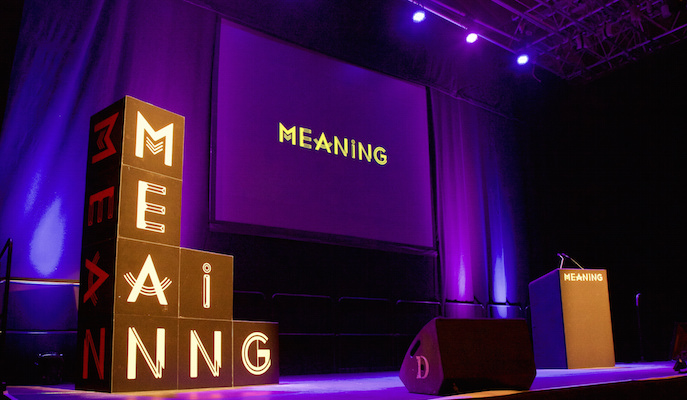
Last week our co-founders Steve Fuller and Graham Massey made their annual trip to the Meaning conference in Brighton. As always it’s difficult to pick the highlights from such a wonderful array of inspiring speakers and presentations, but these were some of Steve and Graham’s favourites:
Miriam Turner, Interface
Steve: “Interface’s story was a huge influence on our decision ten years ago to change our business to focus on purpose. In 1994, CEO Ray Anderson realised that the carpet tile business had a terrible environmental footprint and adopted “Mission Zero” with the audacious goal of having no negative impact by 2020.
As Assistant Vice President of Co-Innovation (what a great title!), Miriam explained how innovation on this scale can only be achieved by taking a innovative approach to innovation itself. This means more open, collaborative and partnership-driven approach.
A really inspiring example of this is Interface’s Net-Works programme. Interface partnered with nylon producer Aquafil, the Zoological Society of London and Danajon Bank of the Philippines to create an inclusive community enterprise network based around the recycling of discarded fishing nets.
Coastal communities in the Philippines collect and sell old nets to Aquafil and Interface, who turn them into carpet tiles. On top of this, Net-Works created a system of community banks that allow locals to save the additional income they make from collecting nets – this also made them more resilient in the face of the devastation caused by Typhoon Haiyan. And of course, the nets are no longer putting sea life in harm’s way.
Jos de Blok, Buurtzorg
Graham: “Jos de Blok’s ideas could revolutionise how we think about the way we build and grow organisations. His organisation Buurtzorg has created an entirely new way of providing home-based medical care in the Netherlands, stripping away unnecessary hierarchy and taking the administrative burden off of nurses.
It’s a model that gives the nurses the autonomy and tools to work to their highest ability, by embedding them in the community and encouraging a collaborative relationship between nurse and patient.
It’s not hard to see how this philosophy could be applied more widely outside of the healthcare system. At its core, it’s about focusing on what you are really trying to do and stripping down everything that’s secondary.”
Read more about Buurtzorg here.
James Vaccaro, Triodos Bank
Steve: “We’ve spent a lot of time thinking about purpose and financial services lately so it was inspiring to hear James share his views on how the sector could reinvent itself. There’s a massive opportunity for banks to refocus on the “social life of money” and how money and finance really fit into our lives, and use that insight to forge a much more emotional and purposeful connection with customers.
James’ call for financial institutions to think and act creatively, in part by enhancing the traditional conceptions of risk and return, was a refreshing message to hear from a sector that is not normally associated with purpose and meaning. We’re optimistic that change is afoot.”
Jaideep Prabhu, Cambridge University
Graham: “Jaideep is the co-author of Frugal Innovation – How To Do More With Less, which questions the dominant ‘big-budget’ approach to innovation and R&D. Instead, Jaideep draws on the experience of how managers and engineers in emerging markets create value and innovation while working within tight resource constraints.
Jaideep introduced us to the concept of “Jugaad” – a slang term used in India to describe a clever fix or innovative work-around. One example that stood out was GE Healthcare’s Lullaby baby-warmer, invented in Bangalore. It’s a stripped-down version of a baby incubator for premature babies that consumes less energy and is more affordable for hospitals in the developing world. Another was the MittiCool Fridge, made of clay and not requiring any electricity to run.
All of the examples he shared showed how taking a frugal approach can open our eyes to much more resource-efficient and environmentally-friendly products and services.”
Annette Mees, artist
Steve: “Annette describes herself as a ‘radical optimist’ so there was no way we weren’t going to get along! For her latest project she’s been speaking to 15-year-olds and 65-year-olds from around the world to create an ‘Almanac of the Future’, looking back at the past 50 years and ahead to the next.
It’s such a simple concept that packs in so much humanity and hope. This kind of creative insight and inspiration is one of the reasons we go to Meaning each year.”
Image: Meaning Conference (used under Creative Commons licence)
Helping Rowcroft Hospice reframe the conversation around end-of-life care

We've helped South Devon hospice Rowcroft develop a new strategy to unlock more support and donations by reframing the conversation around of end-of-life care.
With more and more worthy causes demanding our attention, it’s vital that charities have a precise understanding of their purpose and are able to communicate a clear and inspiring message. Rowcroft cares for over 2,200 people each year, but many of the 270,000 South Devon population were unaware of the great work the hospice does.
We worked with Rowcroft’s executive team to clarify its purpose and build a strategy to increase the hospice’s visibility, better explain the value it provides its patients and families and attract more donors and volunteers. Rowcroft’s refreshed vision and strategy challenges perceptions of hospices by presenting them as a life-affirming place of care and compassion, where the focus is to help patients and families make the most of their time left together.
We facilitated a series of workshop sessions with over 100 members of Rowcroft’s employees, including health and social care professionals, fundraisers, retail staff and volunteers as well as members of patients’ families. From these sessions emerged common themes that will now drive the hospice’s future business and brand strategy. We also helped develop a set of new internal values that will align all elements of the hospice with the new purpose and direction.
Giles Charnaud, Chief Executive of Rowcroft Hospice said:
“The work we have undertaken has helped us to join the dots, connect the head with the heart and move our conversation from the transactional to the emotional. We hope that through our new communications we are able to show Rowcroft is far from dark and depressing; it is a place full of love and laughter.
Rowcroft’s refreshed messaging is now being expressed throughout its communications, including a short film, produced by Bath-based video community interest company Suited and Booted, that captures the positive and life affirming moments that take place every day at the hospice. Entitled Love Life Every Day, the short film has had outstanding press coverage, has been viewed over 75,000 times on social media and was projected on the big screen on Paignton beach during Rowcroft’s ‘Colour Rush’ 5km charity run in September.
Rowcroft’s communications team has since gone on to bring the new proposition to life, sharing uplifting patient and family stories as a key part of their strategy, which has led to media coverage on BBC Spotlight.
Image: Rowcroft
How to attract the best talent by restoring purpose to work

This article originally appeared in Salt magazine.
If the previous decade was all about the rise of the ethical consumer, this decade is surely about the rise of meaningful work.
It makes sense. The more that we buy organic, shop local and support the businesses we love, the more dissonant a 40-hour week of work without a higher purpose starts to feel. This can be true even if the work is well paid and intellectually challenging. Who hasn’t felt that gnawing sense of “what is this all for?” at some point in their career?
This creates a problem for leaders who want to hire – and hang onto – the brightest, most talented and most motivated employees. How can business leaders restore meaning to work?
The answer is through purpose.
We believe that every business has a purpose beyond profit – a reason to exist other than to make money. The future belongs to companies who realise this and put purpose at the heart of their business and brand strategy.
Having a clear sense of purpose helps you attract the right people to your business, keep them there and get the most out of their talents. Here’s why:
#1 Purpose lets people do good
Fewer and fewer people are satisfied with a system that lets them stay true to their beliefs in their spare time, but asks them to switch that part of themselves off when they arrive at the office.
This is particularly true of under-35s. A 2015 Global Tolerance study showed that 62 per cent of under-35s want to work at organisations that have a positive impact on the world. Even more significant, 53 per cent said that they would work harder if their company benefitted society.
This doesn’t mean that you have to turn your accountancy firm into a wind farm in order to attract top talent. The beauty of purpose is that it unlocks the potential for any business to become a force for good, whether it’s Unilever “making sustainable living commonplace” or Lego “inspiring and developing the builders of tomorrow”.
All you have to do is find the human need that your core business serves – your “why”, not your “what” – and make that purpose absolutely central to business and brand, including your “employer brand”. This will attract talented people who understand and share your goals.
#2 Purpose gives people clarity
Of course, just “doing good” is not enough – otherwise no charity would ever have a problem keeping its employees happy.
Purpose does more. As we say at The House, “purpose brings clarity, and clarity brings peace”.
A strong, well-communicated sense of organisational purpose puts everyone on the same page, increases internal confidence in the business and thus helps you retain talent.
In fact, a 2014 Deloitte study found that employees at purposeful firms were more likely to believe that their firm would deliver strong growth and returns over the long-term (83 per cent vs 49 per cent), more optimistic about the firm’s ability to stay ahead of disruption (83 per cent vs 42 per cent) and to remain or become market leaders (80 per cent vs 48 per cent) than those at non-purposeful firms.
Purpose allows employees to see how their work fits into the bigger picture, how each task and each target contributes to a greater whole. Not just as a cog in a machine, but as part of a story: part of a movement towards an inspiring future.
#3 Purpose opens the door to greater employee creativity
Embracing and communicating your business’s purpose will inspire employees to work more creatively by fostering a culture of ownership and innovation.
From the C-Suite to the mailroom, employees with a strong grasp of the company’s purpose are much better at looking beyond the immediate task or the short-term target and understanding how to nurture the fundamental health and direction of the business. In our work with clients, we’ve also seen how a strong purpose can dissolve ‘siloed thinking’ and help different divisions collaborate more effectively.
Finally, by setting out a clear business purpose you are inviting your employees to think about how their own personal purpose fits into their work. This in turn provides common ground for truly meaningful dialogue about career and personal development.
The world of work is changing – and about time. People increasingly want to bring their “whole self” to work, and enlightened business leaders will clear the path to let them do just that. Businesses who make purpose their beacon will be the ones that attract and retain the best talent in the future.
Why ‘purpose beyond profit’ creates extraordinary commercial success
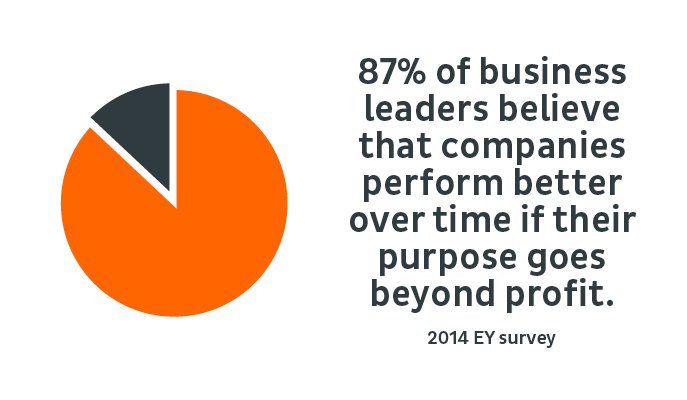
Locating your ‘purpose beyond profit’ can lead to extraordinary commercial success for a number of reasons.
Picture ‘brand purpose’ as an evolutionary ladder. When a brand first steps out of the swamp onto dry land, its purpose is to make an immediate profit: buy low, sell high.
Evolve one step further, and brands start to gain a deeper understanding of the customer’s lifestyle, life cycle and core emotional needs. More evolved brands learn how to adapt and invest in customer relationships over the long term, increasing their chances of survival and success.
We think it’s time for brands to evolve another step: to the level of ‘audacious purpose’.
Purpose beyond profit
Audacious purpose slingshots beyond the customer and straight into the brand’s social purpose – not what it makes, but what it makes happen. Audacious purpose creates a powerful lodestar at which to point your business. When you focus on how your core business makes the world a better place, you create a ‘reason to believe’ that will bring customers, employees, suppliers and partners on a journey with you. Audacious purpose creates movements.
This is not about philanthropy or CSR. In fact, the rationale for locating your ‘purpose beyond profit’ could not be more commercial. There is mounting evidence that audacious, game-changing purpose puts the wind behind your sails and creates the conditions for extraordinary commercial success.
Purposeful leaders, sustainable businesses
We’re not alone in thinking this. A 2014 EY survey revealed that 87 per cent of business leaders believe that companies perform better over time if their purpose goes beyond profit.
Unilever CEO Paul Polman is a shining example. He has set the consumer goods giant a clear objective: to double in size while reducing the company’s overall environmental footprint and increasing its positive social impact. In his words: “If you want to exist as a company in the future, you have to go beyond [CSR and philanthropy].You actually have to make a positive contribution.”
“If you want to exist as a company in the future” – these words should make every business leader sit up and take notice. Our experience working with business leaders to create purposeful visions has shown us that CEOs who understand the power of purpose can inspire long-term, deep-rooted confidence in business and brand. It is this purpose-driven confidence that delivers long-term, sustainable commercial success.
Five ways that audacious purpose delivers commercial success
1. Purpose fuels confidence and drives outperformance
Purpose inspires confidence, which in turn fuels investment, innovation and long-term performance. Why? Because organisations with a strong sense of purpose are buoyed by factors beyond the short-term financials.
As Deloitte’s 2014 Culture of Purpose survey showed, a clear purpose creates a longer horizon for positive returns and breeds confidence that your brand can continue to thrive in a shifting landscape. And as Jim Stengel demonstrated in his must-read book Grow, a study of 50,000 brands, purpose-driven brands simply outperform old-fashioned brands.
Again, Unilever is a great example. CEO Paul Polman stopped the practice of quarterly full reporting in order to reduce the temptation to succumb to short-term thinking. This should have been anathema to the markets, but Unilever’s price hit a record high in April 2015.
2. Purpose inspires customers
As author and strategist Simon Sinek says: “people don’t buy what you do, they buy why you do it”.
Consumer behaviour is increasingly rooted in identity, values and emotion. In this world, purpose drives sales. A study by Havas Media Group, Ipsos and GSK has demonstrated a clear positive link between the ‘meaningfulness’ of a brand and its ‘share of wallet’.
That’s why we’ve seen ethical bank Triodos outpace its peers and grow customer accounts 144 per cent in four years; why ethical outdoor clothing firm Patagonia has achieved five consecutive years of double-digit growth; why organic dairy brand Yeo Valley has achieved consistent sales growth and cracked into the top 100 UK food brands.
3. Purpose attracts (and retains) talent
Audacious purpose attracts the best minds and electrifies employee engagement. In our own work helping business leaders to inspire purposeful visions, we’ve seen time and time again how fostering a culture of purpose brings out the extraordinary in employees.
This trend is only set to increase: research consultancy Global Tolerance has found that 62 per cent of UK millennials want to work for an organisation with a positive impact on the world, while 53 per cent said they would work harder if their company benefited society.
4. Purpose attracts investment
Until now the pantomime villain in the purpose story has been “short-term shareholder returns”. But investors are increasingly taking the “triple bottom line” of social, environmental and financial returns into consideration when allocating funds: witness the recent divestments in fossil fuels by institutional investors across Europe.
It’s about more than avoiding harm: the 2015 RBC/CapGemini World Wealth Report found that 92 per cent of high- net-worth individuals (HNWIs) believe that thoughtful investment is an important way to drive social impact, while a 2014 US Trust survey showed that two-thirds of millennial-aged investors with at least $3 million view their investment decisions as “a way to express my social, political or environmental values”.
It’s no wonder that investment banks are scrambling to set up their own impact investing programmes. Shouldn’t your brand be aligned with purposeful investor behaviour?
5. Purpose drives innovation
What would you do if your main product or service were made illegal? It’s a question we sometimes ask our clients to focus minds back on the core purpose of their business and brand.
The germ of the question is about innovation: how else could you achieve your purpose beyond what you currently produce or offer? How can you stay ahead of disruption and outperform the competition? When you understand the ‘why’, new horizons open up to explore the ‘how’ and the ‘what’ in fresh and innovative ways.
How to be an ethical leader

Leaders must follow three golden rules in order to embody their chosen ethos, writes Graham Massey, the business head of The House, a consultancy that believes valuable businesses are born out of purpose.
What does it take to be an ethical boss? Does it mean championing diversity, or pushing for a carbon-free office, or encouraging volunteering? These are all steps in the right direction, but the most important thing is for an ethical boss to take a step back and consider what “being ethical” means.
Ethics – at least as Aristotle understood it, and he thought about it more than most – is not about ticking off a checklist or keeping up to date with trends and best practices. It’s not even really about judgement or decision-making. Ethics is about consistent behaviour, which involves having an ethos that is expressed in your actions. You are what you do, not what you say.
So there’s no easy guide to follow. Instead, here are the three golden rules of ethical leadership.
Rule 1: Be consistent
Ethical bosses pick their values carefully and live them every day. Their values and ethos might be different from others, and that’s fine. There is no gold standard to live up to, only the standards that a boss sets for himself or herself. However, the employees have the right to expect consistency in how the boss lives out his or her ethos. A boss cannot put values on pause when reality bites.
Rule 2: Lead by example
What’s the point of being an ethical boss? Sure, it helps to guarantee a good night’s sleep better. But it also has implications for the entire business. At The House, we believe leaders create corporate culture in their own image – for better or worse. Bosses must consider what their actions signal about the kinds of behaviour they want to see across the organisation. Bosses should remember: “What you permit, you promote”. Having a consistent ethos lends the authority to challenge behaviour that undermines corporate values.
Rule 3: Tell the truth
This is really the most important rule of all. The simplest way to treat someone fairly is to tell them the truth. We crave truth in every sphere of our lives: politics, business, friendship and love. Whatever the personal ethos or corporate values might be, the employees deserve a true picture of what is expected of them and what they can expect from the leader. Employee surveys consistently bear this out: whether the news is good or bad, they need to hear it straight.
Picking values, sticking to them and communicating them transparently will lead to a healthier, fairer and happier workplace. Any leaders who do this will reap the rewards of being an ethical boss.
Do your behaviours match your values?

Have you ever worked in a company where the corporate values pinned on the wall didn’t match the day-to-day reality?
Business leaders know that this can happen despite the very best intentions. So what causes corporate values to slip? Why do leaders struggle to close the gap between what’s said and what’s done?
Often, it’s a failure to realise that values only truly have meaning when they are expressed as behaviours. In fact, at The House we believe that values ARE behaviours – nothing more, nothing less. By thinking about values in terms of behaviours, leaders can build robust and resilient cultures in which values are lived day in, day out.
Behaviour goes deeper
Take a value like “transparency”. A company that says it values transparency but doesn’t behave transparently clearly has a problem – that’s obvious. But how many companies take the extra step of articulating what “transparent behaviour” actually looks like across their business?
Do this, and you will see that the answer will be different for each department, each process and at each stage of the customer journey. No matter how good the intention, a purely abstract value set won’t get into the DNA of the organisation and create positive change.
Think in terms of value-behaviours, and you can translate intention into attention. You can focus on each part of the business in turn and create a clear and shared set of expectations of how colleagues will treat each other and how they will treat customers.
Opening up space
Focusing on behaviours doesn’t mean micro-managing your team. On the contrary, asking questions about how to translate abstract values into concrete behaviours can open up a new space for employees to give input and shape how the organisation works.
We’ve seen in our work that encouraging conversations around the question of “what does this shared value mean for me and my role” increases the likelihood that colleagues will buy into your company’s values and vision.
The end result is that employees build a common language of ‘words and deeds’ that infuse values into day-to-day activity and clearly express what the business stands for.
Do you need to rethink your corporate values?
Working with clients, we’ve found that when leaders start to think in terms of behaviours, they often look at their company’s stated values with fresh eyes.
At times, those values are found wanting – despite best intentions, they are little more than words on a wall because they didn’t come from the core of the organisation’s purpose and brand promise, and thus don’t have any purchase on the day-to-day operations of the business.
For example, we worked with the senior leadership team of a B2B technology firm that had a long list of generic corporate values. When we challenged them to think in terms of behaviours, they quickly realised that the existing set of values was not up to the task of generating the positive change they wanted to see in the company.
We worked with them to refocus the value set around the powerful ideas that would support their purpose and differentiate them from the competition. We then mapped them against every part of the customer journey.
The end result was a set of four core values. These were built with real day-to-day behaviours in mind, articulated in paragraph-length detail and then collected in a pack that sits on every employee’s desk.
Three questions to ask about your values…
As an exercise, look at the stated values of your organisation and ask yourself these three questions:
1. Do your values help you solve problems?
Are you using your values as tools? Can you take a situation and use your values as a practical guide to decision-making?
Can you use your values to measure employee or team performance? Do you have a framework to measure performance AND behaviour? If you have team members who hit targets but create problems for others, are you able to show clearly how their behaviour contravenes your corporate values? Could you sensibly use the company’s values in a review or appraisal situation?
2. Do your values differentiate you from the competition?
‘Honesty”, “integrity” and “customer focus” are all essential ingredients of any business – which is why they are unlikely to differentiate you from the competition.
Compare that to the values of the newly rebranded Ordnance Survey, the UK’s leading supplier of geographic information: “adventurous, incisive, restless and true”. It’s a fantastic value set that reflects customer need and clearly points Ordnance Survey towards constant improvement and development of its products and services.
Similarly, Google’s value statement that “it’s best to do one thing really, really well” clearly differentiates the company’s approach and culture against rivals who might seek expand service reach at the expense of service quality.
3. Can you afford to leave your values pinned to the wall?
Developing your corporate values is really about deciding which behaviours you want to see manifest across your organisation. By reframing corporate values, in terms of desired behaviours, leaders can build strong, resilient cultures that can withstand changes and support long-term business development.
How to measure the strength of your culture and values

A strong, values-led company culture is what brings your purpose to life. But how can you track how strong your culture is - how well it is being manifested across your organisation?
The good news is that culture and values CAN be measured. In fact, one of the tools we use at The House is the Cultural Values Assessment (CVA) developed by the Barrett Values Centre.
Used by over 6,000 organisations, the CVA lets companies to take a frank look at their culture. Through three simple questions that take around 15 minutes to answer, the CVA provides a complete overview of your cultural strengths and weaknesses, taking into account personal motivations, employees' unique experiences and the shared understanding of the organisation’s driving purpose.
A CVA will identify problems within an organisation and figure out what is stopping employees from getting the most out of the business - what is creating entropy. Entropy has a real cost to your bottom line: whether that’s through staff turnover, wasted time or lack of morale.
The CVA will then allow meaningful conversations to unfold within your organisation - conversations surrounding priorities, purpose and strategy (including what those terms actually mean to you and your employees). At the end, you are presented with a comprehensive overview of how your values manifest themselves in your business, represented visually through diagrams, scorecards and a list of values and projections that outlines where your culture fits into your business and the lives of you and your employees.
At the House we’ve used the Cultural Values Assessment to understand what our culture means to us all individually and to ensure that we are able to live it day-by-day. It's also become an important part of how we help our clients build purpose, culture and brand. In fact, our Business Head Graham Massey, is accredited by the Barrett Values Centre to conduct CVAs.
“Through working with Barrett Values Centre I have become an ambassador, a consultant and a trainer,” Graham explains. “Anyone in the world can call me and I can help them understand how culture affects them and their business. If we believe that business is a "force for good", we have to understand where culture fits into that and how it helps to shape a company's driving purpose.”
We’re hiring!
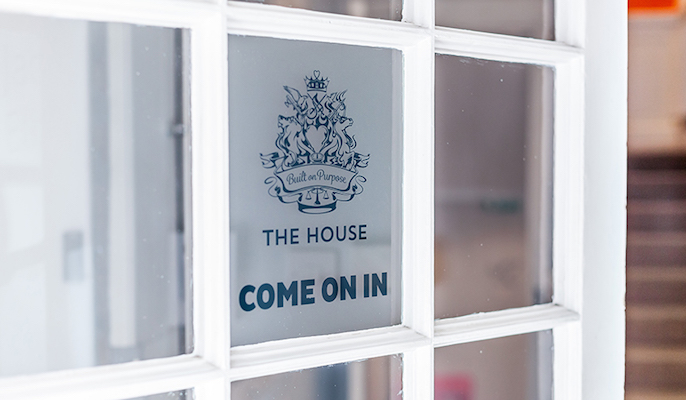
House Manager
5 days per week
8.30am – 5.30pm
Our House Manager will be great at ‘looking after’.
They will look after our building, our business, our clients (when they visit) and our team. This person is key to the rest of the team focussing on their own jobs.
If you love process and order, are comfortable being firm where needed, are happy to be the calm in the team and will warmly welcome people to our building when they visit - we would love to hear from you.
The right person for us will have good organisational skills, a keen eye for detail, be able to take the initiative and have a willingness to learn. You don't have to have experience in an agency or any formal qualifications - a background in hospitality or as a PA would give you many transferrable skills.
Excellent time management and the ability to prioritise tasks is a must. Ideally we would like someone who is computer literate, with a good understanding of Microsoft office programmes such as PowerPoint and Word.
Overall we need a good all-rounder; someone who can organise, multi-task, is willing to take on anything, and enjoys taking care of people (with a firm touch).
The House is a Bath-based brand agency working with businesses and brands that are a force for good; we are enthusiastic people who value honesty and integrity above all. We love what we do and we have a lot of fun doing it.
If this sounds like you then we would love to hear from you.
Please email Sammy for more details, with a CV or to arrange a conversation.
Putting purpose at the heart of the Great Western Railway

We’re excited to see a shining example of a truly purpose-led rebrand right on our doorstep.
Our regional train operator First Great Western has taken the gutsy decision to reinstate the original 1833 name of Great Western Railway – created by the railway’s illustrious founder, Isambard Kingdom Brunel - across its entire brand and livery.
Why do we love this? Well it’s hard not to admire the audacity of ‘un-branding’ the parent company FirstGroup name altogether, as well as the striking visual identity created by John Rushworth of design firm Pentagram.
But what we really love is how this move demonstrates the train operator’s understanding of its wider purpose.
The Great Western Railway was an incredible feat of engineering that transformed the economic fortunes of the South West, opening it up to trade and tourism. This rebrand signals a change in ethos whereby, in the new GWR’s words, “we no longer behave as a franchisee, but as a custodian – responsible for reinvigorating the west by returning the railway to its former glory.”
Under the banner of “Building a Greater West” and “For the Love of Rail”, GWR is working with Network Rail to invest £7.5 billion in the region’s railway, introducing more frequent services and refurbished trains (including – finally - free WiFi).
Of course, the true test is still to come. Will GWR be able to bring this audacious purpose to life? Railway operators face a unique set of challenges, often blamed for things outside of their control. Can GWR’s re-found purpose translate into a strong values-led culture throughout the organisation, and be felt at every stage of the customer journey?
Time will tell, but we salute GWR for taking a bold first step by putting purpose at the heart of its strategy.
Photo: Great Western Railway
The purpose of money

Can finance rediscover its purpose? We went to Salt magazine’s Disrupting Finance conference in London to hear how new voices and new players are bringing purposeful, values-led and disruptive approaches to a sector that many see as the last bastion of dog-eat-dog, win-at-all-costs capitalism. We heard that:
#1: Finance is waking up to the importance of purpose
Money and finance are supposed to serve human needs and wants – call it ‘society’, the ‘common good’ or the ‘real economy’. Instead, banks have moved away from purposeful activity in favour of complex financial engineering. To rediscover the purpose of finance, banking brands will have to think more imaginatively about money and the role it plays in people’s lives.
Purpose is increasingly driving investment decisions. 65% of Millennials see investments as a way to express their values, not just about risk and return (and they are set to inherit $1 trillion in North America alone). This creates opportunities for banks, funds and financial advisors to help individuals find investments that meet a new set of needs.
#2 New players are seeking to reconnect people with their money
People are thinking more about what happens to their money after they deposit it. New players such as crowdfunding platforms Ethex and the Social Stock Exchange are reconnecting people with their money by allowing for transparent forms of investment. Banks are starting to respond to this too - Triodos, for example, publishes all of its investments online, explained CEO Charles Middleton.
Crucially, this greater connection is driving a shift among ethical investors from a passive “negative screening” approach (no tobacco, gambling, guns) to a positive “impact investing” approach, where individual investors actively seek out businesses with a social purpose.
The more that people think about where their money is ending up, argued Julia Groves of the Trillion Fund, the more that they are likely to favour purposeful investments in ‘real’ things that they can understand.
#3 True disruption will come from the “New New”
New market entrants are using technology to attack the flabby bits of the existing financial services activity chain and thus create a “new old”. The truly disruptive aspect, however, is where new players are able to bring whole new audiences into play through innovative business models. Within the “new new”, we are seeing:
- Projects getting funded that otherwise wouldn’t get funded
- Creating customers where there weren’t customers before
- More productivity and less dead capital as the friction of small-ticket investing reduces
- Bringing in ‘unbanked’ millennials who want digital-only solutions – people that banks can’t find
#4 Incumbents can play a huge role if they embrace purpose and bring their values to life
While the event focused on emerging players and new business models, incumbent banks can be a part of this new, purposeful future.
Education: The most conservative players in finance are often the customers. Reconnecting people with their money will require consumer education on a huge scale, a role that can only really be performed by incumbents – Barclays Bank is notable for their UK work in this area.
Innovation: Innovation can be more challenging for bigger players, but when done right it will reach more people. As Mark Elliott of software firm SwordApax argued, there is a tension between trust and innovation. Banks must seek to understand where customers want them to foster trust (i.e. stability, reassurance) and where they want innovation in services.
Culture: Large banks continue to face cultural challenges. Simon Lamb, a consultant who has led a far-reaching cultural change programme for a major global bank, argued that people tend to have good values - the problem is what happens when they walk through the door at work. People will abdicate their own values when they feel under pressure to fit in, look good and follow the rules. To counter this, he said, “you need to create belief systems in organisations.”
The House crafts visual identity for “Percent Club” charity initiative
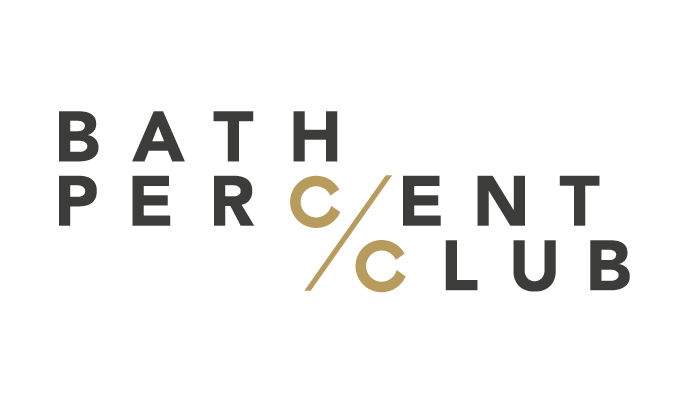
We’ve created a visual identity for Percent Club, a local charitable business initiative to that encourages firms across the South West to give a percentage of their profits towards charitable causes.
We believe that business can be a force for good. Joining the Percent Club is a simple step that will help Bath businesses inspire real change in the local community by donating money, time and in-kind contributions.
The logo we’ve designed serves as a “badge of membership” that participating businesses can use on stationary, websites and emails to promote their involvement and to spread the word about the initiative. This visual identity neatly communicates the Percent Club’s purpose and will help build a movement around business charitable giving in Bath.
We’ve also developed the design of the Percent Club’s website and newsletter.
Our work for Percent Club is the latest in a string of pro bono projects for local organisations that promote good, including Bath Rugby Foundation, Julian House, the Public Services Board and the Special Olympics.
How company rituals can help embed your culture
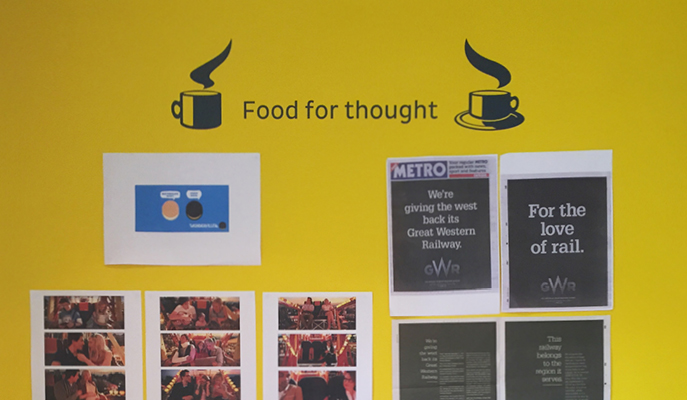
There are many ways to bring your culture to life in the workplace. As each company has different values, it’s important to do so in a way that’s unique to your organisation.
A really simple way of doing this is to create company rituals that capture and embody the mindset you want to see across your business. If done right, simple and regular group activities can help unify your team around certain ideas, values and behaviours.
Company rituals come in all shapes and sizes, from the famous “company song”, popular in East Asia and beyond, to simple Friday afternoon happy hours. There’s definitely one out there that will suit your business and your employees.
Here some examples that may inspire:
Bristlecone
Financial tech firm Bristlecone holds a group bonding session every Friday at 4pm. ”We have a ‘toast jar’ that everyone contributes to throughout the week, so during this hour we get a chance to read the toasts aloud and cheers our teammates,” explains CEO Dusty Wunderlich.
Salo
Salo is a Minneapolis-based financial and human resources staffing company. Salo has a company ritual around its new business process. New requests from customers are posted on a whiteboard that covers an entire wall – but there’s a company rule that these requests can only be recorded, altered or erased by whoever landed the client. "That's their graffiti, their mark. You wouldn't alter someone else's graffiti. It would be bad luck," explains Salo Managing Director Gwen Martin.
These whiteboards, which are visible to the entire team, function as "a central hub of activity," says Adam Sprecher, a managing director. When a new name goes up, "there's a little anxiety, of 'OK…Now it's time to perform!' It's an adrenaline rush," he says.
Pocket Gems
Pocket Gems, a San Francisco-based game designer, has a ritual for new team members: each receives $100 to spend creatively on the office environment, whether that’s new decorations, a ping-pong table or a beer keg.
This means that everyone gets to put their personal stamp on how the office looks and feels, inspiring a spirit of collaboration and workplace full of personality.
The House: “Food for Thought” and “Feelgood Friday”
Of course we can’t talk about company rituals without sharing our own. We have two: “Food for Thought” and “Feelgood Friday”.
Throughout the week, we stick up interesting work and thought-provoking images, articles and ideas on our “Food for Thought” wall. Then, once a week, all of the Housemates sit down over fish finger sandwiches and talk about what’s been inspiring us. We might even watch a short video or play a game. This simple ritual helps to keep our hearts and minds open and alert to new creative possibilities.
“Feelgood Friday” is an office happy hour with a twist. We get together to unwind together over a beer, but also to share each of our little victories and “feelgood moments” from the week – everything from finishing a major rebrand project to getting the photocopier fixed. Problem-solving can wait until Monday - spending half an hour just focusing on the little ‘wins’ lifts our mood at the end of a long week and means we head into the weekend feeling upbeat.

Why you should put culture first and engagement second
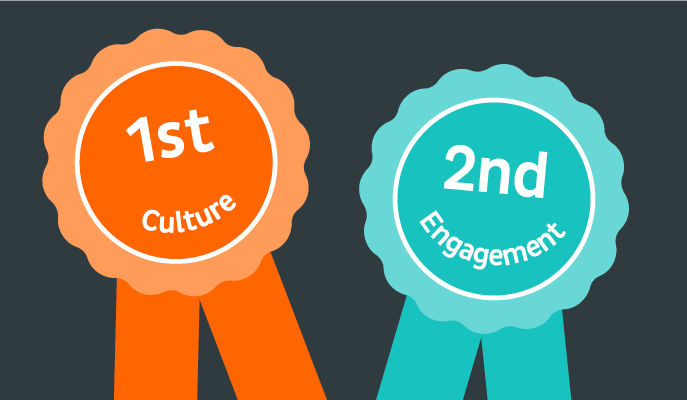
Our Business Head, Graham Massey, has once again shared our thoughts with ethical business magazine Salt, this time discussing why we think culture is more important than employee engagement. You can read the full article on Salt's website.
“Put simply, strong workplaces aren’t built on strong engagement: they are built on shared beliefs, value-led behaviours and an inspiring common purpose. In other words, a common culture.”
In the article, Graham outlines the key questions that employee engagement programmes rarely ask:
- What are your values as an individual and how do they align with the purpose and values of the company?
- What are you getting out of working here – and how does that affect what you’re putting in?
- Why do you work here and not at a competitor?
These are deeper questions of values and culture.
Traditional employee engagement always risks becoming a survey-driven exercise designed to prove that everything’s OK rather than actually making sure that everything’s OK.
By contrast, culture goes beyond engagement and speaks to the emotional, purposeful element in an employee’s motivation.
A strong values-led culture keeps your organisation healthy and your employees inspired and engaged. And best of all, culture is still measurable, thanks to tools like the Barrett Values Centre’s Cultural Value Assessments.
For more, please read the full article here.
Inspiring the next generation of Bath business talent
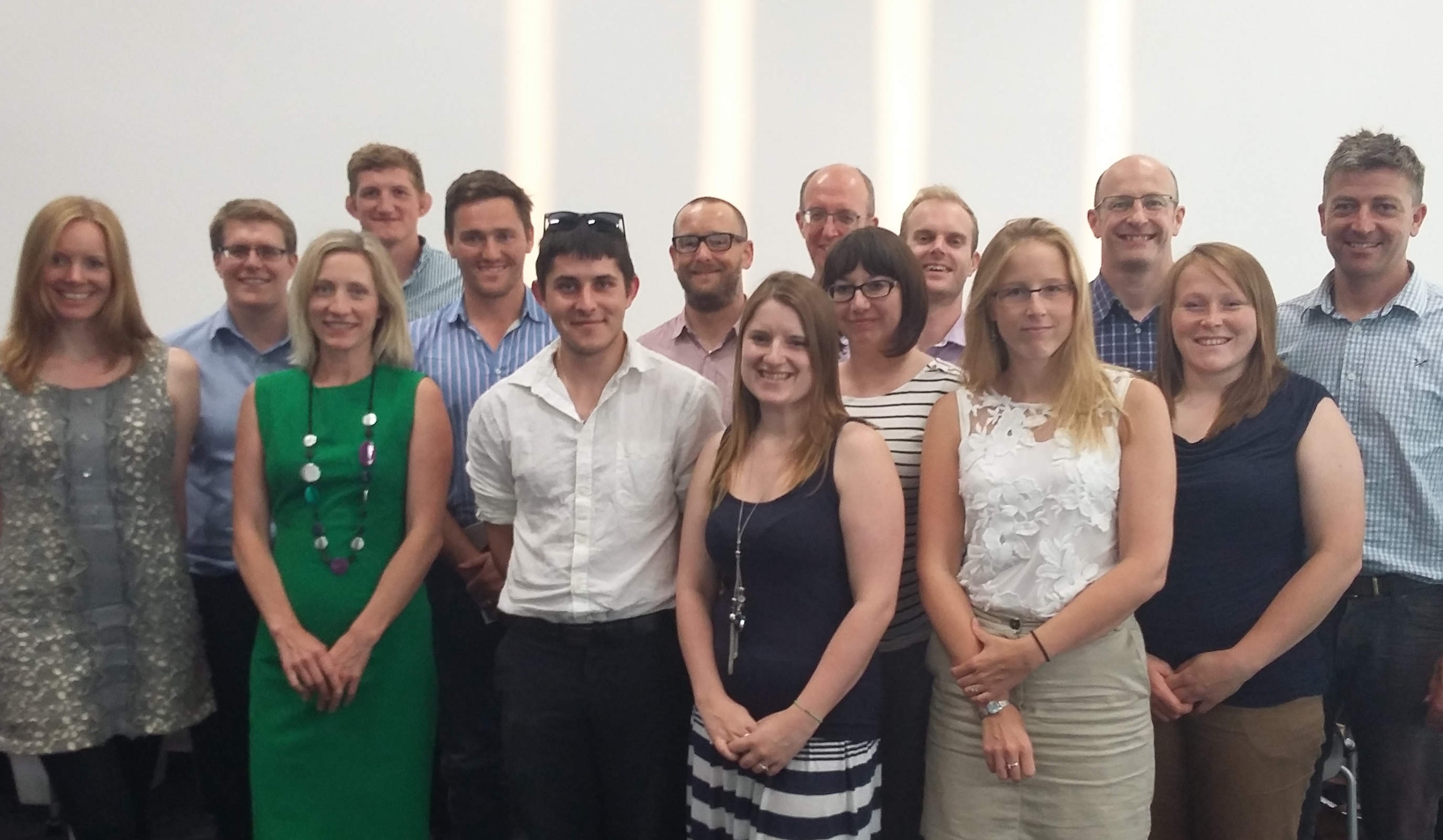
We’re very excited to be supporting a fantastic new competition that will pair Bath’s best and brightest young business minds with the city’s excellent social enterprises, startups, charities and community organisations.
Through the Future Talent Accelerator Challenge competition, up to four local organisations will benefit from the time, energy and expertise of the 12 young professionals.
The talented twelve are the inaugural participants in the Future Talent Programme, a yearlong leadership mentoring programme organised by Bath Bridge, an independent city-wide advisory group. Drawn from Curo, Gradwell, Bath Rugby Foundation, Julian House, Bath Spa University, Mayden and Mentoring Plus, they offer local organisations a range of skills and expertise, including:
- Relationship and partnership building
- Operations management, systems and process
- Business planning, strategy and development
- Marketing, events, communications and branding
- Income generation and fundraising strategy
- Troubleshooting
We are inviting any social enterprise, charity, community organization or socially-minded startup to come forward and apply – just email competition@bathbridge.co.uk before September 30 and explain how you could benefit from a dedicated 6-month special project. Winners will be chosen at a “Dragon’s Den”-style event on Wednesday 28 October.
The House helps Bath’s museums team up to boost visitor numbers
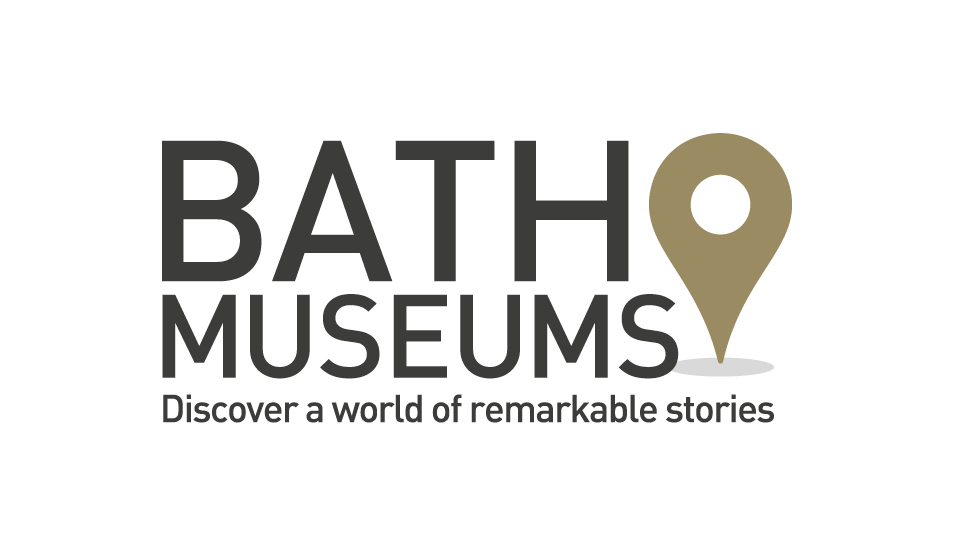
The House is helping Bath Museums increase the profile and visitor numbers of 13 local museums by developing a collective purpose, identity and communications collateral.
Following on from a 2-year project to explore the value of working collaboratively around a number of activities, Bath’s 13 museums invited us to facilitate a series of workshops that brought them together to talk about their common purpose and pinpoint shared goals. After establishing this sense of collective purpose and brand, we created a series of tools to support Bath Museums’ target of increasing visitor numbers by at least 5% by the end of 2016.
This included a new visual identity for the group, an events calendar and a set of internal stakeholder engagement collateral to help tell their story across the city. The House also worked to create individual ‘WOW’ stories; brief summaries of the most eye-catching attractions of each museum backed by historical background information and notable trivia, allowing easier and faster promotion to attract visitors and increase each museum’s profile.
Anna Bryant, Project Co-ordinator, Bath Museums, said: “Bath Museums now know that they are better together, and working with The House has allowed them to explore their collective story, the development of which enables them to talk confidently about themselves and each other to both visitors to the city and potential partners”.
We see great potential to grow Bath’s reputation as one of the world’s leading cultural hotspots. We are very proud to support Bath Museums in creating a collective purpose and story for Bath’s world-class cultural attractions.
Exploring vision and values at Inspire 2015
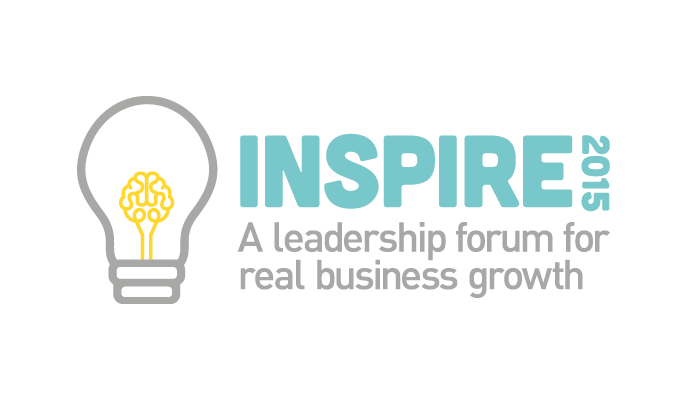
Last month we had the pleasure of taking part in Inspire 2015, a leadership forum for real business growth hosted in Bath by Liza Hughes of Whynot Coaching. We spoke and led a workshop around the power of purpose-led vision and values-led culture. True to its name, the event brought together forward-looking business leaders for a day of reflection, sharing and deep inspiration. Watch the highlights below and keep an eye out for Inspire 2016!

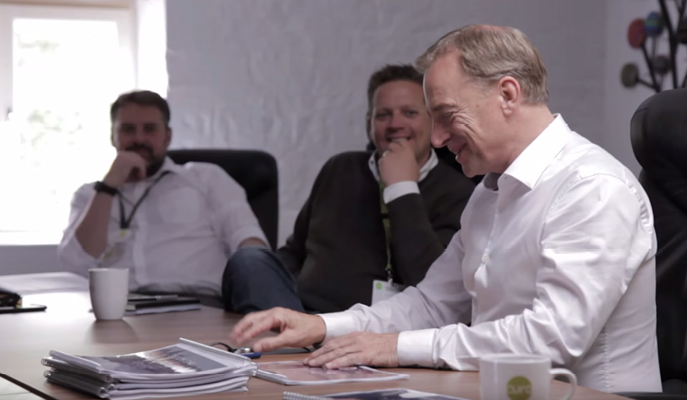
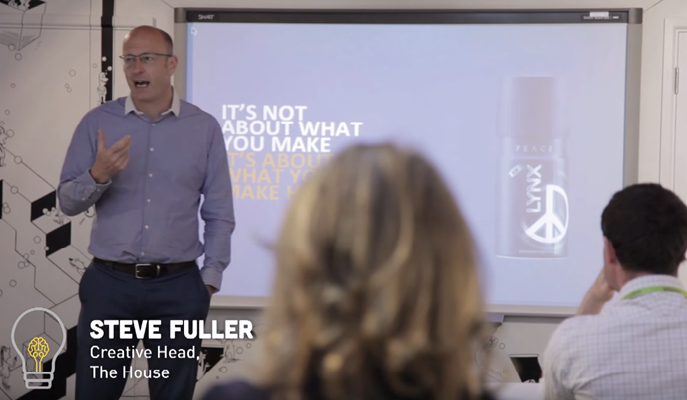
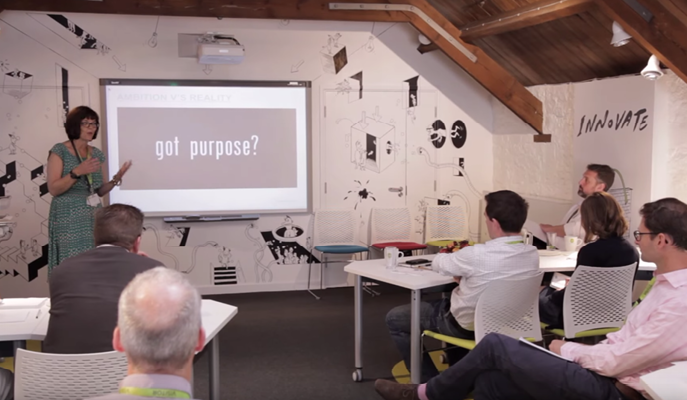
Why we’re backing the Big Bath City Bid
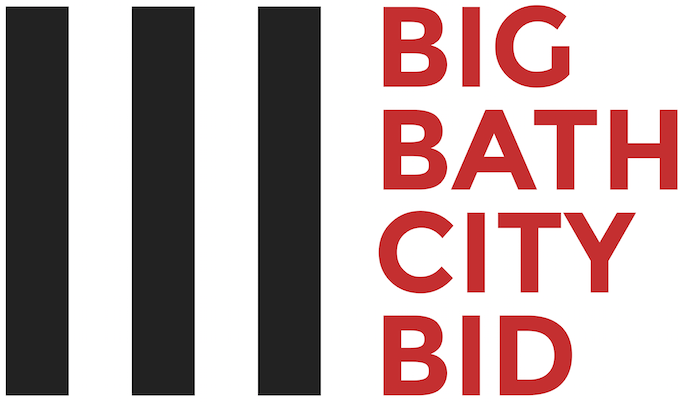
The House has committed £1000 to buy community shares in the Big Bath City Bid, a £750,000 campaign to turn Bath City FC into a community-owned club. We are encouraging all Bath businesses to “Back the Bid”.
We’ve invested because we are inspired by the game-changing potential of a community-owned club with social purpose at its heart. We don’t see our investment as an act of charity – we are investing in the transformation of a vital community asset and local institution that will produce real social and economic returns for Bath. Having worked with Bath Rugby Foundation, we understand the power of sport to change lives.
What’s in it for us? Well, for our £1000 we get a special listing in the programme and a 10% staff discount. But for us that’s not really the point. We believe:
- A community-owned Bath City FC will improve Bath’s profile as a creative, future-focused, beautifully inventive city
- The volunteer structure and social impact programme that comes with community ownership will increase social capital, employability and ‘upskill’ local people, including the young, supporting the next generation of local talent
- A refreshed and renewed Bath City FC will create a new, attractive marketing channel for Bath business
Above all, community-owned Bath City FC can become a hub for business, local authorities and the third sector to work together and tackle local challenges such as elderly isolation, health and wellbeing, independent living for the disabled, mental health and the skills gap.
What excites us the most is that, as “owner-members”, we would have a direct voice in the future shaping of the club. With the best of Bath’s businesses engaged, the possibilities are endless: a Bath City Ladies team, a 3G all-weather pitch that makes Twerton Park the true “home of Bath football”, a co-working space for our innovative startups.
This is about more than ‘corporate social responsibility’. We know from our own work that businesses with a clear sense of “purpose beyond profit” enjoy a competitive advantage in attracting customers, employees and investment. We will be a stronger business for our involvement in the Big Bath City Bid. By buying community shares in Bath City, we are simply investing in ourselves.
We humbly suggest that every business owner in Bath watches this video and visits the bigbathcitybid.org.uk website.
Let’s give Bath the football club it deserves.
Our “tech for good” faves – part two

We love to see tech used to promote the common good. In our last post we highlighted some of the great work companies in Bath and Bristol are doing to find digital solutions to social challenges. Here, we share some of our favourite national and international “tech for good” companies and initiatives.
Denmark’s BeMyEyes is a not-for-profit app that connects blind users with a network of volunteer helpers from around the world via a live video connection. Sighted members can help blind users with everyday tasks such as checking the expiry date on food or navigating new and unfamiliar surroundings.
We really like the simplicity of the concept and application.
Be My Eyes - helping blind see from Be My Eyes on Vimeo.
CNA Speaking Exchange is a Brazil-based online platform that connects South American students with American pensioners in retirement communities for conversation. The students get to improve their English, while the senior citizens are able to chat with a friendly face and feel less isolated – a huge problem among the elderly population that we have seen first-hand in our work with hospices.
(Warning: this video will probably make you cry).
Shuddle is a US online platform and app that allows time-pressed parents to book transport for their children to get to school and after-school activities like sports practices or music lessons. To guarantee safety and peace of mind, all of Shuddle’s drivers are heavily screened, with many holding teaching, nursing or nanny qualifications.
As CEO Nick Allen told us by email:
“The modern world puts a lot of pressure on families: longer working hours for parents, busier schedules for kids. We're working to make family living manageable rather than stressful for everyone, so you could say social purpose comes into what we do. Safety is also a huge part of what we do, so as leaders in transport for families it's really important that we set extremely high standards around road and passenger safety with our drivers, as well as work with local government to help build policy around safe ride sharing.”
The New York Times, Guardian, Techcrunch and WIRED are all talking about Shuddle. We have a special reason to include Shuddle on our list of favourites: our former designer Spencer now lives in San Francisco and works for them.
Last but not least is Localgiving, UK-wide not-for-profit online platform that helps charities and community projects to connect with supporters, fundraise online and take control of their future. The platform has just reached the £10m point in terms of funds delivered.
Localgiving’s mission is to safeguard the future of local charities by helping them qualify for GiftAid via its platform, giving them access to new online fundraising channels and improving their digital savvy. Localgiving’s online platform also helps charities access matching funds, making donations go further (see video).
Chairman and founder Marcelle Speller OBE has a bold an inspiring vision of how tech and digital can be leveraged to transform charities in the UK – read our Q&A with her to hear more.
Our “tech for good” faves – part one

At The House we get very excited about technology making the world a better place. Whether it’s software that saves lives or ‘straw bale’ houses that drastically reduce energy consumption, we celebrate human ingenuity that leads to social good.
This week we contributed an article to Techspark on ‘tech for good’ startups. Neighbourly, Localgiving, Shuddle and CiteAb were all kind enough to speak to us and share insights into how operating in the ‘tech for good’ space affects how they attract and retain talent, as well as how they compete in the market.
You can read the full article here. In this post, we will share some of our favourite local examples of “tech for good” companies. In our next post, we’ll share some great national and international examples.
This “walking bus” app helps children walk or bike to school safely. By selecting a route and a time, parents can arrange for their child to join a group of other kids who are escorted by a responsible adult ‘driver’ to and from school. Parents then receive a message when their child safely arrives.
We particularly like the gamification element that sees kids pick up points for completing journeys on foot. It’s no surprise that Crocodile won Bristol’s £50,000 Green Capital Digital Challenge.
Deki is a Bristol-based online microfinance platform that allows users to make life-changing loans to entrepreneurs in the developing world. With just a £10 loan, users can help small businesses overseas make the most basic capital investments they need to become self-sufficient – buying paraffin in bulk to resell at profit, or installing a chicken coop to raise chickens.
What’s especially great about Deki is that it provides entrepreneurs with more than finance – business training and support are also integral to Deki’s programme.
Neighbourly is an online platform that connects community projects with businesses that want to help. Launched in 2014, Neighbourly has helped 213 projects and there’s now a total of almost £1.8m pledged in the site.
Through Neighbourly, grant-giving businesses can easily search through the online profiles of local charities and community projects. Listing is free for community projects. Instead, the businesses pay Neighbourly for the convenience of being able to allocate their CSR/charitable giving budget online – a great time-saver.
Neighbourly has also recently applied for B Corporation status as part of its commitment to striving for the “triple bottom line”.
There are a lot of charity crowdfunding platforms out there – what we like about Neighbourly is how it has focused specifically on corporate giving and made it easier to match those funding pools with deserving recipients.
CiteAb is the world’s largest citation-ranked antibody search engine. A collaboration between Storm Consultancy and the University of Bath, CiteAb’s offices are just a short stroll away from us in central Bath.
Before CiteAb, antibodies tended to be bought according to which brands had the biggest marketing budget. CiteAb, however, ranks antibody effectiveness according to the number of citations in scientific studies. This means that companies can’t pay to be ranked higher, and helps healthcare providers find the best antibodies without wasting time or money.
Q&A: Marcelle Speller OBE of Localgiving on the future of UK charities
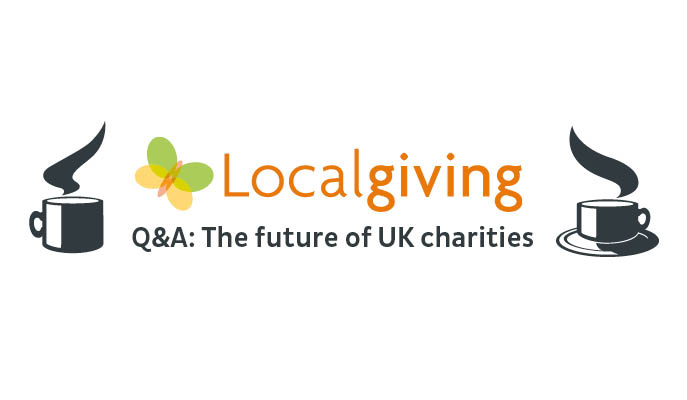
When Techspark asked us to put together a blog post on ‘tech for good’, we immediately got in touch with Marcelle Speller, Founder and Chairman of Localgiving, a not-for-profit online platform that empowers charitable organisations to connect with supporters, fundraise online and take control of their future.
Localgiving’s purpose is “to safeguard the sustainability of the local voluntary sector”. The platform has just hit the £10m mark in terms of funds delivered.
Our Techspark article was about how ‘tech for good’ companies attract talent and compete in the market – on top of this, however, Marcelle gave us such great insights into the future of digital in the charity sector that we had to share them with you.
Q. What challenges do small charities and community groups face right now?
Smaller, local charities face a number of challenges. Most simply don’t have the infrastructure to fundraise directly online – even though the average online donation is around twice the amount as the average offline donation. Also, they are often too small to register formally as charities and thus claim Gift Aid from HMRC.
With Localgiving, small charities can sign up and use our platform to fundraise online and to qualify for Gift Aid. A third of the charities we work with have an annual income of less than £5000, so access to online channels can be a lifeline.
Q. Can you give an example of a small charity you work with?
Swallowfield Community Responders is a great example. It’s a volunteer group the works with the emergency services to provide 24/7 first responder cover in rural Berkshire. They provide a very efficient service to complement the local health trust ambulance service. However, they constantly need small sums to pay for fuel, bandages and other day-to-day purchases. Online fundraising has been pivotal in keeping the group active and delivering a much-needed local service.
We’ve also created donation-matching products that help smaller charities leverage the donations they receive from supporters – in one case, a £5,000 initial match fund translated into £32,000 of new funds for charities on our platform.
Q. How strong is digital capability among small charities?
There are some really cold spots in terms of charities not using the internet. We can equip charities with online tools, such as automated tweets by donors.
Our charity engagement team was able to increase online confidence among 175 charities it worked with, from 41% to 96%. Those charities also exceeded their fundraising targets.
Q. How can charities make better use of tech and digital in the future?
Right now the power equation is against the charities. Take grant applications: a small charity can make up to 70 applications for every grant received.
In theory, there is the technology to build a centralised database where donors can set out their needs, and charities can make one application. This could also be accessed by the public and the charity’s beneficiaries.
We’re working on creating a network of all the information you need to start and run a charity or community group, providing a convenient online hub to share best practices.
Finally, we could take the very granular social measurement data compiled by organisations like Local Futures and map it against local charity outcomes and performance.
Q. What opportunities and challenges does that create for ‘tech people’ working in the charity sector?
It’s exciting because we are drawing on more sources of inspiration and innovation – we are not just drawing on the tech sector and the business sector, our people have to learn different skills and draw upon frontline experiences of social engagement.
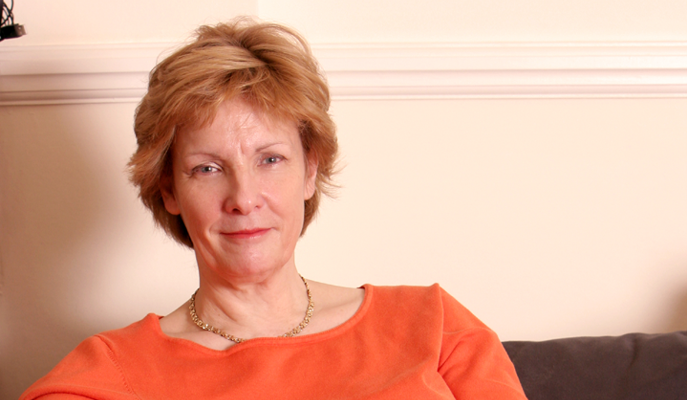
Tech for good

This is an abridged version of an article we’ve just had published in Techspark.
Some of the world’s smartest minds work in the tech sector. From Palo Alto to Pakistan, the power of code is finding creative solutions to problems many of us didn’t even realise we had.
There’s the rub – is the tech revolution just about consumer convenience, or can tech deliver real value to society?
At The House, we get excited and inspired by “tech for good” companies that apply human ingenuity and tech know-how to real problems. This is all part of our wider view that the future belongs to enterprises with purpose: a purpose that creates real value for society as well as for shareholders.
When Techspark asked us to write an article about ‘tech for good’ enterprises, we decided to ask what it’s like to actually work for one, and how it changes the way firms compete and attract talent. We spoke to four startups - Neighbourly, Localgiving, CiteAb and Shuddle – to find out.
Attracting and retaining talent
Neighbourly is an online platform that connects community projects with businesses that want to help. According to founder Nick Davies, the startup’s social purpose has been a major factor in attracting talent, with a lot of people approaching him to join the firm and “feel a purpose in life”.
Nick Allen, founder and CEO of Shuddle, a San Francisco-based firm that allows parents to schedule safe car rides for their children, told us that he is hopeful that his employees will stick around longer because they share a “common view” that Shuddle is a “genuinely useful service” that makes family life less stressful and more manageable.
Allen acknowledged that the Shuddle attracts a “more seasoned crowd” who understand that “doing things right takes a lot of time and effort”.
Unique work challenges
David Kelly of Storm Consultancy, a digital design agency that worked with the University of Bath to create CiteAb, the world’s largest citation-ranked antibody search engine, was more cautious about the power of social purpose to attract and retain talent – it is the work challenge that tends to motivate people in the tech sector, he argues. This is especially true of younger workers who are focused on building their career and haven’t got to the ‘what am I doing with my life stage’. Purpose is important, but it doesn’t necessarily have to be social purpose.
On the other hand, it can be argued that the “tech for good” sector can stretch tech workers and provide them with unique work challenges, even if these won’t be for everyone.
Marcelle Speller OBE is founder and chairman of Localgiving, a not-for-profit online platform that helps charitable organisations connect with supporters, fundraise online and take control of their future.
Marcelle argues, in order to succeed in the “tech for good” space, tech workers must draw on multiple sources of inspiration and innovation – both from tech and business, but also the frontlines of social engagement.
Competition
“Tech for good” status affected our startups in different ways as far as market competition goes. One thing was clear, however – employees absolutely have to understand that each startup must function properly as a business or enterprise in order to deliver its social mission.
Finally, it’s worth noting the importance of having investors, customers and suppliers who fully understand a “tech for good” firm’s aims and pursuit of the “triple bottom line”.
Click here to read the full article with further insights from our four featured startups.
The House helps the University of Bath kick off £66m fundraising campaign

The University of Bath has launched a new £66m fundraising campaign to mark its 50th anniversary. We’ve created the overarching concept and design executions to support it.
The new concept - “help us to look further” - was inspired by the University’s ground-breaking research achievements as well as the city of Bath’s scientific heritage, which includes the discovery of Uranus by William Herschel.
To tell this story, we designed a suite of marketing materials to support the campaign’s launch event, including event invitations and a brochure.
The launch took place at the top of the Gherkin on 4 June in London. This was followed by a dinner at the Roman Baths in Bath on 30 June hosted by the University’s Chancellor, the Duke of Wessex.
“It has been a pleasure working with The House to develop our first fundraising campaign,” says Gavin Maggs, Director of Development and Alumni Relations at the University. “I have been particularly impressed by their rapid understanding of our brand and donor base and am delighted with the end result.”
We started by conducting research into donor motivations. It emerged that many of the University’s leading donors see the university as a breeding ground for the Nobel Prize winners of the future and are excited by the prospect of funding future scientific breakthroughs.
Driven by this insight, we then facilitated a workshop for the University’s marketing, communications and major gifts team to find the stories that give life to the institution’s claim to be a nurturing environment for enterprising minds.
The workshop came up with a host of stories that clearly demonstrate how the great minds at the University of Bath look further. We used this to build on the “look further” concept – for example, showing how some might look at straw bales and see animal bedding, but the University of Bath sees a way to end fuel poverty through its pioneering research in straw bale eco homes.
A purpose-led brand re-launch for fast-growing LDL
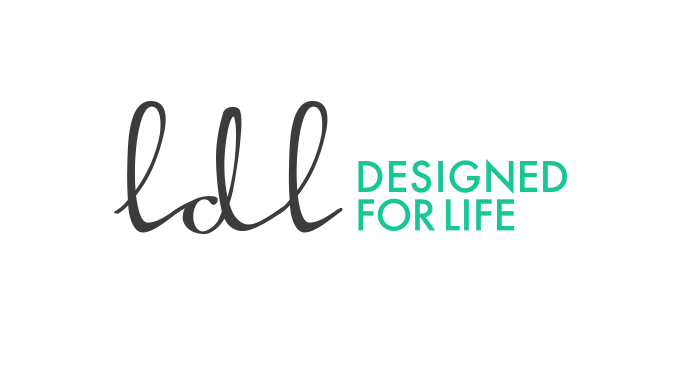
We’ve delivered a major brand re-launch for Bath-based LDL, a leading supplier for kitchen and bedroom manufacturers and suppliers. This includes a newly defined purpose and proposition brought to life by a new brand identity and company charter.
We worked with LDL to conduct an in-depth review of every aspect of its business, including its purpose, business strategy, process and systems, internal culture and brand identity.
Managing Director Matthew Lord said:
“The House helped us to identify our major strengths and develop clear future objectives. Since we started 12 years ago we have achieved consistent year-on-year growth. With a renewed sense of purpose driving our brand, we are confident that we can now take our business to the next level.”
We developed a new brand identity with a new strapline - “Designed for Life”. The logo resembles a signature, in order to convey the commitment to quality and durability that LDL makes to its customers and suppliers – that its products and its relationships are “built to last”.
We also created a set of standards to which employees can ‘sign up’, aware that the whole team at LDL would have to be engaged and committed in the firm’s new direction for the brand re-launch to be successful.
LDL is now investing in marketing brochures and a new website that explain its refreshed aims and strategy. The re-launch coincides with the relocation of LDL’s Bath headquarters to larger premises in the Bath Business Park, doubling the space of its current premises.
The House connects Gradwell Communications to its purpose
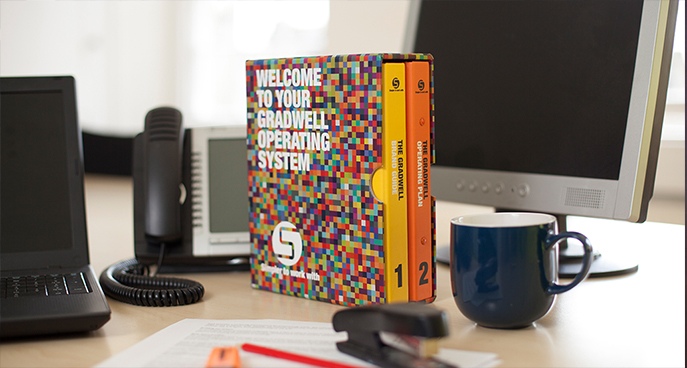
We’ve worked with Bath-based Gradwell Communications develop its business and brand strategy through a series of workshops, internal communications projects and on-going strategic counsel.
Gradwell Communications provides communication technology that works for small businesses, including calls, connectivity and cloud services. In 2014, an internal survey identified that many employees were uncertain about the purpose and direction of the business.
Gradwell asked us to help uncover the purpose behind its brand and build a strategy and culture based around that purpose.
Through workshops, a core ambition emerged: to become UK’s best rated small business communication and connectivity provider. We then turned to Gradwell’s corporate values and culture, mapping the customer journey in order to test how the firm’s stated values were being put into action and where improvements could be made.
“The House challenged us to express our values as behaviours, not just as words,” says Nick Thompson, CEO, Gradwell. “This proved crucial, because it is behaviours and attitudes that bring values to life and underpin strong workplace cultures.”
Finally, we created an employee guide outlining Gradwell’s purpose, story, and core products, and annual strategy.
“Our employees now have a clearer understanding of Gradwell’s goal and how each person contributes to it,” says Nick. “It’s an on-going process, and our most recent employee surveys show concrete progress.”
We’ve found it incredibly rewarding to work closely with Gradwell’s senior leadership to help the firm reach its true potential, and look forward to continuing the partnership.
Building Bath College’s vision for a campus of the future
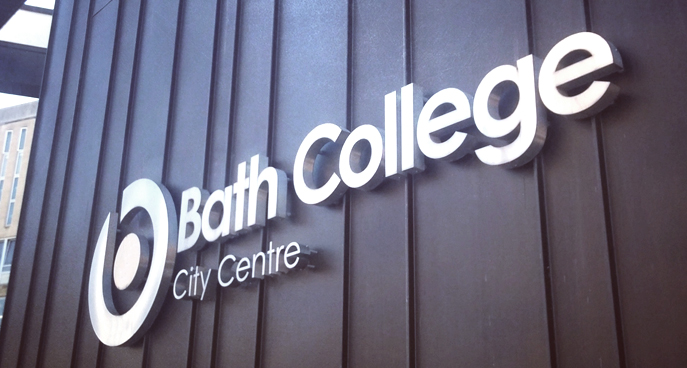
The House has helped Bath College develop a new vision for a ‘campus of the future’.
We delivered a strategy workshop, held at the headquarters of organic dairy brand Yeo Valley, which brought together Bath College with a range of local businesses and organisations, including marketers, social enterprises, entrepreneurs, the B&NES economic regeneration team and the National Association of Colleges. The goal was to uncover a compelling vision and purpose to drive forward Bath College’s business strategy, culture and brand.
We first stimulated discussion by sharing examples of leading corporate campuses, such as Google, Pixar and the Future Business Centre in Cambridge, as well as research into the growing job sectors of the future. We then led an inspired debate about what the group wanted to see Bath College become known for.
From these sessions emerged a clear sense of purpose and vision: a college with enterprise at its heart, dedicated to the discovery and development of talent for those in work, looking for work and in the community.
We saw that Bath College has the potential to be a true ‘crossover campus’ that combines earning and learning by bringing businesses onto the site and sharing skills and resources. The college can equip students to enter the workforce by making college life feel more like a professional workplace than a typical student environment.
Following the sessions, The House provided Bath College with strategic recommendations for developing its business, culture and brand, as well as a clear timeline and priorities.
Matt Atkinson, Principal and Chief Executive of Bath College, said:
“We were absolutely delighted with how The House worked with us to develop our thinking for the future. Through skilled facilitation and creative interpretation of the world of further education and skills we have ended up at a point where we are poised to enter the next phase of our development. We are raring to go!”
The workshop builds on previous work we’ve done for Bath College with respect to the renaming of the former Norton Radstock campus, now known as Bath College Somer Valley.
Sharing insights with the purpose community

Last week we had the privilege of speaking alongside Vodafone, Grant Thornton, Centrica, BAM Nutall and Relume at the Blueprint for Better Business ‘Purpose Share Fair’, hosted at Grant Thornton’s offices in London.
The half-day brought together consultants, leadership coaches and sustainability leaders from blue-chip corporates to share experiences of building purpose-led enterprises through short “TED-talk” style presentations. Our business head Graham Massey spoke about the ups and downs of working with leaders of organisations to craft purpose-led vision and values-led culture.
The event was conducted under ‘Chatham House rules’ so we can’t go into too much detail about what was said. But there were three themes that really struck us.
#1 Implementing purpose-led vision is daunting, but great strides can be made
We firmly believe that the future belongs to businesses with purpose, and we are seeing more and more evidence to support this. However, we know from experience that the individuals who try to inspire purpose-led change within their organisations can end up feeling isolated – even CEOs.
So it was inspiring to hear that even large, well-resourced corporations face bumps on the road to purpose. And it was equally inspiring to hear the success stories that come from perseverance – for example, how a major telecoms company with over 100,000 employees scattered across the world can introduce a global maternity leave guarantee.
Great leaps can happen no matter the size of the company, and consultants have an important role to play in making the journey feel a little less lonely.
#2 Measuring purpose and culture is tricky, but vital
“If you can measure it, you can manage it” – this was the core insight from Phil Clothier of the Barrett Values Centre, which offers a range of tools to measure personal and corporate values and culture.
We’ve always believed that purpose needs to be lived everyday through workplace culture, and that it’s constant hard work to maintain a healthy environment where employees and enterprises can thrive. Part of that hard work is being able to measure and monitor – to make sure that what is “said” is also “done”. We have used the Barrett Values Centre’s tools in the past, and it was fascinating to hear the organisation is developing new approaches to values assessment.
As a possible counterpoint, however, Rowan Gray of Relume argued that purposeful leaders should be careful about fixating too much on particular outcomes. The journey towards purpose is not necessarily smooth and linear – purpose-led leaders will have to learn to “dance, prod and shuffle”.
#3 The ‘Purpose Movement’ is growing and maturing
The event further confirmed that we are past the ‘proof of concept’ phase when it comes to recognising the tangible impact of purpose.
On the one hand, it was genuinely heart-warming to spend time with fellow supporters of the cause. But this was far from a cheerleading rally – in the presentations and over lunch, we asked each other tough questions. When does purpose-led business lapse into “conscience laundering”? Is it down to the individual or the organisation to drive change towards purposeful enterprise? What is the link between corporate purpose and the common good?
All heady questions, and we embrace the fact that the movement towards more socially-minded enterprises has matured enough to ask them.
One thing is for sure: there was simply too much to talk about in just half a day. We look forward to the next Blueprint for Better Business event, and will continue to reflect on how the Blueprint’s “Five Principles of a Purpose-Driven Business” dovetail with the way we help our clients transform their enterprises using the power of purpose.
The importance of living your culture

Deciding on a set of values for your company can be an exciting and inspiring process – especially if the process is inclusive, honest and frank.
But after the ‘quick hit’ boost in morale, it’s important to back up your values with behaviour. A brand ethos has to be more than a poster pinned on a wall: it has to be a living, malleable culture brought to life through the actions of the entire team. To plan an idea is good, to live a culture is great.
Take Skift, a global travel industry intelligence and marketing platform. Skift prides itself on staying ahead of trends when it comes to travel. That’s why CEO Rafat Ali took his whole team from New York to Iceland for Skift’s first ever company outing.
Picking a cool and unusual destination showcased Skift’s “intense-but-fun” culture to the wider world (the trip was extensively covered on Skift’s social media channels), but also gave employees a chance to learn first-hand about the changing business of travel in a country Ali describes as a “crucible of a lot of global travel trends.”
Explaining the trip, Ali said: ‘[employees] aren't motivated by workplace comforts or feel-good HR policies. They're motivated by the opportunity to do their best work, to understand their customers better, to discover new ways to think about markets and opportunities, to connect with their peers more effectively around their core work.’
Eco-friendly outdoor clothing firm Patagonia is another example of a firm that brings its values to life. Patagonia encourages its employees to test its gear and hike, cycle and climb whenever possible. Its offices have designated areas for aerobics and yoga during the working day; in the same way other offices have designated meeting areas.
Patagonia understands that it’s one thing to preach about the outdoors from inside an office and another to experience it first-hand.
It offers employees flexible hours, giving them the time off needed to enjoy a comfortable and productive work/life balance. Staff are also encouraged to volunteer for non-profit environmental organisations. Patagonia’s people can often be spotted out in the wild – probably in one of the company’s ethically made, heavy-duty jackets – whilst taking action to preserve the environment.
You don’t need to fly your whole company to Iceland or climb a mountain to bring culture to life – with a little thought and planning any business can find a way to match values with behaviour. Understanding and living your culture will empower your employees; strengthen your brand and drive real business impact.
Image: Skift
Lego, and the physical properties of corporate culture

We’ve recently revisited a fascinating interview from 2010 with Jørgen Vig Knudstorp, CEO of Lego Group, that demonstrates the value of building business strategy around purpose – and making sure that this is brought to life in your company culture.
Knudstorp was tasked with putting the 76 year-old Danish company back on a firm financial footing after losing its way. He started with basic questions of business strategy. Knudstorp saw that Lego’s many ‘adjacencies’ – myriad projects outside of the main product - were drains on its ‘culture and capabilities’.
To move forward, Lego had to rediscover its core purpose. Speaking to Harvard Business Review, Knudstorp explained:
Once the company had gained the freedom to live and have a strategy, the management team set out to optimize the firm’s value. In order to do that, we had to ask, why does Lego Group exist?
By grappling with this central question of purpose, Knudstorp was able to re-focus the company’s vision around the little plastic bricks that made up the company’s heritage: “to focus on the strength of the brick and get out of things where we’re not world class.”
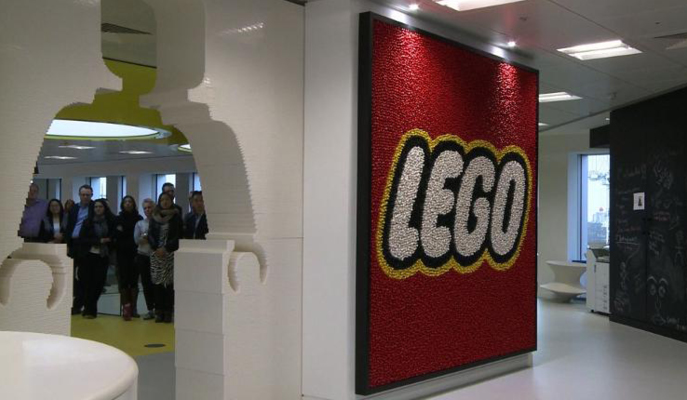
From purpose to culture
With this purpose-led business strategy in place, Knudstorp turned his attention to making it work across an organisation of over 8000 people.
We like to say at The House that values and behaviours are the same thing: ethics and values are all in the doing. Knudstorp takes a similar view, arguing that ideas and concepts alone are not enough to effect real change – in his view, the difference between good and bad leadership is whether ‘stuff’ actually gets done across the organisation.
Rather than prioritising thought and strategy over action, Lego had to ‘act…[its] way into a new way of thinking’ and physically carry out the changes it wanted to see in the business. Brick-by-brick problem solving is in the DNA of the product, and this had to be reflected in the everyday culture of the business.
For example, Knudstorp created a “visual factory” to track the performance of Lego’s production facilities. This was a simple whiteboard onto which factory managers would write performance numbers each Friday morning: green pen for good outcomes and red pen for bad outcomes.
At one point a manager asked Knudstorp when the numbers on the board were going to be inputted into an IT system. “Never!” came the response. For Knudstorp, sharing data in this physical way created a “social mechanism that starts driving change” – the physical act of writing the red number for all to see spurred the organisation to make the necessary changes.
This kinaesthetic approach gave Knudstorp’s “all about the doing” philosophy a tangible presence within Lego. Just as a Lego booklet illustrates the parts and movements needed to reach the end product, the problems and solutions were clearly and visibly outlined in a very physical way.
Different approaches will work for different enterprises, but it’s worth thinking about whether your organisation’s purpose and values are being brought to life by your everyday culture – including the physical stuff that surrounds you.
How manifestos win hearts and minds

At The House we’re big believers in the power of the corporate manifesto. A well crafted, ‘longhand’ manifesto can serves as a call to arms for all those that work with you and buy from you. A manifesto communicates what your brand exists to do and which values underpin your business and drive it forward. It goes deeper than a mission statement or a list of abstract nouns. A really good manifesto speaks to the emotions and expresses the soul of your business and brand.
Our Business Head Graham Massey has written an article for Salt Magazine on the topic of brand manifestos and how they can express your vision and win over hearts and minds. By breaking down the five magic ingredients of a great manifesto and sharing some of our favourite examples, Graham shows how and why you can create a purpose-driven manifesto to act as the backbone of your business.
You can read the full article here.
Celebrating the creative strength of the South West
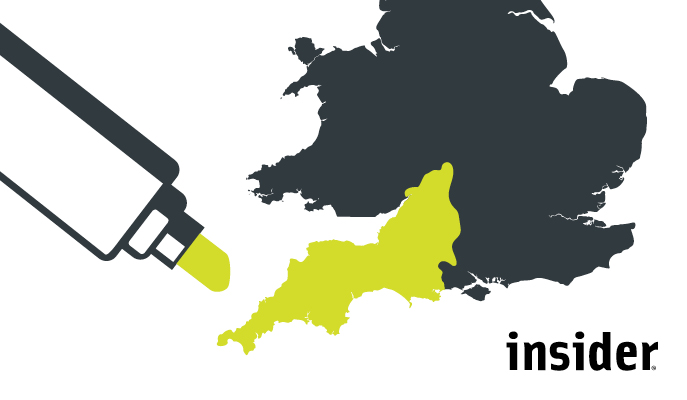
The May edition of South West Business Insider has a great feature article on the South West’s booming creative sector – “one of the most alive sectors”. Our Creative Head Steve Fuller was interviewed, and we are flattered to have had the chance to share our thoughts about the surge of creativity and ingenuity in the region we love.
In the article, Steve argues that the strength of the South West lies in the different communities that make up the creative sector, as well as the multidisciplinary practices that arise as a result of this. Rather than fit a single narrative, the multifaceted businesses and people in the South West are a story of their own: “there’s no one story about the region when speaking creatively”. This is what makes the region inspiring and vibrant: there are always possibilities to bring diverse elements together.
The South West is also home to a range of purpose-led organisations that marry creativity with environmental and social sustainability, such as Ecotricity and Yeo Valley. This is a distinctive feature of the South West and something that enterprises in the region can make more of, especially with Bristol serving as this year’s European Green Capital.
The article, which is available to subscribers, also looks at creative property space, community concerns and includes interviews with other leaders in the creative sector. It’s well worth tracking down a copy.
The House takes Julian House Bike Workshop up a gear
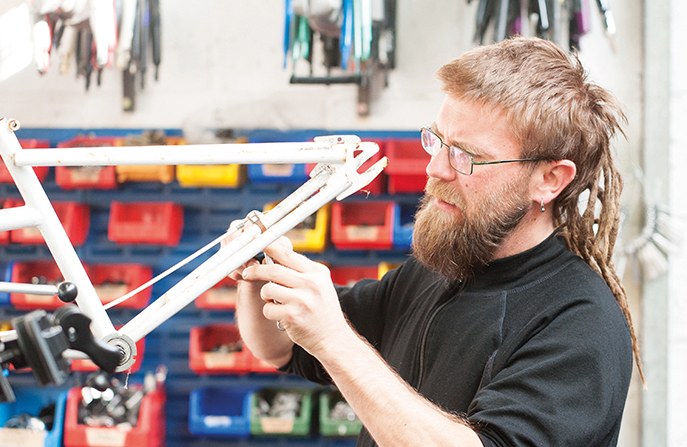
The House has been working with Julian House Bike Workshop, a social enterprise project from local charity Julian House, to take its business strategy and communications up a gear.
So far we’ve held two business strategy sessions as part of a pro bono project, helping the social enterprise to identify different customer groups and hone its competitive offer. We are now developing a set of messaging and narrative tools that will equip the team to communicate clearly and effectively with different audiences.
Julian House Bike Workshop recently changed its name from Bath Bike Workshop after opening new locations in Trowbridge and Bristol. Each workshop offers a range of services for keen and amateur cyclists. The social enterprise has won several contracts with local organisations, including Wiltshire Police, to supply bike maintenance services. It has also customised bikes to meet the needs of differently-abled cyclists and run skills workshops for Julian House service users, training them in how to refurbish donated bicycles that they are then able to keep.
Emma Maggs of The House said: “There are amazing stories around Julian House Bike Workshop’s social impact, but it’s also simply a really good bike workshop that can compete commercially on its expertise. It’s an exciting challenge to bring the two strands together.”
Matthew Roberts, marketing executive at Julian House, said: “Working with The House has given us a great opportunity to explore the value of what we’re doing at Julian House Bike Workshop. They are helping us to communicate in a way that comes right from the heart of our project and it’s exciting to think that pretty soon we’ll be putting all this into practice.”
The House has a long association with Julian House and its social enterprise projects, having previously developed creative work for the charity’s Christmas campaign. We are very excited to now work with Julian House Bike Workshop on this project.
Why we’re attending Inspire 2015
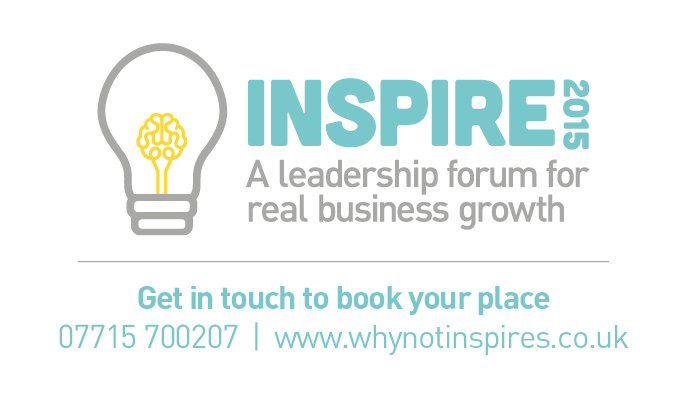
We’re looking forward to attending and supporting Inspire 2015, a leadership forum that will take place in Bath on 23 June.
Inspire 2015 is a chance for business leaders to meet, learn and share experiences around the crucial growth drivers of great leadership and great culture.
Our co-founders Steve Fuller and Graham Massey are running a workshop at the event on how to develop a vision for your enterprise and translate it into meaningful values.
We know that it’s easy to get stuck at the “theory” stage of developing your corporate or organisational values. Translating vision and values into practical, day-to-day action is a constant challenge for any enterprise. In our workshop, we will share some of the tools and insights you need to take an inspiring vision and turn it into an organisational culture where values are brought to life, day in and day out.
Our design team has also worked with Inspire founder and leadership and culture consultant Liza Hughes to develop the event’s visual identity.
We’re also looking forward to hearing from the event’s other speakers, including Colonel Zac Stenning OBE, who will talk about how to show leadership by example; Richard Roberts, an expert in employee engagement and employer branding, Vinny Smith, director of STAND Consulting , and Victor da Cunha and Donna Baddeley, chief executive and executive director of corporate services respectively at social housing association Curo, which is hosting the event. For more details on speakers click here.
If you’re interested in driving real business growth through leadership and culture, we highly recommend visiting the Inspire 2015 website to learn more and book your place.
Helping Prima Dental make an impact at the world’s leading dental show

Our client Prima Dental exhibited at the International Dental Show (IDS) in Cologne this spring, where it promoted two new product ranges comprising over 100 new products. We helped Prima Dental develop the brochures and product names for the new ranges.
The IDS is the world’s largest dental show with over 125,000 visitors. This year, Prima Dental held meetings with over 200 existing and prospective customers in five days through its presence at IDS.
Prima Dental is a precision dental product and marketing company with a global reach. It’s also a brilliant UK manufacturing and export success story. From its state of the art facility in Gloucester, Prima Dental launched into the Indian market in 2014 and picked up a Queen’s Award for Export Achievement for its efforts. It is now pursuing new ventures in the Americas.
At The House we still have fond memories of Prima Dental’s last visit to IDS back in 2013, where it launched its new, purpose-driven brand identity. We worked closely with the whole Prima Dental team to identify and articulate the business's core purpose – “the pursuit of better”. We’re very happy to have continued the relationship and congratulate the Prima Dental team on a successful show in Cologne.
Tackling personal challenges through the power of rugby
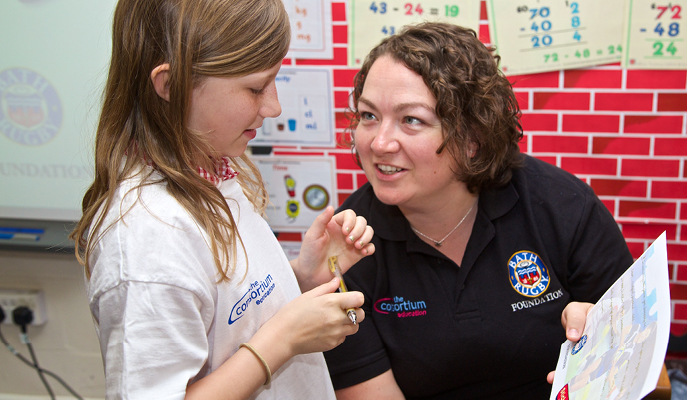
We’re proud to be working with Bath Rugby Foundation to help increase local awareness and understanding of its work.
Bath Rugby Foundation is a charitable foundation with a distinctive mission: to reach people at key times in their lives and intervene to make a positive impact. The Foundation aims to help people tackle difficult challenges such as bereavement, unemployment or social isolation, using the same coaching techniques Bath Rugby relies on to achieve success on the pitch.
It’s an ambitious approach that is already yielding great results in the community. However, not enough Bath Rugby fans or local philanthropists clearly understand the role the Foundation plays and how it goes about its work. Following the appointment of Mandy Gardner as General Manager last September, the Foundation asked The House to help it take a fresh look at how it communicates its vision with the public.
We started by speaking to donors about perceptions of the Foundation’s work among the fan base. Building on that insight, we have held a series of sessions with both members of the Foundation team and service users. These sessions have unearthed brilliant success stories and helped us find better ways to explain Bath Rugby Foundation’s core purpose.
Image; Bath Rugby Foundation
The House scoops three European branding awards
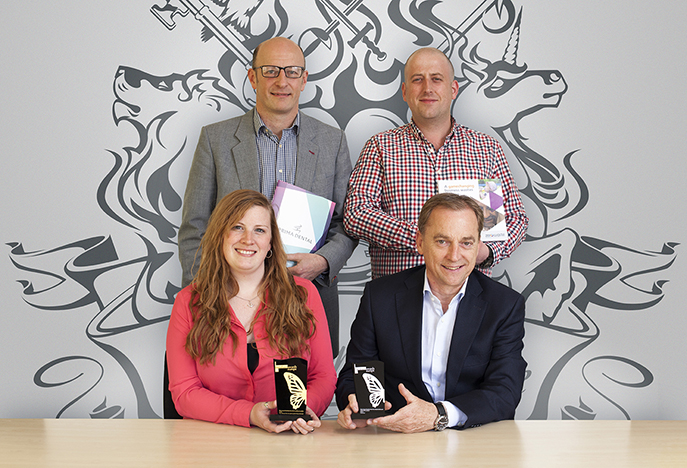
We’re very happy to announce that we’ve won three awards at this year’s Transform Europe: a Gold, a Silver and a Highly Commended. This builds on the Silver and Bronze awards we won last year for our work with Norton Radstock College and Special Olympics GB respectively. This year we were competing alongside top agencies and global brands like YMCA, AirBnB and O2.
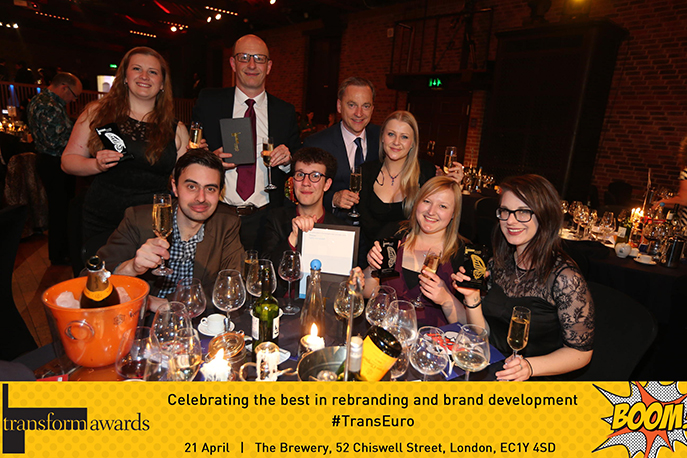
Our rebrand of precision dental product manufacturer Prima Dental won a Gold award for best visual identity in the healthcare sector, with judges praising the “great new logo and colour scheme”.

Our work with global sustainable packaging company Petainer, meanwhile, won a Silver award for best visual identity in the industrials and basic materials sector (“a new brand identity with a brilliant fresh new look”) and was highly commended in the category of best multi-market implementation of a brand development project (“clear visual threads evident throughout”).
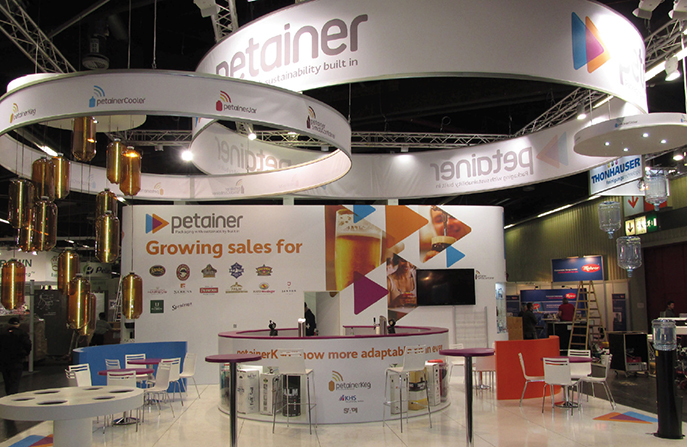
Brittany Golob, editor of Transform magazine, said, “The companies shortlisted are those that truly understand the need for a sustainable, viable and strategic brand.”
It’s fantastic to have our branding work recognized on a European level. To us, this is further proof that a clear sense of purpose expressed through great design execution can help brands to resonate far and wide.
We could never have achieved this without the great support and relationships we enjoy with our clients and friends at Petainer and Prima Dental – thank you again.

The sweeter taste of purpose-led philanthropy
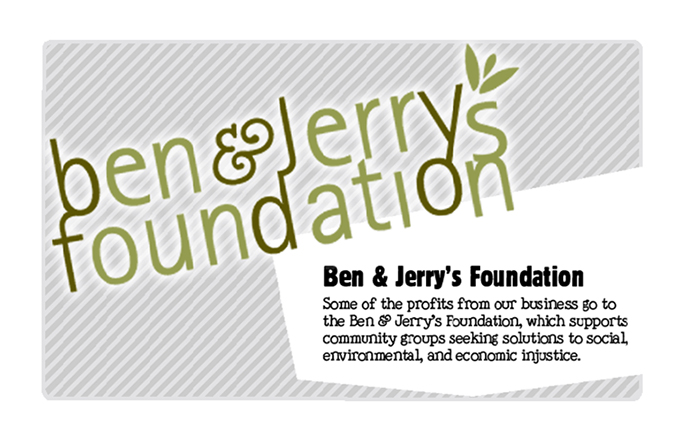
Ben & Jerry’s - now owned by sustainability champions Unilever – has always had a strong ethical undercurrent to the way its does business. You just have to look at its co-operative campaign with the non-profit Children’s Defense Fund in the 1990s, the work of the Ben & Jerry's Foundation or its continuing search for the most eco-friendly packaging for their ice-cream to see this.
There’s a reason why the 1994 book on the company was subtitled How Two Real Guys Built a Business with a Social Conscience and a Sense of Humor, after all. Since the company was established in 1978, Ben & Jerry’s has always put credibility in their culture (if you’ll pardon the pun).
The Ben & Jerry’s Foundation “Join Our Core” programme is a great example of how the firm uses philanthropy and social investment to bring to life its core beliefs – in this case, its commitment to grassroots organising.
Each year, young and future-focused businesses apply to receive support from the Foundation to launch a crowdfunding campaign – grassroots organising in action. A quick look at the latest “Join Our Core” shortlist gives a good snapshot of how entrepreneurial concerns are shifting from short-term returns to sustainable strategies built on belief and purpose. Finalists include companies aiming to battle child hunger (One Feeds Two); a social housing enterprise (Dot Dot Dot); an innovative digital foodbank (FoodCloud); upcycled longboards (Ruff Boards); and a platform aiming to put individuality back into the university application process (Goodwall). The thread that links all of the above is that of purpose and social-mindedness: young businesses built on passion, not pounds.
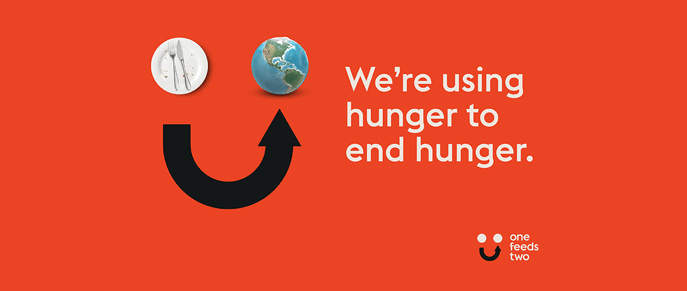
What does this say about Ben and Jerry’s? By collaborating and giving a platform to budding young businesses with a powerful purpose, Ben & Jerry’s its clearly fulfilling its promise of ‘collective action’ and giving credibility to its claims. The “Join Our Core” campaign is much more than a surface fulfilment of ‘corporate social responsibility’ because it comes from a deeper, more committed place in Ben & Jerry’s DNA. No surprise that the Ben & Jerry’s Foundation was named Corporate Grantmaker of 2014 by the National Committee for Responsive Philanthropy.
We believe that good business can and should influence more good business. Through the “Join Our Core” programme, the Ben and Jerry’s Foundation is helping to cultivate a genuinely purpose-led business culture in a way that is totally in sync with its own core values.
The Ben and Jerry’s Foundation will soon announce its 2015 shortlist, and we can’t wait to see which great businesses it will spotlight.
Communicating your purpose
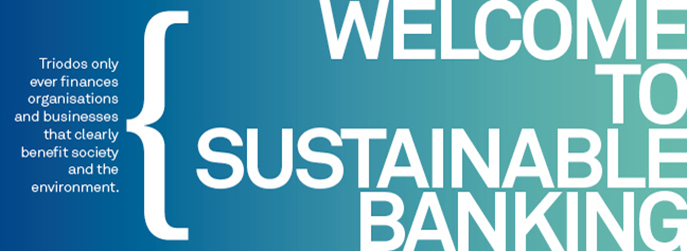
This sense of purpose – for Triodos, an ethical and credible alternative to mainstream banks, for Ecotricity, turning bills into mills – is what tomorrow’s companies will need in order to retain customers and motivate employees.
What is purpose? Purpose is the reason you are in business other than to make money. It’s not about what you make, but what you make happen. Purpose isn’t philanthropy or CSR, it’s about how your company’s core business benefits people and planet.
The power of purpose
Communicating your purpose can transform the fortunes of your brand.
Purpose inspires confidence and fuels investment. Purpose can be a catalyst for innovation – witness the success of Innocent and Ecotricity. And purpose underpins strong cultures: 94% of Triodos staff say they are proud to work there.
In short, the future belongs to companies with purpose.
Know your purpose
Before you can start to communicate your purpose, you need to know what it is.
When we first started working with thebestof, the company saw itself as a web directory selling advertising space. We helped the company and its franchisee network recognise and communicate its role as a champion of locally recommended businesses. Re-energised and focused on its purpose, the firm has blossomed from an underperforming web directory into a market leader.
Identifying purpose is often a matter of re-discovering the DNA of the business. Gardening brand Sankey, for instance, had come to see itself as a ‘plastics manufacturer’ rather than a gardening company. We helped the team reignite the latent passion for gardening inside the business, which led them to remodel their approach to everything from product development through to marketing.
Work from the inside out
Don't just slap your idea of purpose up on the wall: create it and live it alongside your team.
Great purpose-driven brands are built from the inside out. This means creating a strong culture within your organisation that brings your purpose to life. Purpose isn’t something you do to people. Purpose is there to inspire.
So top-down communication won’t cut it. Develop ambassadors at every level to carry your story to the shop floor, social media and even the pub. When purpose is genuine and engaging, enthusiasm becomes contagious and sharing comes naturally.
Engage for success
Companies such as Unilever are finding that a clear sense of purpose provides a sturdy platform for true engagement with customers and stakeholders – engagement that stretches far beyond the confines of a traditional ad campaign. Unilever’s Lifebuoy soap brand, for example, is creating a genuine movement towards better hygiene, featuring offshoot projects such as the Help a Child Reach 5 programme.
True engagement creates a lasting legacy. Our client, the gardening tools arm of Fiskars, has provided funds and tools to help communities turn abandoned land into green recreation spaces and allotments. Even after this programme finished, each group was left with the tools and skills to continue the good work and recruit others.
Identifying and stating your purpose is a brave move, not without risk. But it also makes it possible to transform an organisation through a clear direction, focused leadership and a vibrant, positive culture. Ultimately, it paves the way for sustainable success.
To find out more about how communicating your purpose can transform your brand’s fortunes, call Steven Fuller or Graham Massey on 01225 780000 or email steve@thehouse.co.uk.
This is an abridged version of our article published in Ethical Corporation on Feb 20.
Born Risky

Last night, a few of us were lucky enough to get the opportunity to hear Alice Tonge – one of the Creative Directors at 4Creative talk. This speaking event was arranged by The West of England Design Forum (WEDF) and took place at the Arnolfini in Bristol.
4Creative are Channels 4’s in-house creative agency and are made up of 60 people working from Channel 4’s headquarters in London. They are far from your stereotypical ‘in-house’ design team though. Everyone from the Directors to the legal team all have the opportunity to come up with ideas in this massively creative environment. They don’t work in silos – everyone gets involved, which they believe breeds much better and more exciting results.
The title of the talk was Born Risky. This ethos adopted by 4creative doesn’t mean risky as in “naked abseiling” as Alice put it, but rather creatively risky. This could be seeking out undiscovered talent, making films about taboo subjects or championing alternative voices. Born Risky means going where other channels can’t to create something new, alternative and different. Because Channel 4 is independent and not funded by public money, the team can afford to make risks and push the boundaries creatively. In-short, they don’t have to play it safe. Whether you are allowing a woman with Tourette’s to introduce your shows or highlighting Russia’s anti-gay laws through mocking comedy, these are all huge creative risks.
Alice also talked about how they admit that they ‘can’t do everything themselves’. They invest heavily is using third-party brand/design/motion agencies who will come and join in on the idea generation and co-create projects with them. This use of outside agencies really blurs the lines between what a traditional in-house design team is, and their belief that ‘nobody is as clever as everybody’ pays dividends for them. Having outside agencies involved also keeps the in-house team fresh and on their toes.
Why were The House there? Well, a few reasons; the first being that we are huge admirers of Channel 4’s visual identity. When they re-branded 10 years ago, they really did separate themselves visually from their competitors and started to explore what was possible. They positioned themselves to a much younger audience, and as a brand case study, it’s great and hugely inspiring.
Secondly, there are also many times when we and our clients need to be risky. Go against the grain, think outside the box and do something unexpected. This could be a creative idea to turn the clients’ industry on its head, or when a client is launching a new business strategy that is the opposite of anything the business has ever done before. This is all risky stuff so to hear other people talk about this subject is really inspiring.
Finally, we are instantly attracted to 4Creative because they have a strong purpose. They have an incredibly strong vision of who they are, where they are heading, and are proudly not controlled by ‘suits upstairs’. To top it all off, they invest all their profits back into the programmes. A well run company, that does great work and has a strong purpose – what’s not to like?!
We thought we would share some of the work that Alice presented, where she thought they had taken a creative risk. A highlight and, perfect example of Born Risky, has to be their Alternative Voices project. You know the voice that comes on and introduces each programme? Normally it’s a well-spoken man or woman, but what about if you take a creative risk with this? 4Creative asked a group of people with disabilities including a woman with Tourette’s syndrome, a woman with cerebral palsy, and a man with an acute stammer to introduce these programmes… with amazing results. Jess Thom, the lady with Tourette’s now even works at Channel 4 as a full-time continuity announcer! Check out some of 4Creatives work below and find out more by visiting http://www.4creative.co.uk
Alternative Voices
Channel 4 Paralympics - Meet the Superhumans
Iraq: Bloody Circus
Gay Mountain | Channel 4
Ladled with love, The House supports social enterprise as its christmas gift

Wrap your hands around something lovely this Christmas. We’ve teamed up with The Bath Soup Company to share their favourite recipes for a selection of delicious soups.
The Bath Soup Company is a social enterprise supported by Julian House (Bath’s Homeless Charity) - generating profits by creating delicious soups for a café and kitchen here in Bath. Not only that, they look to provide training to future soup chefs to help them work their way out of homelessness.
We will be offering business and brand consultancy to The Bath Soup Company in 2015 to help them grow, become more profitable and provide even more job opportunities.
You can help too - simply visit St. Michael’s Church café or the Poor Mans Lunch stop at Kingsmead Square. Alternatively, if you would like to stock their soup or know someone who might, you can contact Simon Brand at Julian House on 01225 354653.
To help you get into the festive spirit we’ve created a Christmas Card rammed full of seasonal soup recipes – follow this link to download and print them!
Wishing you a heart warming Christmas
All at The House x
The House blog

The canvas for 'Thought' is as diverse as the menu; digital strategies from charities, new brand campaigns from tour operators and outstanding sustainable packaging by sports brands.
It's a great way to ensure we spot trends and stay fresh - always looking how these pieces can work or be adapted to make our clients more successful.
The favourites from the last couple of weeks are:
Age UK “Love later life”
http://www.ageuk.org.uk
McVities “Sweeet”
http://www.youtube.com/watch?v=REcGjl-_lzs
Thai Insurance “Believe in Good"
http://www.youtube.com/watch?v=632CHpeHYZE
And our favourite lunch?
That would have to be some of these from our friends at Mission Burrito Bath http://missionburrito.co.uk/
The House wins silver and bronze in European Transform Awards

The Transform Awards recognise best practice in corporate, product and global rebrands, with categories that focus on strategy, execution, content and evaluation. More than that, it is a platform for organisations to tell their rebranding stories and to discuss reputational change. It is an opportunity for rebranded organisations, agencies and advising councils to benchmark their work and processes.
The House’s work for Special Olympics GB in the Best use of a Visual Property category beat off stiff competition from Lloyd’s Bank and University of Birmingham whilst the Norton Radstock College rebrand was recognised above Tata Power DDL for Best External Stakeholder Relations during a rebrand.
Speaking about the success, Steve Fuller, Creative Head at The House said “To receive two nominations in the most prestigious awards in our sector was a great achievement but to come away with two awards, including a silver is testament to the quality of work this agency creates. We are delighted with the result but even more importantly by the success both rebrands have delivered for Special Olympics GB and Norton Radstock College.”
New campus signage goes live to complete brand new direction for Norton Radstock College

Norton Radstock College has completed the launch of it new brand with the final addition of new campus signage this week. The brand agency The House, worked with Norton Radstock College to create this new brand direction to usher in a new lease of life, tied into the opening of its modern building.
Norton Radstock College has been training local people since 1947 when it provided the skills and qualifications to ex-miners to help them find jobs, grow business and develop the local economy. Today, it is a key education provider in the area and offers a wide array of ‘hands on’ courses with a strong focus on students finding a job after college.
Playing on the college’s heritage and the hands-on vocational nature of the courses, The House developed ‘The College That Works’ concept highlighting Norton Radstock College’s position as ‘job creators’. Visually inspired by typography from the town’s mining roots a logo with the look and feel of a company was paired with a modern colour palette and imagery style to give the identity a feel of modern industry. Instead of a standard prospectus The House designed a Careers Guide full of advice and student profiles and also designed web visuals, complete campus signage and brand guidelines.
Steve Fuller, Creative Head, The House said:
”Norton Radstock College clearly demonstrates that a powerful effective brand delivers confidence in an organisation, it delivers belief and purpose in what they do. Building on their role as job creators the Norton Radstock College has now increased its profile to involve the whole of Midsomer Norton, Radstock and surrounding area.”
Particularly impressed with the way Norton Radstock College team has developed the concept to include the recently opened Job Shop, Lorna Crouch, Marketing Manager, Norton Radstock College said:
“The House has helped transform how the outside world sees Norton Radstock College and generated a buzz among staff. It’s an exciting time for us from which we can only move forward. We love our new brand and everything that goes with it.”
Early feedback on the new brand and identity has been extremely positive. It has given the whole college a new lease of life and a new direction and look and feel for all the marketing materials. The college has invested in advertising using ‘The College That Works’ campaign and has developed an ‘alumni’ programme tapping into Radstock’s job creators.
The Glove Factory welcomes Steve Fuller from The House
The House shortlisted for two European Transform Awards

Steve Fuller, Creative Head, The House said:
“To be shortlisted once is an honour but twice is a clear indication that The House is delivering on its promise to transform the fortunes of organisations. To receive this level of recognition at a national level is a tribute to the talent in our team and the ambition of our clients.
“Special Olympics set the bar very high to compete with the Olympics and Paralympics and between us we delivered a world class identity that led to an unprecedented degree of media coverage, sponsorship interest and, most importantly, joyful athletes.
“Norton Radstock College was clear it wanted a brand to revitalise the college, its students and partners. We succeeded in doing that and most inspiring is the way the college team has developed events, networks, advertising and outreach projects that really deliver value for their investment in The House.”
Events & publishing manager at Cravenhill Publishing, organisers of Transform Awards, Liz Foggitt, said:
"This year, the Transform Awards judging process was tougher than ever. The panel was inundated with entries showing real skill, innovation and creativity. After much deliberation over three days, the shortlist was finalised. Seeing a diverse range of companies putting forward such strong and interesting campaigns made us more confident in the importance of the Transform Awards. Each of these companies deserve the esteem that being shortlisted for the Transform Awards brings."
Find out more about this work here:
http://www.thehouse.co.uk/our-work/client/special-olympics-bath-2013
http://www.thehouse.co.uk/our-work/client/norton-radstock-college
About The Transform Awards
This year, the Transform Awards are expanding. The programme, which has always enjoyed success in Europe, saw a record-breaking year in terms of the diversity of its shortlist. Not only were more entries received but those acknowledged by the judges make up the most widely varied companies and entries in the history of the awards. The programme has also launched an international arm, Transform MENA, which will take place in Dubai in June.
This year’s shortlist marks the strength of the creative industries and the achievements British companies’ rebranding programmes. Winners will be announced at the annual Transform Awards ceremony on 1 April 2014.
The House builds Christmas Campaign for Julian House

These additional services include Bath Bike Workshop, a social enterprise giving clients the opportunity to service and repair bikes. With sponsorship from a local falconry school 3 clients per month receive coaching and work with a bird, a profoundly moving experience in contrast to life on the streets. And Cookery Sessions enable clients to develop these skills and then enjoy eating together.
Steve Fuller, Creative Head, The House said: “We love the commitment of Julian House and are honoured to support their work in Bath since 2008. This year’s Christmas Campaign is creative, gently challenging stereotypes whilst raising awareness of the imaginative, valuable work they do throughout the year. We’d love to see The House over deliver on this year’s Christmas Campaign due to the generosity of the people in the City of Bath.”
Cecil Weir, PR & Fundraising Manager, Julian House said: “Our Christmas Campaign is the most important fundraising activity we do and we are extremely grateful to The House for their support. We began speaking with the agency over 5 years ago and our dialogue led to their support to develop our brand and communications and key fundraising campaigns. The House stretched us to be better, always deliver what they promise and are an excellent example of how business can support charity with real, significant value.”
If you would like to make 2014 a year of possibility for Julian House please donate what you can here.
Wishing you a Christmas so joyful that even Scrooge would crack a smile

Red Bull - a winning formula

As a massive fan of Formula One I tuned into the BBC 5 Live Chequered Flag podcast recently where Sir Clive Woodward was hosting an episode about the Red Bull Racing Formula One team. He was going for a factory tour and interviewing key staff to find out exactly what makes them tick and ultimately so successful. When I saw this my instant reaction was that ‘why is a rugby coach interviewing a Formula One team?’. After listening to the podcast it was apparent that the common thread between running a Formula One team and a rugby team and business for that matter, is people. Without the right people in the right positions, you won’t shave that extra 1,000th off a lap time or score that vital try. When I say the right people I don't just mean the drivers or the players, I mean everyone; from the guy who cleans the factory floor to the head of design - each of them are an important link in the chain and when all working perfectly together, the results on the track, or the rugby pitch are clear to see.
As brand partnerships go, Formula One and energy drinks go pretty well together. Both are fast moving, full of energy and push the boundaries. So when Red Bull owner and founder Dietrich Mateschitz brought the old Jaguar Formula One team back in 2005, it was the start of the one of the most surprising success stories in the sports history. The Red Bull Formula One team have just won their 4th consecutive world championship, a record bettered only by the great Ferrari. The team is just 8 years old and what they have achieved in such a short time is astonishing. To put it in perspective, they (essentially a fizzy drinks company) are beating Ferrari, a team with years and years of motorsport heritage, pretty comprehensively every race. Poor Enzo Ferrari must be turning in his grave.
The first thing that strikes Sir Clive when he arrives at the Red Bull Racing factory in Milton Keynes is how ordinary it looks from the outside. It is positioned on a dull industrial estate and from the outside looks pretty uninspiring. Why would these world class engineers and mechanics choose to work in rainy Milton Keynes as opposed to the space age McLaren Technology Centre or the Ferrari Maranello base in Italy? This is the first question that Sir Clive puts to Christian Horner, the team principal of The Red Bull Formula One team. Christian talks about how the brand values of parent brand, Red Bull, are at the heart of the Formula One team. Staff members can come into work wearing jeans, the atmosphere is laid back and if you speak to anyone, they assume nothing. They have won so many trophies over the last 8 years that the trophy cabinet at the factory is overflowing, with trophies spilling onto the floor. Red Bull however will not buy another trophy cabinet until they can fill it. They assume nothing and take nothing for granted.
Christian repeatedly talks about how people are at the heart of their success - the right people in the right roles with shared values. Ultimately they love working for Red Bull and from the factory floor to the boardroom table, everyone wants the team to be successful - they share a common goal. Just recently, after Sebastian Vettel clinched their 4th title, Red Bull paid EVERY single member of staff £10,000 as a bonus, including the catering staff and cleaners as they are considered to be as important a link in the chain as the head designers. Amazing stuff that really sums up their team ethic and how important Red Bull consider their people to be.
Sir Clive is 'blown away' by the attention to detail that goes into the running of the company. Christian epitomises this obsessiveness and how, as a failed driver himself, he remains incredibly driven to keep succeeding. One of the mechanics tells how, in an average year, 3,000 of the cars 5,000 components will be removed from the car and improved in some way, whether that be making a part from a different material or a slight redesign of a panel. These small changes make almost minuscule improvements to a lap time but when you add them all up over the space of a season you can start to see the kind of advantage this kind of philosophy delivers.
Christian also tells the story about how he managed to attract Adrian Newey the most successful Formula One designer there has ever been to his start-up team back in 2005. Newey has designed championship winning cars for Alain Prost, Ayrton Senna, Damon Hill, Juan Pablo Montoya, Jaques Villeneuve, Mika Häkkinen and more recently Sebastion Vettel. He is quite clearly a genius when it comes to car design. Back in 2005 Newey was working for McLaren, a giant in the sport. He was working for the best team on the grid and undoubtedly earning big money but something was missing. Christian tells the story about how on the day Red Bull rocked up to their first Grand Prix, they erected the eye sore they call their ‘Energy Station’ - essentially a corporate entertainment building where you could drink Red Bull, hang out and experience the brand. Nothing could be further from the corporate straight laced world inhabited by McLaren. Intrigued by this monstrosity pumping out loud music, Newey got chatting to him and over the next year they became friends. Newey bought into what he was trying to do the the team and eventually joined Red Bull leaving a team in pole position for one at the back of the grid? Why? A new challenge is part of the answer but Newey ultimately believed in what Red Bull were trying to do. He brought into their vision and was drawn to the Red Bull culture and way of doing things.
Throughout the podcast Sir Clive talks about the similarities between managing a rugby team and a Formula One team - it's about the people. At The House we believe in the power that comes from having the right people at the heart of your business, with a big vision, a compelling purpose and shared values that everyone buys into to build a culture where people WANT to work for you. As Christian Horner says 'Its not just a job, its a way of life'.
A City of Enterprise

Dani Reiss: The importance of authenticity

I was reading the 'What I've learnt' feature in the surprisingly enjoyable British Airways Business Life magazine, unearthed during my habitual pre-flight exploration of the seat pocket. An interview with Dani Reiss, CEO of Canadian cold weather clothes manufacturer Canada Goose, in which he answers the question posed by the feature, is warm and insightful.
Dani talks about the heritage and purpose of a business his grandfather, Sam Tick, a polish emigre, set up in 1957; his early impressions and how (almost inevitably) his life plan never included ever working for, let alone running, the family business. In a nicely weighted piece he tells of the origins of the company and the product stories that provide the brand with meaning and its values. In short, how he came to understand the importance of authenticity in business.
In case you're still wondering, the cause of my ill timed outburst can be found about half way through. In Dani's words, " ...most brands these days are not real brands, they're some product mass-produced in some factory somewhere else that has a fancy story woven in front of it by marketing departments. People buy the product and it just feeds the consumer engine.. Which is fine - I'm not a revolutionary! But I'm really drawn to authenticity and real brands.' 'When I went to Europe, I learnt how valuable the term 'Made in Canada' is for us..."
At risk of repeating myself, 'Absolutely! I couldn't agree more'.
G
If you'd like to read the full article, please click the following link
Norton Radstock College Job Shop

One Big Smile - Special Olympics - Bath 2013

1bigsmile is the theme of the games - representing the crescent turned into a smile for the feelgood games. You can join in too, we've created a film to celebrate all those that have been involved in making the games happen (sponsors, spectators, donators, competitors, organisers, dancers and of course the media) - so watch this film, send us a smile, spread the news via social media #1bigsmile and see if you make the final edit of the film.
http://m.youtube.com/watch?v=sZOY-hOLqSI
If you want to support Special Olympics Great Britain in anyway find out more at http://www.bath2103.org.uk
Coombe Castle get a new look

Coombe Castle has a 30 year track record of exporting our nation’s cheese, butter and cream to the four corners of the globe from the South West. We were appointed to help the senior management team prepare the business for the next 30 years. Work strated back in 2011 when we repositioned and redesigned the export side of their business.
More recently we are delighted to announce that we have completely redesigned the consumer facing side to the Coombe Castle brand. We have designed everything from packaging to exhibition stands to their new website.
A full case study will follow soon.
Does your business rock?

Earlier this month, we ran a Masterclass in conjunction with Business Insider magazine discussing the value of fans to business with 9 business owners and senior marketers.
Here’s a link to the article
http://www.insidermedia.com/webmail/docs/2013/BrandingRT_DPS.pdf
So how can we help you create fans for your business?
We’ll help you to write your “Happily ever after” – a clear vision for your business that you share with your team
We’ll work with you to define a purpose beyond profit – if profit is the outcome of a successful business, what do you want to do good at?
We’ll help you to make a promise and, as importantly, keep it – help everyone in your business to agree, share and stick with a commitment to your customer
We’ll ask you to do the ‘logo test’ – take your website or a piece of advertising and cover up the logo, why would fans get excited about you over your competitors?
We’ll talk to your fans and your critics so that you can know your customer – the more you know about your customer, the more likely it is that you will say or do something that will make them a fan.
View from the cockpit

What is the vision for The House? Where would you love to see your business go?
We have a very clear vision for The House. We are fanatical about business and want to use our brand skills to help individual companies create customers and employees who are big fans of everything they do. As we all know, fans buy more, talk more, stay longer, work harder, go extra miles and recruit others; as for The House, well we’d love to create fans who love what we do too.
What might prevent you from achieving this?
Our challenge is always to treat our business as if it was a client of The House; allocate time to plan, share thinking with the team, shape outcomes and prioritise action. Then stick to it! Time is our most precious resource. We need to protect it fiercely – stay ‘frosty’. It’s very easy to get caught up in our client work and put ourselves and our housemates last; delaying important internal changes, creative ideas and improvements that will grow us, our capability and our business. It’s like being in any relationship; you need to nourish yourself at the same time.
How do you plan to resolve these issues?
We actually took a dose of our own medicine. Steve and I invested in a couple of days out of the business recently to write a new 3 year roadmap and spend some creative time playing and writing together. I’d recommend it! We realised just how much we still want the same things for the business – even after 17 years – and how much we still enjoy working together. Since then we’ve made two new appointments, run our first Brand Masterclass and instilled an ‘in-house’ communication & briefing ‘heartbeat’, three times a week that supports our values and brand promise. Our aim is ensure we don’t sacrifice the needs of our team when we’re meeting those of our clients. After all, we’re a learning business and our clients need to be confident that we’re in shape, evolving and growing too.
Thanks to business co-pilot for publishing this article
SACO appoint The House

SACO are one of the leading serviced apartment providers in the world and the appointment of The House marks the next stage in their ambitious growth plans. Brand Director, Jayne Mansfield and Creative Director, Steve Fuller will lead the programme, working closely with SACO’s Marketing Director Jo Redman
Jo described why The House was selected, “out of all the agencies we felt they had the best experience and demonstrated a good understanding of our requirements. The initial recommendation from Caroline Harris at Spirit PR also counted. Throughout the process The House has come across very well as a team and been receptive to feedback. We believe that The House is a good fit for our business going forward.”
The research part of the programme has commenced with conclusions and a board presentation likely mid to late April.
Of the appointment, Steve Fuller said, “We’re delighted to be working with SACO. A number of the team at The House have a travel background so it’s exciting to be able to put our brand skills to a sector that we really believe in.”
http://www.sacoapartments.com/
The House prepares Prima Dental to take on the world

Prima Dental used IDS, which attracts dental professionals and distributors from around the world, to showcase an interactive website, a sales tracking tool, an e-learning training programme and an App designed to support distributor salesforces in the 100 countries their products are available.
“From the outset The House has shared our ambition and often fuelled it too.” Said Prima Dental CEO, Richard Muller. “They really got to the heart of our business and teased out what makes Prima Dental special and how this can be used to deliver commercial advantage.”
The extensive rebranding programme sees a revised corporate icon, a new bespoke typeface and a colour palette that stand outs from industry competitors. The creative work is supported by new sales tools (brochure, App and online sales tracking) and a new global website created to appeal to distributors, dentists and prospective new employees.
The House are also scripted and storyboarded a new corporate film, produced by Bath based Suited and Booted the film outlines Prima Dental’s approach to building marketing partners across the globe and how the company’s world-class facility produces micron accurate, carbide, diamond and steel dental burs.
Speaking of the partnership with Prima Dental, Graham Massey, Managing Director of The House said “What was on show in Cologne is the culmination of many months hard work, talent and dedication from the team at Prima Dental and The House. We have helped to create a stunning brand, a market leading online marketing tool and a set of communication tools that set Prima Dental apart from its competitors. Most importantly of all, Prima Dental has already started to generate business as a result of their investment in The House.”
No half measures for The House in Cheltenham race brand

GO2 appointed The House to oversee a completely new look and feel for this new South West road-race. This is the fifth project that the Bath based brand specialist has undertaken for GO2 following on from the companies own brand, Plymouth 10k, Gloucester 10k and the Plymouth Half.
The event name and identity play on the ‘apostrophe’ device to create a sense of ownership by the city of Cheltenham, “For events like a half marathon to succeed it is vital that the local community really get involved. Creating an identity that heroes the runner’s and their stories is vital in creating a race that becomes a regular fixture in Cheltenham’s busy calendar. We’re delighted with the work The House has created, adding and using the apostrophe really captures the idea that the race is for everyone in Cheltenham” Said Amy Budd, Marketing Manager from GO2.
Steve Fuller, Creative Director at The House adds “This is really rewarding work for the team at The House, using our brand skills to encourage communities to run for their health or to raise money for good causes.”
Brand – It’s The Experience That Matters!

Once a month I meet a friend of mine for an early breakfast. We visit the same restaurant – a highly visible well regarded high street brand which, by definition, you’d expect to offer a similar ‘brand experience’ every visit. For about 6 months I have made the observation that our ‘experience’ is never the same twice – either it’s the quality of the breakfast or the quantity; often indifferent presentation and worse still, the inconsistency in the quality (and temperature) of the coffee served.
So why did we continue to go? In truth, habit and crucially because it opened earlier than its competition, which allowed us to meet, breakfast and be at our desks by 9 am.
Earlier this week came the coup de gras. Arriving before my friend (and seemingly everyone else), I nodded a silent hello at a member of the kitchen team and sat myself at a table. For a full 17 minutes – including the subsequent arrival of my friend – we were untroubled by a member of staff until finally, after my vigorous gesticulation, a waiter who we recognised from our previous visits ambled over. Greeting him warmly, I enquired how he was. “Sleepy”, came the reply and he wandered off, presumably to fetch a menu. We didn’t wait to find out and left, unlikely to ever return but highly likely to tell others our story. We have found a new home – even though it opens 30 minutes later – the staff are welcoming, the breakfast excellent and the coffee exactly as it should be.
Anyone surprised? Me actually, but only with myself – in that it has taken me 6 visits over 6 months to vote with my feet – for there is power in our money, and how we choose to spend it can bring about real change. What we permit we promote and I might argue that the power has never been more with the people than it is today, especially with the increased competition for our ‘spending power’ in a struggling economy.
The rule of the (high street) jungle says that only the strong survive and in this context I suggest that means the provision of relevant products and services by well led, motivated employees offering a consistent and appropriate customer service experience. I often find the online experience with brands compares more favourably than a visit to a store! What does that say about the leadership on the ground? The demise of numerous high street brands in 2012 (JJB, Comet and Clintons included) has brought the importance of the customers brand experience sharply into focus.
Anyone surprised? Not me, for the leaders of consistently successful companies have a crystal clear vision for the business, a clear purpose (other than making money) and a ruthless focus on meeting the ever changing needs of their customer at the heart of a ‘values driven’ service culture. It’s amazing what businesses achieve once we have helped them to define a compelling vision, create authentic values and a bold customer promise; coupled with a responsive game plan.
It’s my belief that the purpose of business is to serve others and my view that many simply serve themselves. As for the leadership team at the restaurant where we used to have our breakfast, they are serving neither.
Special Olympics select brand specialist The House to create visual identity and volunteer website

Held every four years, the ninth National Summer Games will be held in the city of Bath from 28 August to 01 September 2013
The House has created an event logo that captures the feel good nature of the games and marries it with one of Bath’s most iconic attractions, the Royal Crescent in a fresh and colourful fashion.
The website was launched at a civic reception in the Guildhall attended by Olympian, Jason Gardener. The website was created in conjunction with digital specialists, Storm and in its first 24 hours, the site already attracted 10% of the total number of volunteers required.
Karen Wallin, CEO of Special Olympics GB commented: “We are thrilled with the new look website and identity for the National Summer Games in Bath which has been created by local agency, The House. We are delighted with the vibrancy and colour which has been injected into the look and feel of the logo and online.”
About The National Summer Games
The National Summer Games are organised by Special Olympics Great Britain, a charity that provides year-round sports training and competition for children and adults with intellectual disabilities (also known as learning disabilities) in England, Scotland and Wales.
The charity currently serves 8,000 athletes. Over 1.2 million people in Great Britain have an intellectual disability – the largest impairment group that exists.
Shiny new Magpie & Bear identity and launch marketing plan

Traditionally an online store, as of February 2013 Magpie & Bear will open their first store here in the South West, in Milsom Place, Bath. With exclusive and hard to find designer jewellery and accessories from London and New York, the Magpie & Bear store is filled with rare and delightful treasures personally gathered by the founder, Karen Lyndon-Lewis from independent makers.
The House was responsible for naming, the brand story, the new visual identity, store window and display concepts plus the opening night launch concept, “it must be love”.
Full case study to follow soon.
13 Thoughts for 2013

1. No more, more of the same. It’s time to smash some of the sacred cows that hold your business back. If you’re feeling stuck or got a sense of déjà vu then déjà don’t – invite a cross business group into a room for 20 minutes and find a new, quicker, more efficient, more customer friendly way of doing things. Fresh thinking, innovation, invention whatever you call it , do it before all that new energy you have goes flat.
2. Carrot Sticks: Encourage or discourage. Treats or threats. Consider the best way to Motivate yourself and your team.
Food plays a big part in the way The House team work together, that's why we have a fully fitted kitchen with a dining table. Every Wednesday we share lunch and share what is inspiring us from the world of business, brands, Comms and design - we call it Food for Thought. This meeting of minds and menus has led to numerous great ways we can improve the way that we and some of our clients do business.
3. Back yourself!
Forget bonds, forget the market, invest in yourself. Why gamble your money on someone else's business when you can bet on yourself.
4. Get Closer
A big theme for 2013. If you want to win get intimate, show your customers you're willing to listen and understand how they want to interact with, buy from or talk about you.
5. Get more value out of your values
If you want to create a happier workplace then put your values to work. Too often brand is seen as something for the customer only. Your values are valuable! Use them to build a distinctive and consistent workplace culture that will both keep and attract talent
Bringing outdoor locations to life

We have advertised summer puddings, promoted Wallace and Gromit and even designed, sourced and produced the cover and artwork for Jarvis Cocker’s National Trust – The Album CD. We have also used two of the nations favourite beverages (tea and ale) to promote some of our national favourites and treasures: designing and creating promotional teabags and interactive beer mats.
Every brief, like every visit is an adventure. We’re delighted to be working with an organisation that ensures that our past plays a role in our future.
Click here to see some examples of our work with The National Trust
Dairy Exporter nominated for Cream Award

Top 10 ways brands benefit from the bottom line

"Not long ago, on the referral of a friend, I attended my first event run by the Bath Marketing Network. Speaker Steve Fuller, from The House, Brand and Business Agency, discussed the importance of branding within an organisation. Whilst no one would dispute the importance of this, I’ve heard few explain it as eloquently as Steve. His comprehensive appraisal of this inspired today’s blog post.
What is a company’s brand?
As companies evolve to suit an ever-changing cultural landscape, branding is becoming more humanised. It is ‘far more than just a visual representation,’ it is emotionally linked to each and every one of a company’s consumers and employees. At the forefront of a company’s brand stands the organisations founder, as companies develop as a reflection of this person. A brand is at its most powerful when it is engaged with, embraced and reflected both within the organisation and outside of it. As Steve concluded, if a company doesn’t ‘get it right on the inside first, it will appear false on the outside
The Top Ten Ways that Brand Benefits the Bottom Line…
-
Sense of vision – It’s important to know where your brands going. Create this vision and share it.
-
Be clear about what you offer and believe in it - If you can't explain your brand or your offer, how can you expect your customers to understand?
-
‘Singing from the same hymn sheet’ - Be clear about what your organisation is about and ensure your employees, and your potential consumers, understand it too.
-
Release the energy in your business – You should be excited about what you undertake. Use this excitement to create an enthusiastic and animated team. Check that they’re on brand and share your vision; a brand only truly thrives if its advocates believe in it too.
-
Strong brands are attractive to employees too – Brands are infectious. If your brand is strong then it will attract a dedicated and competent workforce who are excited to engage, promote and build it.
-
Create a promise you believe in (and can deliver) – ‘A broken promise equals a broken reputation.’ – This promise is one that is made inside your business as well as outside of it.
-
Know where you fit in the life of your customer – ‘Don’t try to be all things to all people.’ Research your target audience, understand their needs and what they require from your organisation and brand. Is there a potential customer or client that doesn’t fit with your organisations brand values…be prepared to say no else they’ll just drag you down. It’s important to only work with those that will excite and inspire your brand.
-
Stand out from the crowd – ‘Be prepared to show off, providing you’ve got substance behind it.’ – As a person, what we wear is an indication of who we are and what we want to achieve. The same can be applied to a company brand.
-
No point of difference, no point at all – This needs to be more than price. What makes your company different? Highlight this and stride forward, unique within your field.
- Brand gives customers more reasons to buy – A strong brand gives a customer the confidence to buy it."
Please click here if you would like to read Laura's full article.
If you would like to view a PDF version of our brand and the bottom line presentation, please click here.
The promise of a promise

Chris’s love of the word promise conveys the value he places in a simple uncomplicated agreement between individuals committed to doing what they say they will do, when they say they will do it. Crucially, a promise made by those happy to be held to account.
In our work with clients, we strive to define a compelling customer promise to place at the heart of their business - a simple expression that conveys the unique benefit of product or service that they promise to deliver every day. This is what differentiates them and enables us to create a powerful image that associates with their values and brings to life their unique promise of an authentic brand.
I grew up with the notion that one’s word is one’s bond, so far better not to promise at all than fail to deliver on a promise made. Call me old fashioned, but in my view a promise offers as much merit to business as it does everyday life. I see real evidence that business leaders are moving away from cultivating the charmingly vague customer promise in favour of ‘nailing their corporate flag to an authentic mast’ and then galvanising and stretching everyone and everything in the organisation to deliver it, even if on occasion it falls a little short.
Perhaps, to borrow heavily from Mark Twain, ‘Better a broken promise than none at all’.
Brand and the bottom line

He presented a top ten of examples of how brand can be used to improve business performance.
We know there are many more than 10 (we'd be delighted to hear yours) but our list consists of 5 internal and 5 external reasons why brand makes business sense, here's our starter for ten:
- Create a clear vision and share it
- Be clear about your offer
- Hymn sheet, get one
- Release the energy in your business
- Strong brands are important to employees too
- Create a promise you believe in (and can deliver)
- Know where you fit in the life of your customer
- Stand out from the crowd
- No point of difference, no point at all
- Brand gives customers more reasons to buy
To view a PDF version of the brand and the bottom line presentation, please click here
Making an exhibition of yourself

The stands that really stood out succeeded because they had one really strong idea executed well, what we at The House call a single-minded proposition. From the graphically simple but striking Caravan Coffee Traders and Perry Court Farm (see images on Flickr) through to the playful approach of teapigs and Peppersmith; one idea seen through, consistently – easy to understand and a joy to the eye.
Conversely a number of stands were overstuffed with product and messages each one fighting to grab attention but actually only serving to confuse. One or two suffered from a lack of well thought through design or brand identity – in today’s market where consumers love graphic design and swoon over cleverly creative packaging, then kitchen table cut-outs just won’t cut it.
A couple of highlights for effective communication on offer and reasons to buy or believe included the Fair Trade stand and, again, the guys at Peppersmith.
The Fair Trade stand used shelf strips, wobblers and dividers to share insights into consumer buying habits, evidence of growing support for Fair Trade products and even statistics on monthly consumption; all of which left me in no doubt as to why I should buy into the brand and leaving me to discuss my needs in detail with the stand team.
Not only is the Peppersmith product a knockout but the identity, story and packaging all deliver a refreshing look at the mint market. I really believed in the selling story, the determination to use natural ingredients and have fun at the same time. Sincerely charming, deliciously minting and a sales team determined to promote their brands via the independent retail network because Peppersmith know the taste is more important than the price.
For me the biggest missed opportunity was the lack of film or motion graphics to capture the imagination or tell the brand story more dynamically than flat images or sales literature – with access to affordable technology and hungry young film-makers I wanted to see more adventure.
We will post images on site and Flickr but if you get the chance to go to the show, the coffee is top drawer and the exhibitors a credit to their industry.
So finally, my tips for if you want to stand out from the crowds – one story executed well, a team on the stand who believe in what you do and can articulate why, pull out your key sales arguments into your display and consider the use of film or animation to grab attention and tell your story better.
